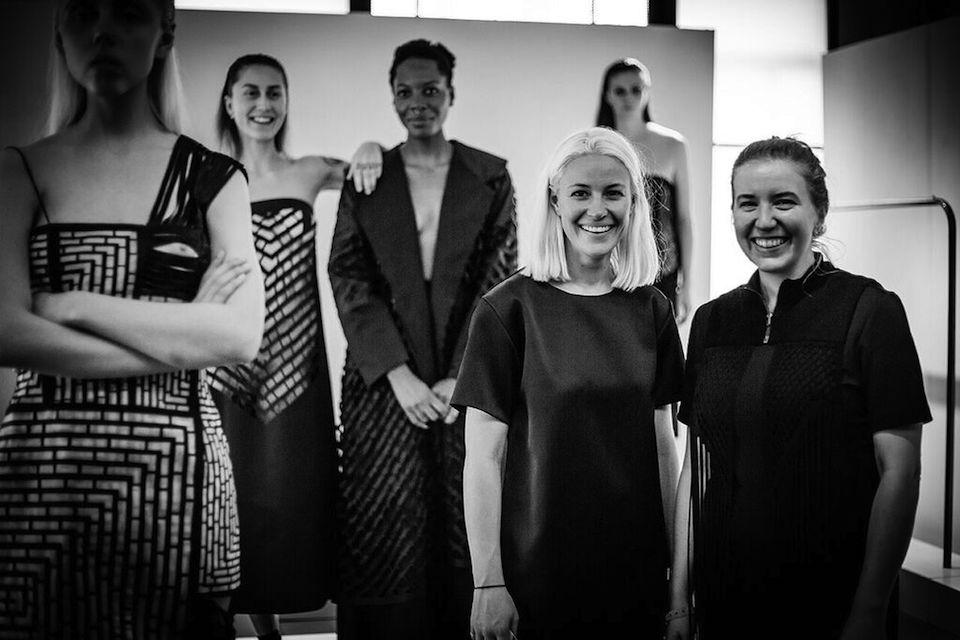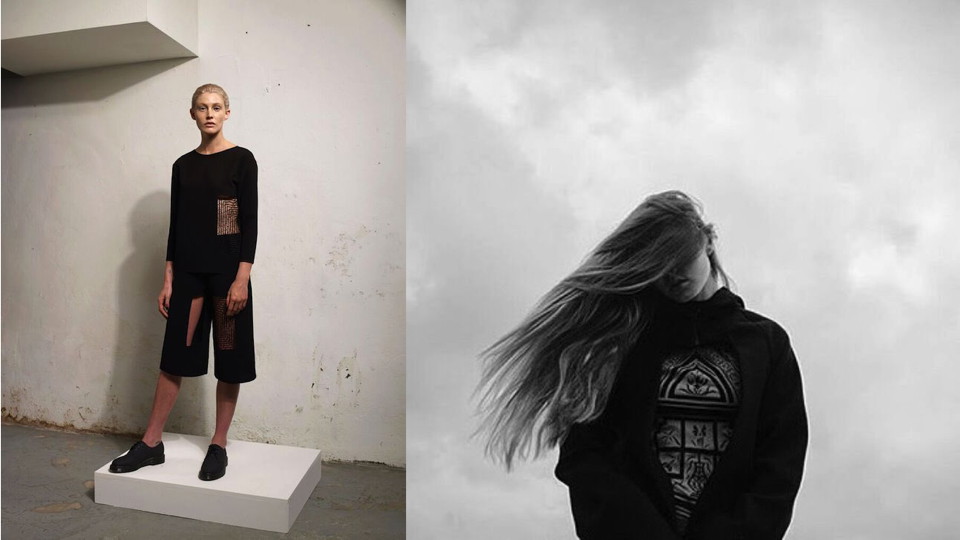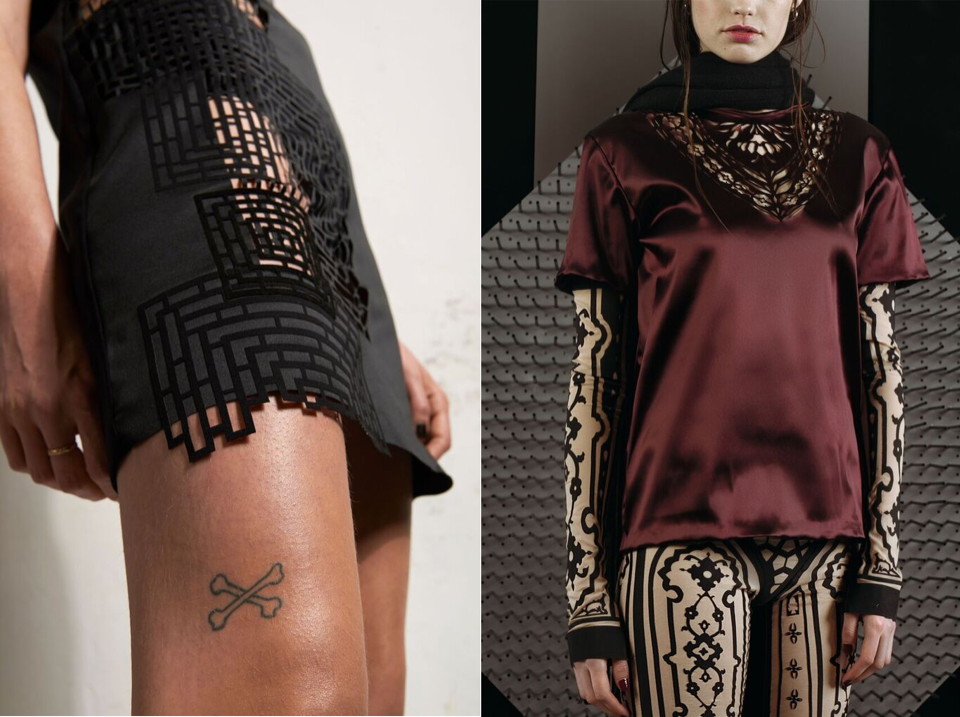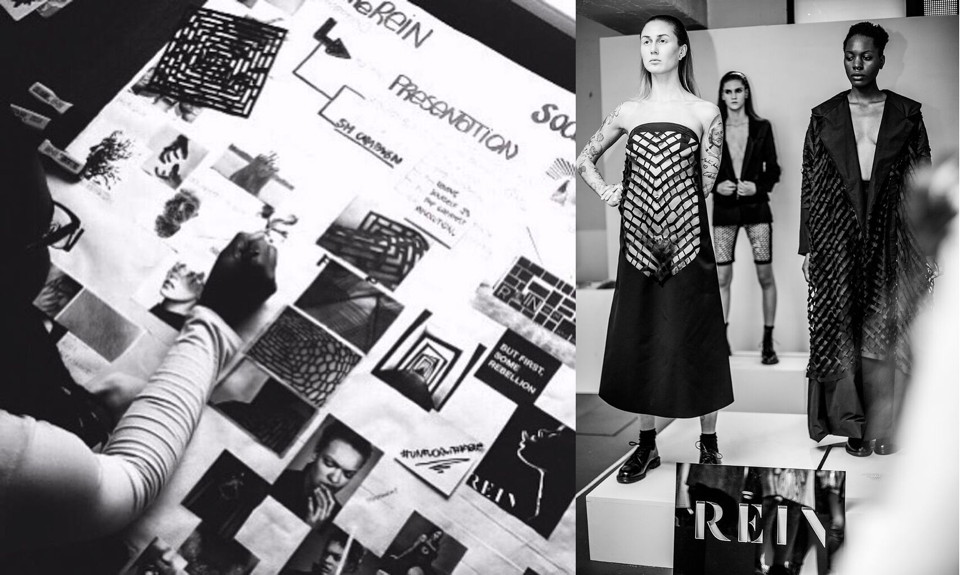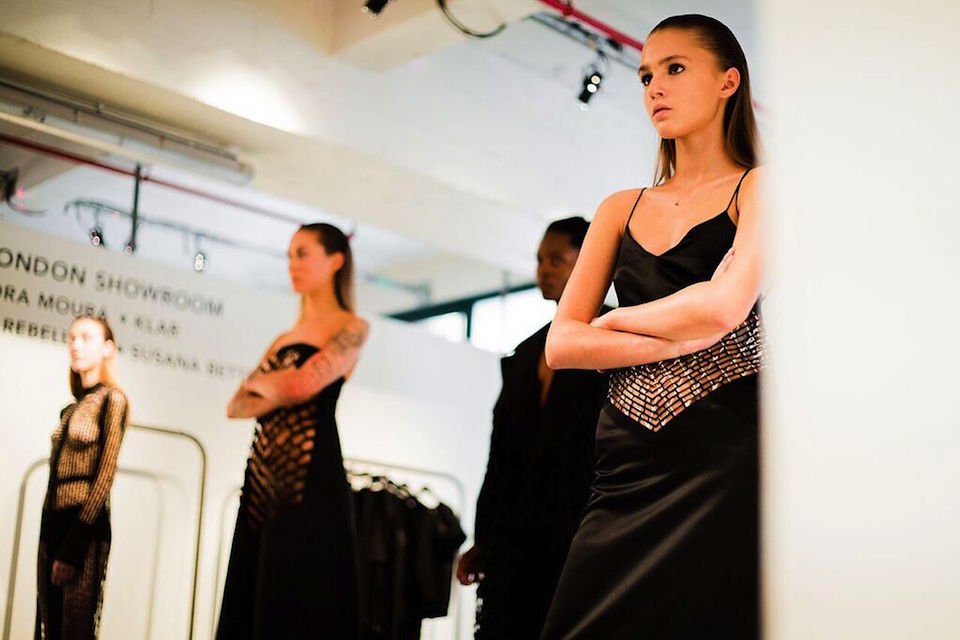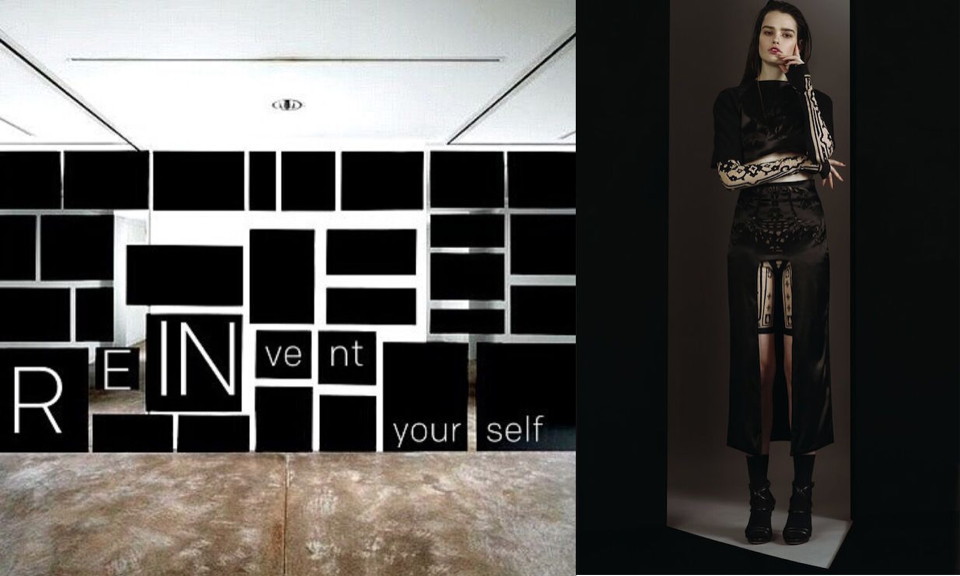FASHION STATEMENT
soma by agnieszka szreder
Designer - Agnieszka Szreder
Designer Agnieszka Szreder created Soma as her graduation project at School of Form in Poznań, Poland. The Soma collection excises of three pieces of clothing, that are designed to help control one’s behavior in a stressful situation. It practices carefulness and making one award of the body on the most basic level. Soma is for a unity of the personal body and mind. Szreder designed the clothing collection to make people aware of their bodies through their construction and selection of materials.The inside of the clothing pieces is made out of different inserted fabrics that provide various stimuli. For example, cold and slippery materials contrast the thick, comfortable foam, which was used to create the rest of the garment.a“When the person wearing the outfit makes involuntary, unconscious gestures, such as crossing arms or legs, the different texture of the material on the inside will make him or her aware of his or her motions. Their mind will follow the movements of the body, which is often quicker to send us signals.”
Designer - Agnieszka Szreder
honest by. Y/PROJECT
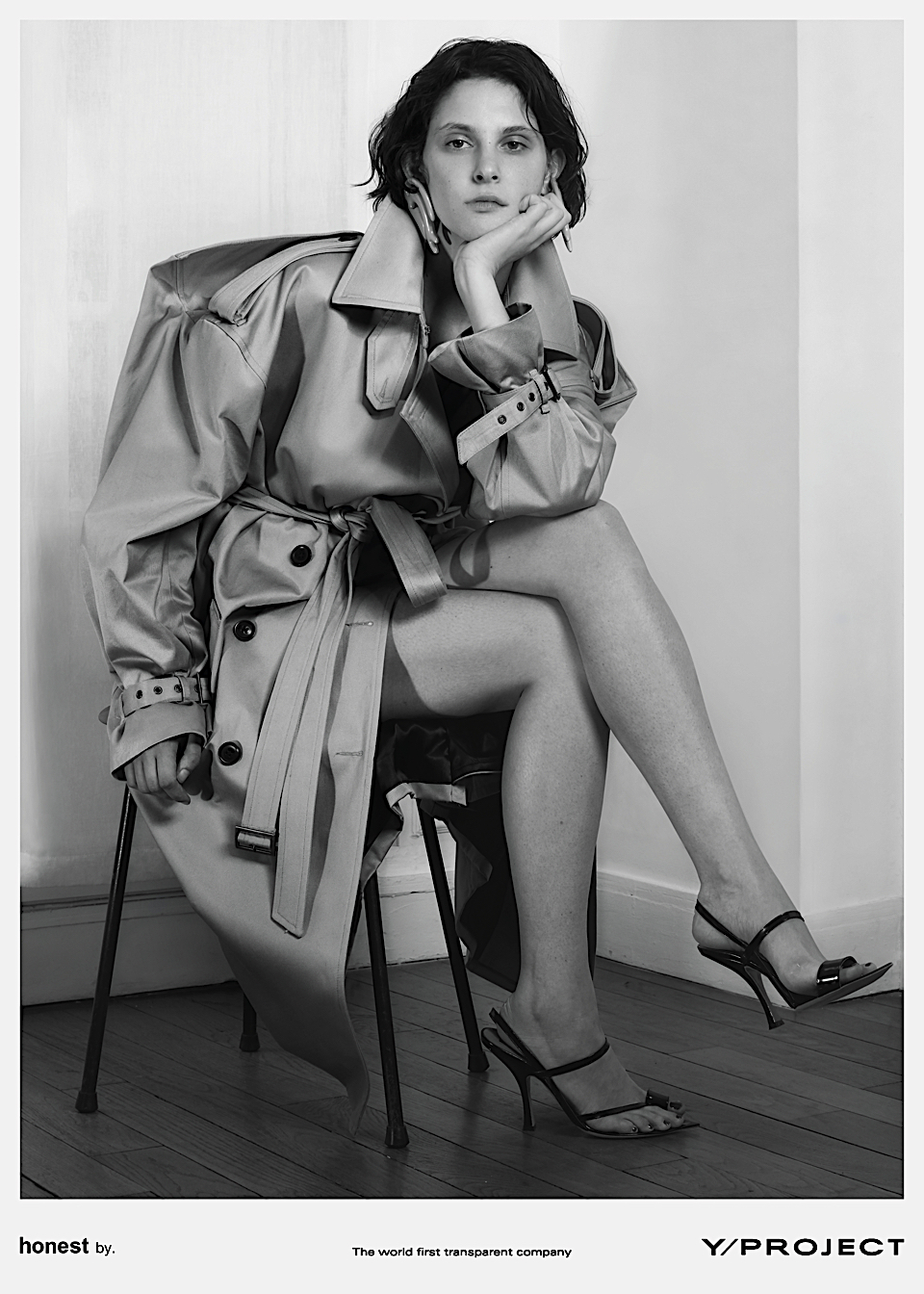
Photo by Arnaud Lajeunie
Bruno Pieters, Belgian fashion designer and art director highly regarded for his avant-garde creations and sharp tailoring, believes that “fashion is about beauty and that the story behind fashion can be equally beautiful”. Pieters had been successfully working as creative director and as a designer from 2001 to 2010.
In 2010, he decided to take a sabbatical and until early 2012 he travelled through India. His experiences in the subcontinent had a radical affect on his outlook on life. He became increasingly concerned for the environment, animal welfare, and children’s causes.
In January 2012, he returned to make what Oliver Horton in The New Your Times described as a “revolutionary” new statement in the fashion world with his new company, Honest By - the world's first 100% transparent company and pioneer in price transparency. Honest By publishes its entire supply chain for every product it creates and translates this into total price transparency.
This is a real statement in the fashion world and give us the hope that the whole industry could be more transparent and respectful.
Honest By’s new collaboration with Paris based label Y/Project just launched on October 19th 2017. We are happy to share with you Bruno Pieters’interview with Y/Project Creative Director Glenn Martens.
Bruno Pieters: Congratulations on your latest show. I thought it was majestic in every way. There were so many intricate details and unexpected combinations. Great work. What part of the process do you love most?
Glen Martens : Thank you! Coming from you, this means a lot! I am extremely spoiled. In all those years at Y/Project I never dreaded going to the office once. I love my job and this means I love every single step of the process. It definitely also means I love working with my team. I know it's extremely corny but it’s been a great pleasure and a huge honour going through all of this together with them.
Why did you accept my invitation to create a collection for Honest By?
I have followed Honest By since its launch. To me it has always been one of the most ground breaking luxury brands in the industry. A lot of young, so called hype brands, are claiming they want to change fashion or break the industry. But only Honest By has challenged its core and has addressed that which really matters.
Thank you. Were you or Gilles (Gilles Elaouf is CEO at Y/project ) ever concerned about Honest By’s 100% transparency policy?
Our Paris office counts 20 people, we have 15 different nationalities in our studio. We’re producing in many countries in- and outside of Europe. Each country has its specialty. Europe has lost a lot of its craftsmanship over the last few decades. I visit every single factory we work with. Because I want to know who is sewing my designs and of course I want to know for sure that the working conditions for every single person behind this brand are good. It’s been a wonderful journey and the people making our products are very proud of being a part of our story. I’m just as proud of the clothes that have a “made in Tunisia” label than the ones that have a “made in France” label. We have nothing to hide.
That’s wonderful. I think there is nothing wrong with “Made in Tunisia" or Romania… either. What I find disagreeable are luxury brands who produce in Tunisia or Romania but have their workers sew in a “made in France” label. But I’m sure that will change once the customer becomes more aware of this. For me, sustainability minus transparency equals fantasy. It’s basically hot air in my opinion. I believe it is crucial for the customer to have all the information about a product so they know exactly what they are buying. But I know it might be difficult to be open up about everything. Was there a challenge in this collaboration you didn’t anticipate?
We’ve always been straight foreword. Transparency is not an issue. Summing up every single button, listing down every single step of the process demands more logistic effort, but it wasn't that hard in the end.
I’m glad to hear that and I’m very happy with the result of this collaboration. So many people still want to make transparency seem unrealistic. But I guess when you have nothing to hide it isn’t so hard to do. I want to know more about the beautiful images you made with Arnaud for us. What was the inspiration for the Honest By Y/Project campaign?
The campaign is about honesty. My friend and long time collaborator Arnaud Lajeunie wanted to shoot the campaign in a very honest and transparent way. We took the clothes, called up Franziska, our model and friend, spent an afternoon at Arnaud’s house drinking, eating, smoking, talking and shooting. There was no make-up, no hair, no set, the whole process was very natural, spontaneous. It felt as if we were just chilling at home.
The result is beautiful and so elegant. You have found a great ally in Arnaud. And in Ursina of course. They are both very positive people. When I met them I was glad to see that they both really have your back. A question about the business now. You have singlehandedly grown Y/Project into a business with a 5 million annual turnover. How important are numbers to you?
It’s never been a one man show. Half of the credits go to my business partner, Y/Project’s CEO, Gilles Elalouf, who believed in me and gave me the chance and the platform to build this story. Furthermore I put a lot of trust in my team. This business is all about teamwork. The numbers indeed keep on growing. The pace can be quite destabilising at times but I try to focus on my work and have fun at the same time.
In the past you have said that it was difficult for you and your team to work with GOTS certified (Global Organic Textile Standard) fabrics as the quantities for such materials were very high. Is that still an obstacle today?
We are including GOTS materials into the collection. As not all of our fabrics are certified yet, we are not communicating about it at the moment.
That is great news. Personally I believe being honest is more important than being perfect. But I understand what you mean. Where do you believe you have made improvements over the last few years when it comes to materials? What are you proud of and what do you want to improve still?
When I took over Y/Project 4 years ago the collection consisted of about 80% leatherwear. Even though leather is part of our original DNA, you won’t find one single leather piece in our last womenswear collection. We’ve also been using a lot of linen. Belgian linen. One of the most environmental friendly materials. We even managed to include linen in our footwear. I’m definitely trying to be more eco-friendly and consistent in our fabric selection.
That is an incredible accomplishment. Ever since you were a student you have also been strongly opposed to fur. That also meant that as a young designer you had to refuse sponsorship from SAGA furs or the Belgian Fur lobby (the infiltration of the fur lobby in Design schools is still legal in most countries around the world). What made you say no to that kind of support?
I always thought fur to be extremely beautiful. It is also a very fragile product which requires a lot of care. I therefore believe it is a totally dated product. The beauty doesn’t make up for the cruelty which goes together with the production of such garments. We do sometimes use leather and I won’t say we’ll totally stop using leather in the future. We are careful in selecting our tanneries and try to use leather in timeless pieces which have a real day to day value. I own a leather jacket myself. I have it for about 15 years now, I wear it all year round in all sorts of situation and it still looks perfect. In winter I wear my grandfather’s shearling coat. There is something sustainable about wearing the same piece for decades and than eventually pass it on to younger generations. It’s therefore imperial for me to aim for quality and not support cheap leather products from big chains. We sometimes do use a fake fur in some of our showpieces. Critics might say fake fur is polluting too. But I also believe fashion can be about flirting with art. Art will never fill in the basic needs of survival and is therefore always polluting in a way. I recently read an article where it was mentioned that studies showed that the impact of a mink coat on our environment is three to ten times (depending on the design of the coat) higher than the impact of a faux-fur coat.
Do you feel schools such as the Royal Academy in Antwerp or La Cambre in Brussels should make a greater effort in supporting young students who want to work in a responsible way?
School is about educating the next generation. I believe it’s a pedagogic duty to teach how to take better care of our planet.
Did you ever feel like an outsider when you were studying at the Royal Academy of Fine Arts in Antwerp?
Everybody in my year was extremely independent and colourful in their very own personal way, meaning we were all kind of outsiders. I’ve always loved diversity. I feel very comfortable in eclectic surroundings. School was good!
What are your hopes for the future?
If you see how talented human kind is at destroying this planet I just hope there really is a future.
What is for you the most interesting era in human history? And why?
All of them, I love history. It’s extremely fascinating to me to see that every single thing we do is conditioned by thousands of years of independent stories.
What do you wish you could sustain?
Tolerance.
How ‘green’ are you in your own life?
I try as much as I can. I’m the kind of person who prefers to wear layers of clothes at home in stead of putting on the heating. And even though I love eating meat I try to ban that industry from my life. I am vegetarian in weekdays. I allow myself some meat during the weekend only and I will pay more to enjoy an organic and local steak.
Both your grandparents were in your A/W campaign. What have you learned from them that you will cherish for the rest of your life?
Unconditional love
Thank you for this interview and thank you for shining new light on the work we do by accepting my invitation.
Thank you.
You can read the original interview here
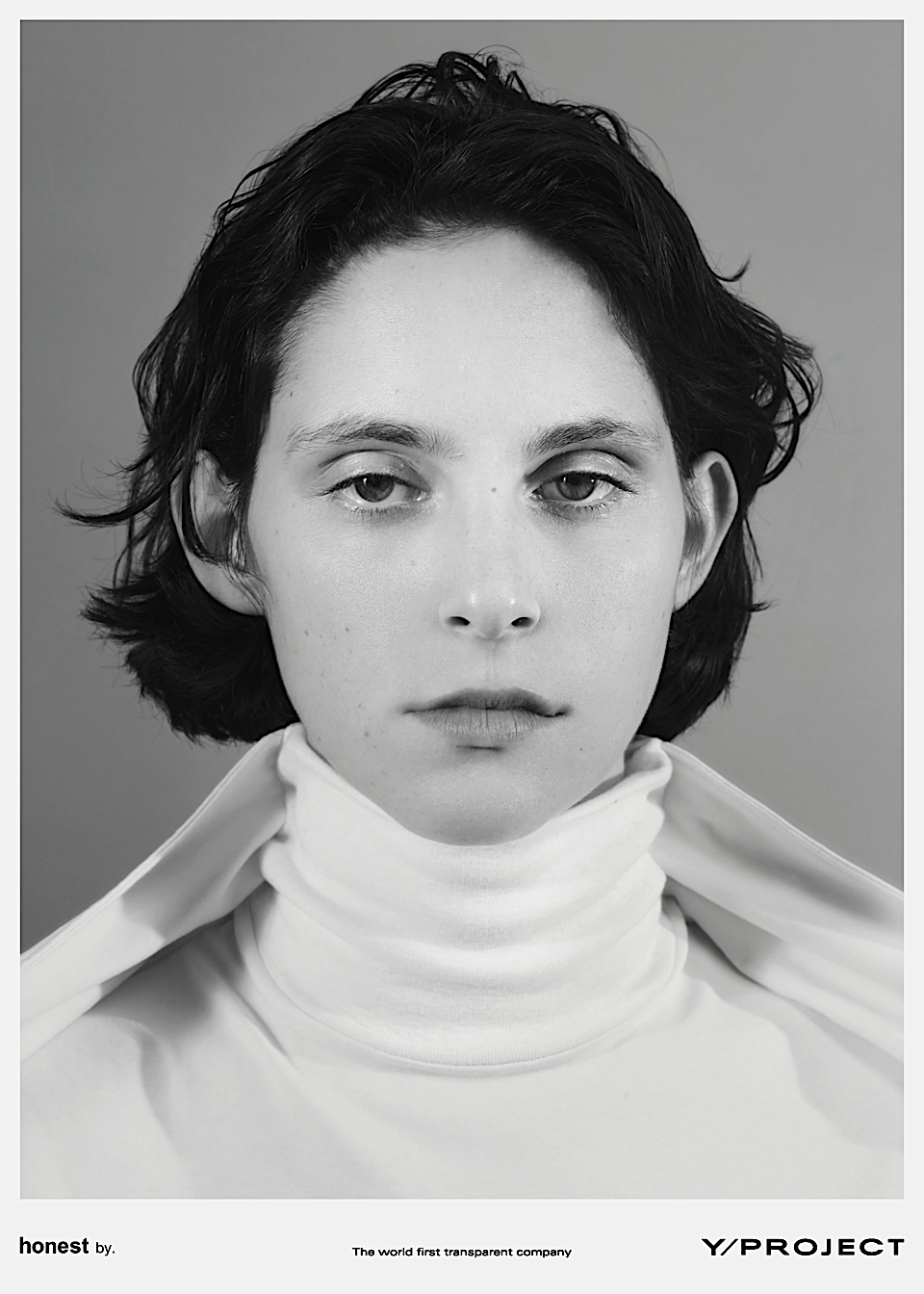
Photo by Arnaud Lajeunie
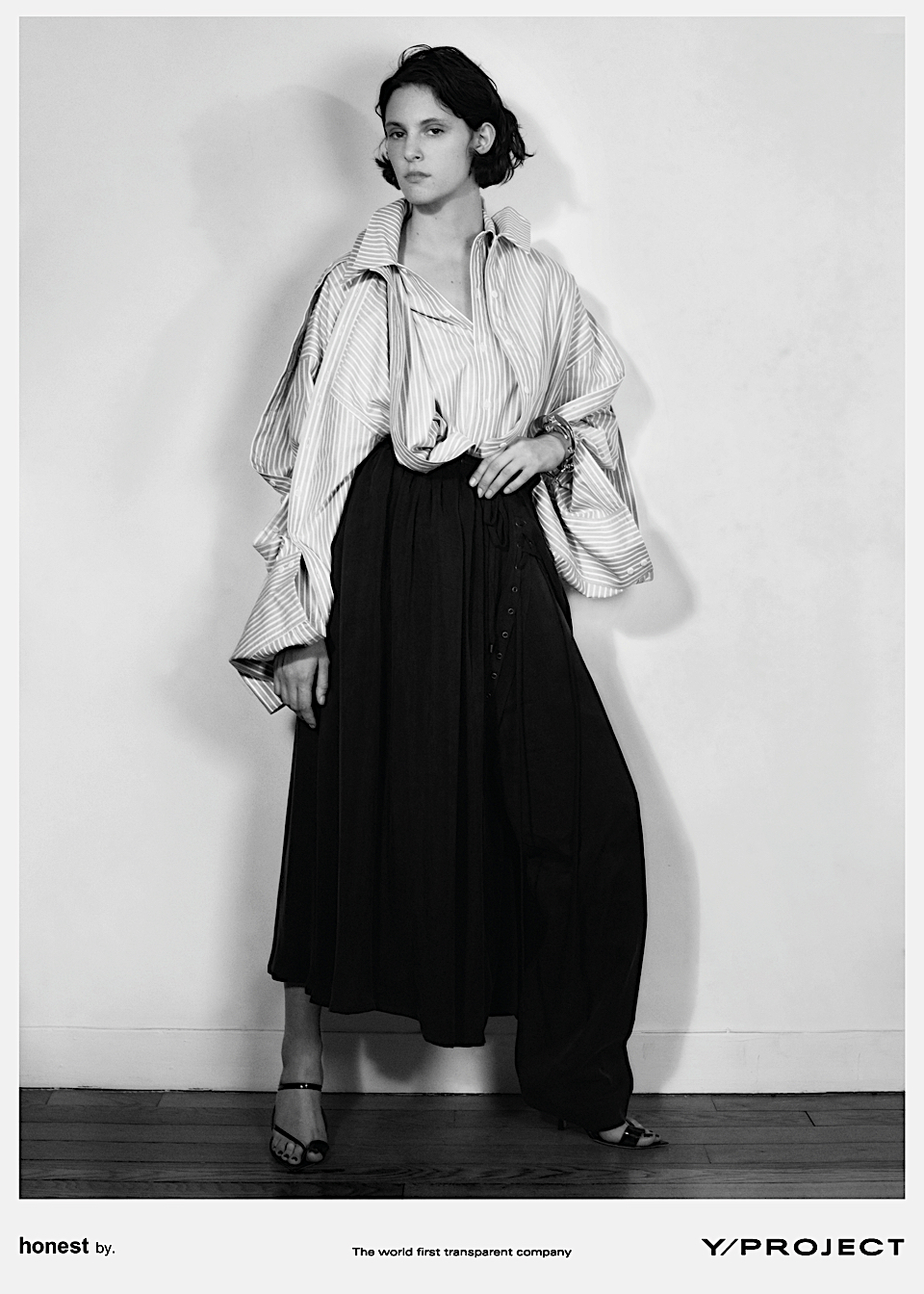
Photo by Arnaud Lajeunie
exploring the clothing of Pal Offner

It’s a specific kind of pause. The moment between undress and dress; the lapse amid the state of nakedness and that of becoming clothed. Some orchestrate their attire consciously, hands grazing the garments that hang quietly in their closets, eyes interrogating each cuff, hemline and stitch. Others pay no mind, stepping out in a far more subconscious style. But to get dressed is never an act unto itself. Rather, it is a gesture of who we are, or at least, of whom we’d like to be.
Two women who appreciate the power of this sartorial symbolism are Sabina Pal and Nele Offner. Inspired by their shared desire to perfect the look of imperfection, the duo founded Germany-based PAL OFFNER, a label designed for those interested in defining their own limits, unimpeded by the cultural restraints of gendered fashion.
From a small studio located by the woods on Bopser Hill, south of Stuttgart City, the duo work in close tandem, remaining hands on from the very first design to the very last fitting—Offner as the creative heart; Pal the strategic head. In a purposeful disruption of strict design disciplines, the label’s collections are characterised by the use of cut edges, creased materials, and handmade finishes, the art of deconstruction juxtaposed against more classic tailoring; an experimental play on polarity.
Made in Europe from singular, high quality materials—sourced from Italy and Ireland—each piece is designed for neither man nor woman, but rather, for a collective of individuals united by a similar state of mind.
« We are addressing people who are free spirited…and independent from social constraints. People who know who they are and feel good about it. We like strong personalities who impress others by being true to themselves, rather than trying to fulfill expectations. »
For Pal and Offner, nothing is more appealing than those shamelessly at ease with who they truly are, a trait achieved not by dressing how you’ve been told to dress, but by dressing how you feel. Their clothing honours individuality, allowing for an authentic aesthetic as opposed to a style that is highly staged and, consequently, completely superficial. Comfort is thus a crucial component to each design, seen in the versatility of every collection.
« Everyone should - be able to- dress the way that is closest to what the person feels, and that means making the wearer comfortable… we try to offer a range of cuts and designs that allows you to alternate between what are socially called ‘feminine’ and ‘masculine’ designs. »
In a time where personal style is too often dictated by external influence, it’s never been more important to consider why we dress the way we do. While it’s no sin to obey the tacit dress codes of conventional men’s and womenswear, it is sometimes worth questioning the authenticity of our allegiance. By pioneering gender-neutral clothing in the 1980s, Japanese designers Yohji Yamamoto and Rei Kawakubo did just that; their collections a symbolic challenging of old organised sartorial systems.
PAL OFFNER’s work encompasses a similar philosophy, one that invites the wearer to decide how masculine or feminine they would like to be. When asked about the advance of the gender-neutral fashion movement, and what it says about the world we live in, Pal and Offner praised the digital revolution, and its role in the emancipation of gender equality.
« It strengthened authenticity, honesty and straight-forwardness in our society… It’s great to see how people make use of eliminated demographic boundaries to find like-minded people; this helps our society to evolve in a more and more open-minded way. Because a world lead by rules in the wrong sections can be very wrong, and is definitely boring. »
Distinct from “on trend” offerings featured in the pages of glossy magazines, PAL OFFNER garments can be more easily likened to blank canvases, typified by greys, blacks and whites. For Pal and Offner, this neutral palette draws attention back to the design, and to the person. The generous nature of muted hues allows the wearer greater freedom to mix and match each piece, to better achieve the look that they feel suits them best. In the words of the designers themselves: there is nothing that doesn’t express something.
« - Even - If you put up a blank canvas on your wall, you are still expressing something… »
The important thing is not what you have expressed, but rather, the freedom you had to express it at all, unswayed by industry trends and societal expectations. Perhaps this is why the anti-fashion movement appears to be the driving force behind Pal and Offner’s process. When asked what most influences their work, the duo admits that Yamamoto and Kawakubo have provided ceaseless inspiration. It makes a lot of sense. The clothing first shown by the controversial Japanese designers in the 1980s represented a departure from all long-held Western conventions of fashion; PAL OFFNER has unapologetically done the same.
« This new - anti-fashion - approach to design, meaning to make yourself free from the usual shapes, gender aesthetics and trends, created the basis for what our brand is built on…Yamamoto and Kawakubo are very inspiring designers and thinkers for us. »
This affinity with the avant-garde is evident in Pal and Offner’s artisanal process. The intimate nature of their operation allows for designs uninfluenced by global seasonal trends or commercial agendas. While many labels play it safe within the confines of forecast colours and standard silhouettes—doing what has already been done before—Pal and Offner’s designs are informed by a far more organic source.
«- We’re inspired by - life. Holding eyes open when you are outside. When you ride the bus, walk the streets… or see the growing shadow of a bridge that looms on the rough surface of tar streets. It’s observing. »
Every PAL OFFNER collection is the result of this cultural osmosis, each stitch sewn from the remnants of a purposeful daydream. Their garments summon that specific kind of pause; the one that rests amid the state of nakedness and that of becoming clothed. To get dressed in PAL OFFNER is not an act unto itself. It is a shameless gesture of who we are, an effortless statement of who we’d like to be.
Kathryn Carter
Photos by Marija Heinecke
www.paloffner.de
Kathryn Carter is a writer based in Sydney, Australia. Favouring inquisition into contemporary fashion practices, Carter employs investigation that is based on human character and unique artistry.

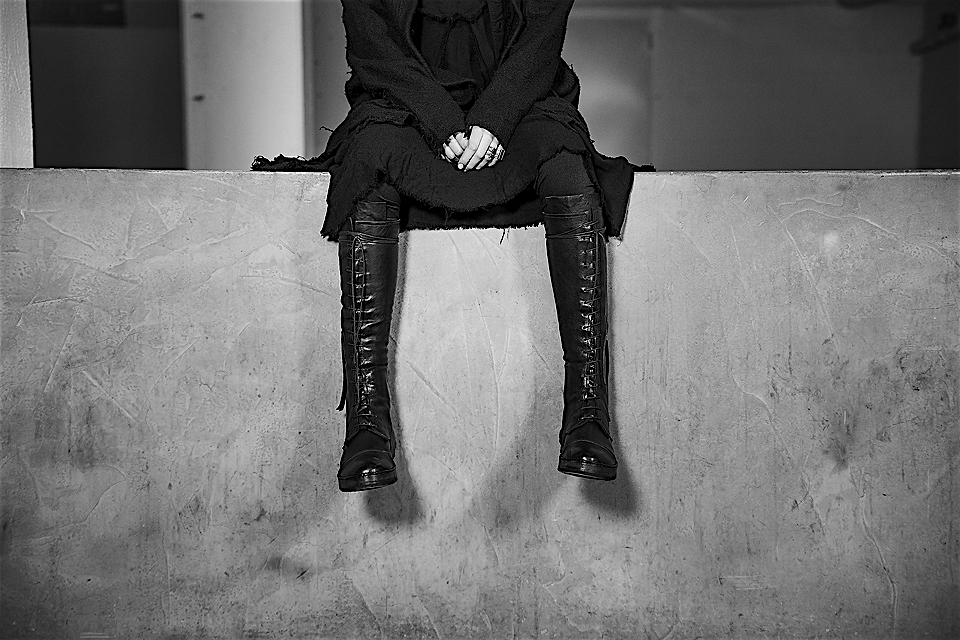
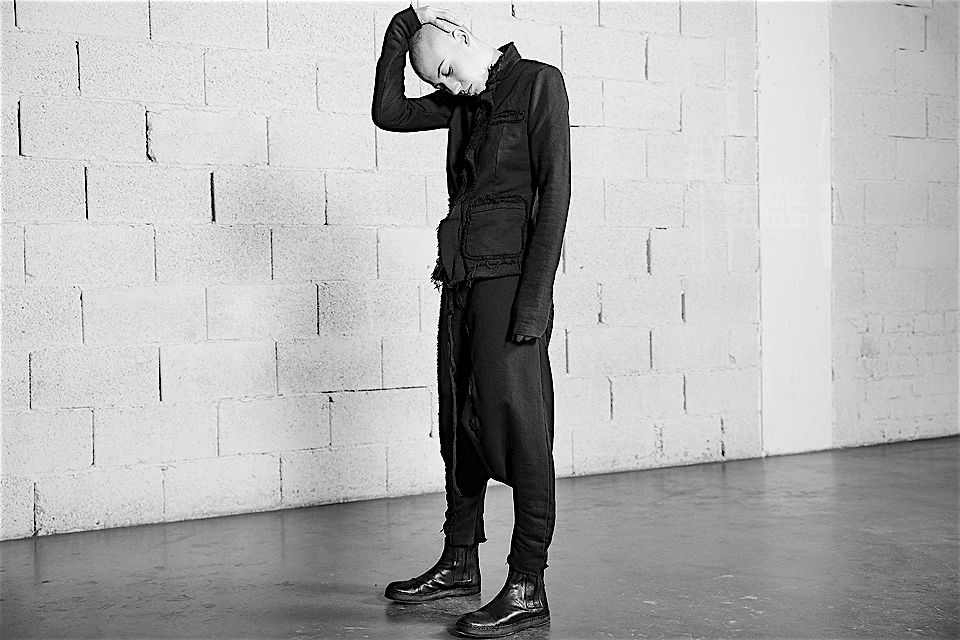
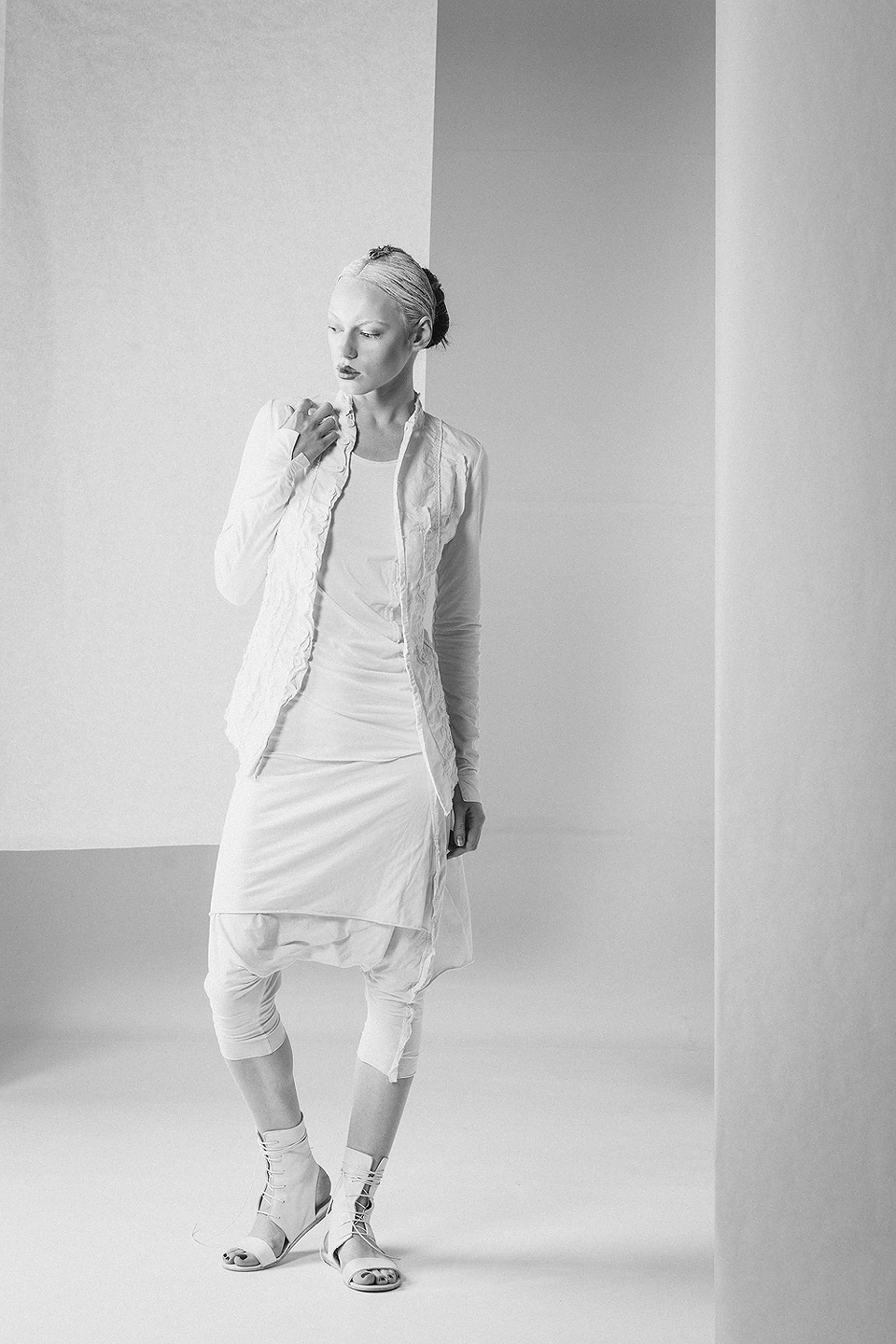
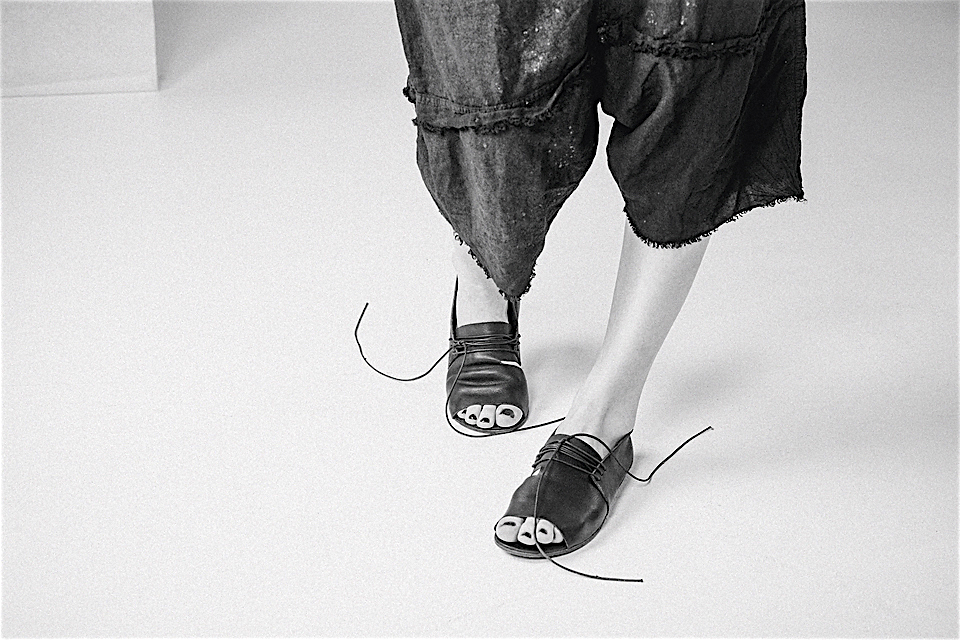
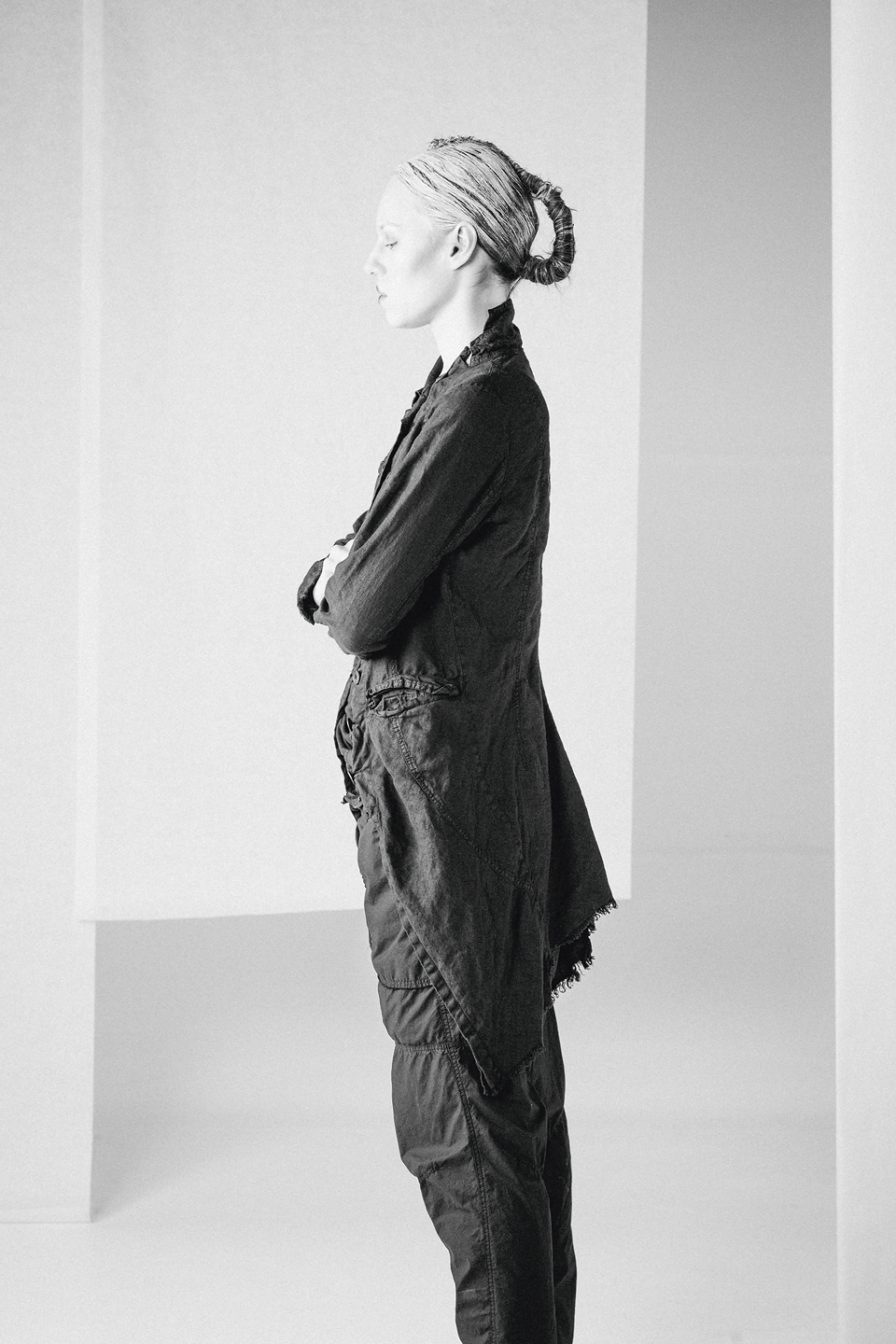
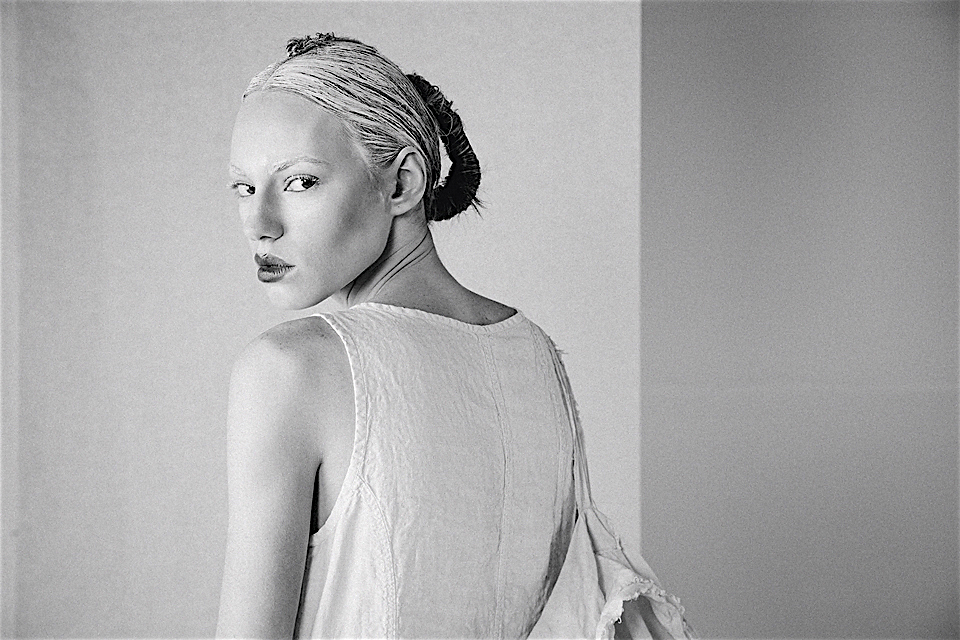
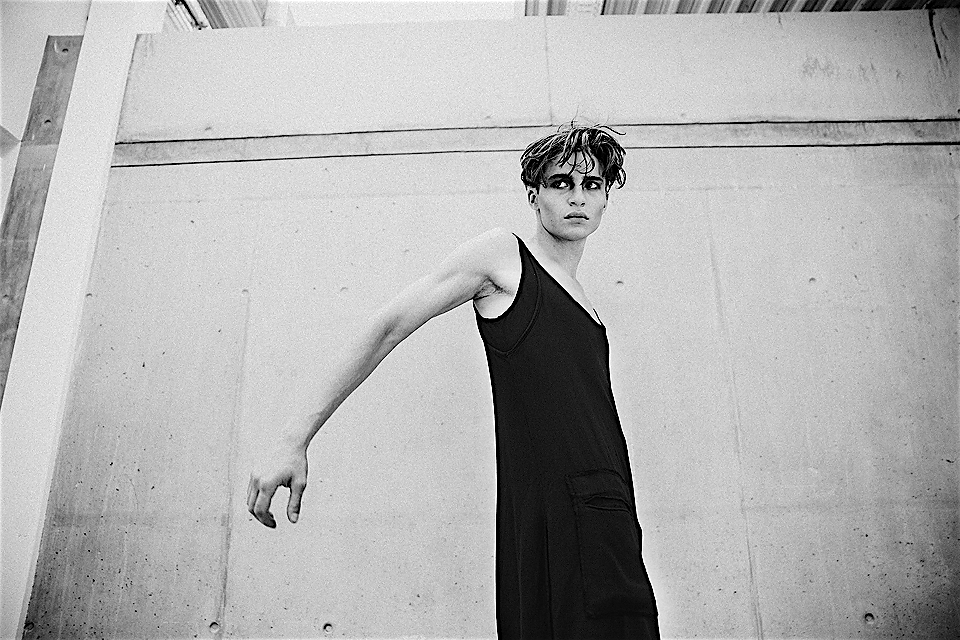
bamboo

Arthur Groeneveld and Bamboo van Kampen - Arturo Bamboo, a photography duo introduce their new summer photography book as well as beach label BAMBOO: new & vintage pieces inspired by their travels. For you to to know them better we had an interview with them:
Why did you decide to start up a beach brand?
During our trips, we noticed we were looking for some key summer items and felt there was something missing. We either came across very expensive resort collections or tacky tourist stuff. What we were looking for were simple, timeless, qualitative but still affordable items. Last year, we decided to create these ourselves!
Where did your inspiration for this beach brand come from?
As we both grew up at the seaside, the beach and the whole lifestyle around it, is our main inspiration. Beach life hasn’t changed over the last decades, it is still about enjoying the simple pleasures of life: good food, reading a book, getting a tan, enjoying the company of friends and family or just simply doing nothing - something rare these days.
Did your photography affect the brand?
Our photography of legendary summer resorts was key in getting the right mood for the brand. We documented a certain lifestyle and try to bring this across in both our imagery as well as the brand. We shoot everything analogue, ideally on expired films which fit to our love for a bygone era and combine this with a more contemporary feel. Our summer book filled with images from across the Mediterranean functions in this way also as a sort of lookbook for the brand.
We consider ourselves outside of the fashion system as we won’t work with collections or seasons. The range of products is currently a mix of new and vintage pieces. While the vintage pieces are unique one-off’s, we keep the new products simultaneously available at any given time as we consider them instant classics - a good example is the oversized cotton beach bag. This is a democratic product: it really looks good on everyone!
How did you pick up the points of sale?
We’d like the idea of buying a unique piece in a cool little beach boutique to be part of the experience. Last May, we went on a road trip from Barcelona to Napoli to personally visit small-scale boutiques in places such as Cadaques, St. Tropez and the Amalfi coast. We established a personal relationship with boutique owners - for example at Le Club 55 - and our proud to have the brand featured in these legendary places.
Could you give us a glimpse into the future of the brand?
Currently, we’re working on new items such as the ideal beach towel, a classic white t-shirt and a laid-back summer dress: pieces you can keep forever and you want to take on every trip.












carcel
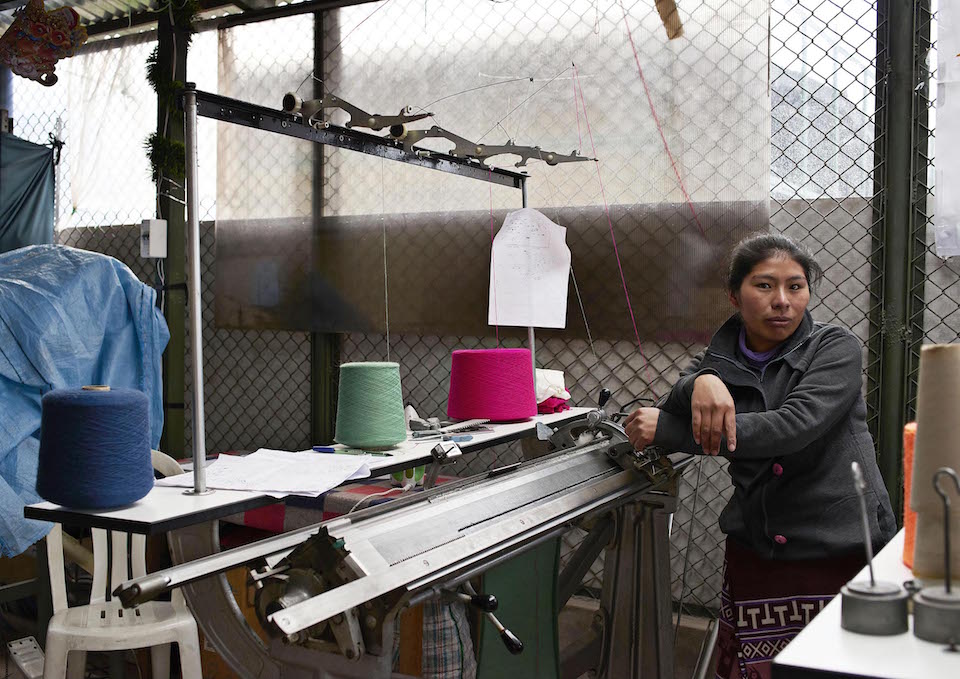
Sustainability, Slow Fashion and Considered Design are all words that define Carcel. The Danish brand is a new type of fashion label where each item is produced in a woman’s prison. Carcel wants to transform lost time into fair wages and give woman new skills and hopes for a better future. The brand doesn’t beat around the bush with its name, which means prison in Spanish. They drew inspiration for the name from the location where they started their first production in Cusco, Peru. The adventure will continue in Thailand where they will manufacture their new collection in women prisons made of the local silk.
Can you tell us about the journey from the moment you got the idea to the collection that is available now? How did this process go and how long it take to start Carcel?
Carcel was founded in April, 2016 by Veronica D’Souza but the idea to provide fairly paid work to female prisoners was first sparked a couple years prior in Kenya where she had the chance to visit a female prison in Nairobi.
She found that the majority of the women were incarcerated due to poverty related crimes. They had a lot of time on their hands and spend a lot of time crafting small items already. However, they are not earning a steady income, as they do not have knowledge about market demands or any real access to sell.
Back in Denmark Veronica partnered up with designer Louise van Hauen who is the woman behind Carcel’s designs. Scandinavian design and the intersection between high rates of female incarceration and high quality materials with sustainable attributes, such as local sourcing, became a cornerstone in building Carcel - and so starting production in Peru was a match for the two women.
Producing high quality garments in a women’s prison in a South American country with no major existing production set up can be challenging. Throughout our journey we have been in the fortunate position that the official Peruvian prison system has been very positive and helpful towards our idea, and we established an official partnership with them when we started our production in the women’s prison in Cusco.
How do you start collaborating with a prison?
We contacted the official prison system in Peru and soon planned the first trip to go meet the authorities and see some the prisons. The Peruvian prison system has been very open towards the idea of providing better opportunities for work for their female inmates. There are already some existing productions within Peruvian prisons, but this is mainly within male prisons, as men are still considered the main provider of the family.
Did you pick the location for the collaboration because of the local materials you wanted to use or because of the woman’s prisons?
Both. We choose countries that have high rates of female incarceration as we see this as the best way to help the most women long term. At the same time these countries have to be accessible in terms of collaboration.
When considering materials we want to be able to source locally because this makes transportation to our production site in prison less complicated. At the same time we benefit from the local know-how and heritage within materials – as it is the case with Peruvians and alpaca wool. We chose alpaca wool due to its amazing properties and sustainable attributes as well as the fact that it is deeply rooted within the Peruvian culture.
Even though Carcel is breaking the spiral of poverty with this collaboration you don’t think it’s a risk, as the consumer might not want to be related to detainees?
On the contrary, we feel a big interest from people in understanding these women. We’ve experienced a great interest and sympathy for the women’s situation as the majority of the women in Peru are incarcerated due to non-violent poverty related crime. We believe in the fact that the women are already serving time, which means we do not have to judge them once again. If they wish to work and create the prospects of a better future for themselves, we would like to provide them with this possibility.
Carcel is a storytelling brand. On your website you literally have personal stories from the detainees. Is this because you want to be as transparent as possible?
Yes we think that it is very important to know where your clothes come from and would like to bring forward the face and story of the women behind the garments. This is also why you will find the name of the woman who made your specific item inside your clothes. The women take pride in their work just as we take pride in them and the fact that they try to change their future for the better.
Is Carcel also thinking about jobs in production for the woman when they come out of prison?
Right now we are focusing on the women who are inside prison. As they are sentenced to do time between 8-15 years we found that this is precious time where many of the women need to stay occupied for the sake of their mental health and the profitable aspects of supporting not only themselves but also help their children and families from the inside. With the women coming from all over Peru, their main goal is to be reunited with their families and move back to their respective villages upon their release. We hope to be able to prepare them as much as we can, using the technical skills they have learned and the money they have been able to save to confidently reintroduce themselves back into society and new working environments.
Claire Granlund
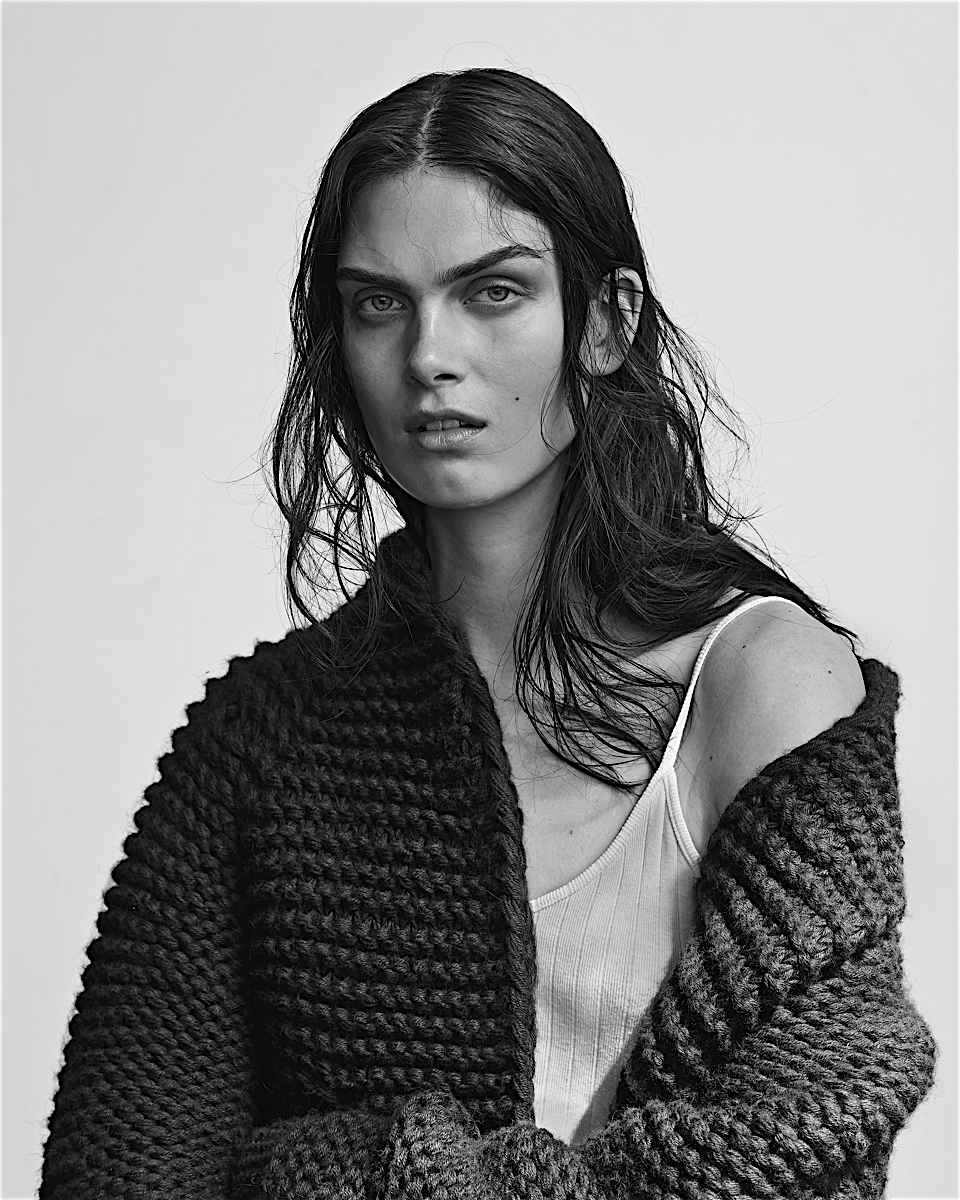
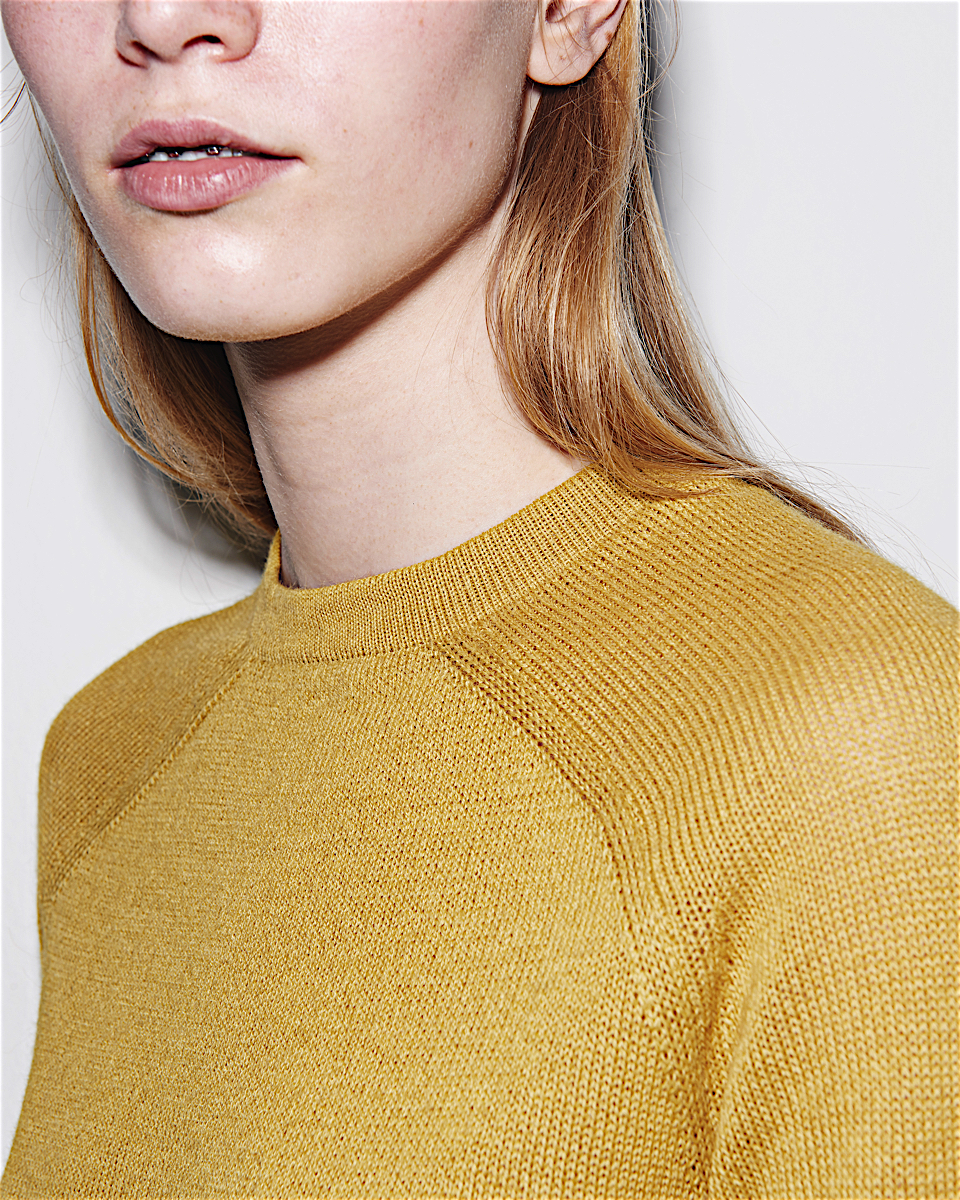
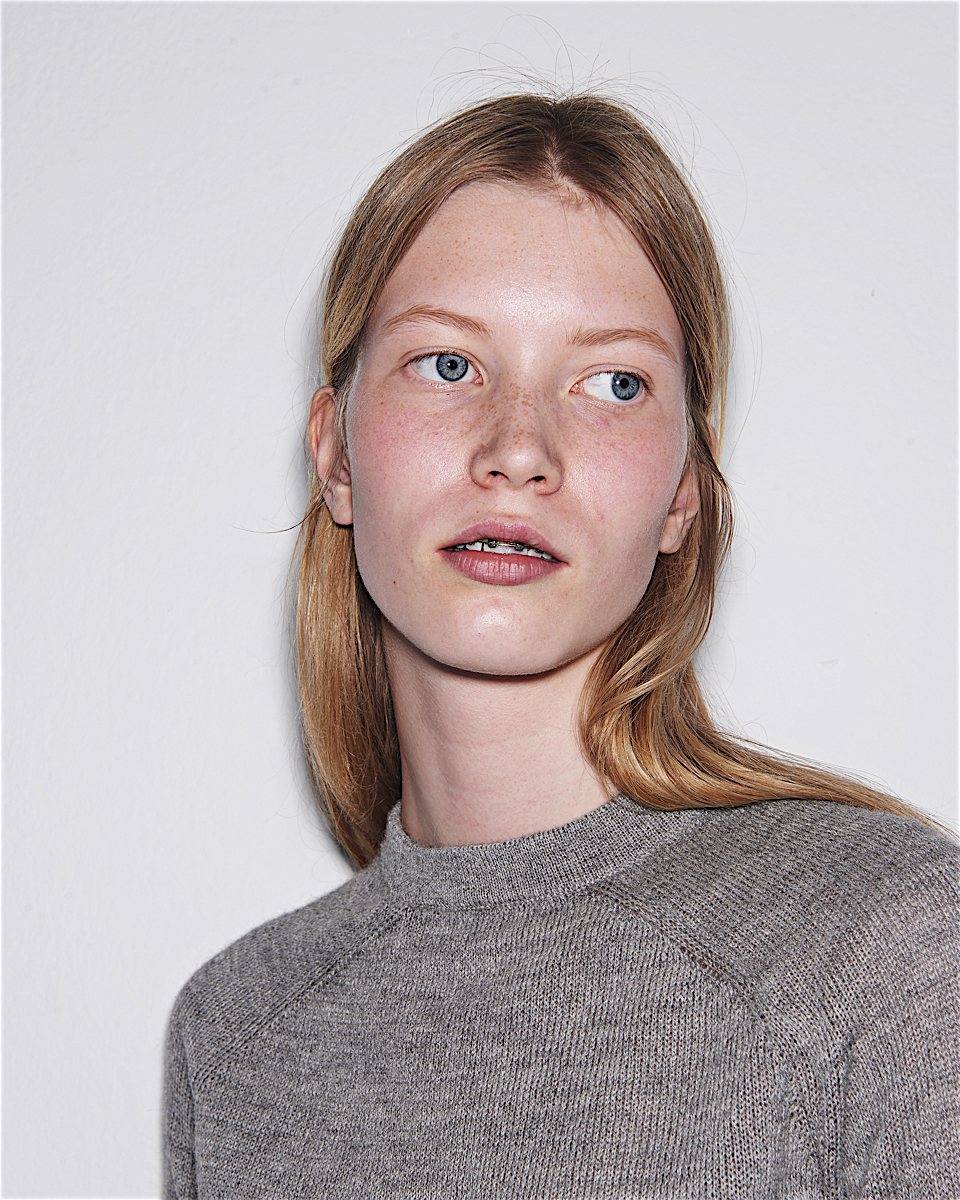
porter classic
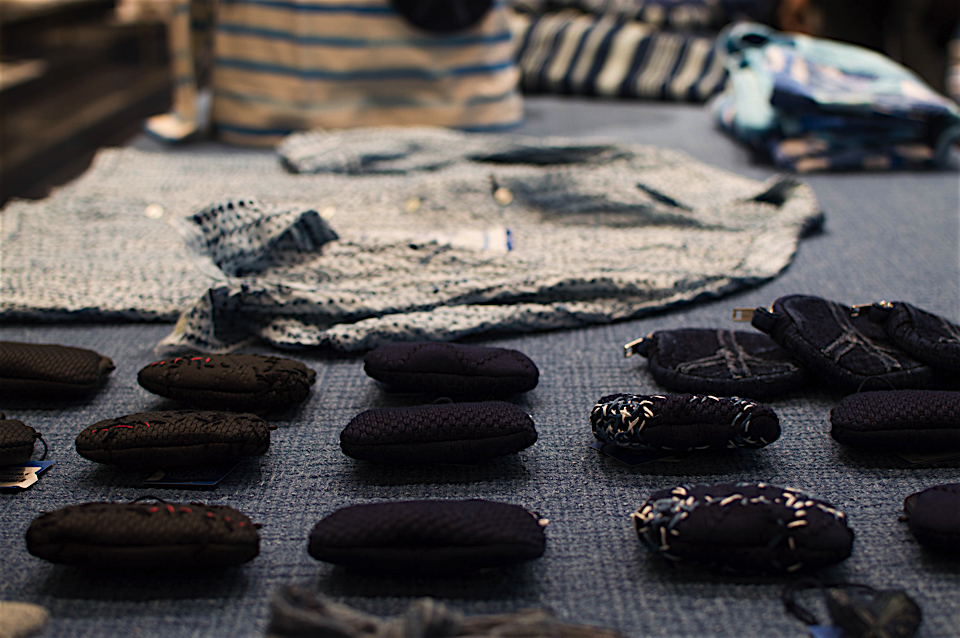
During Men’s Fashion Week I paid a visit to Isetan Mitsukoshi The Japan Store in Paris. The store provides a chance to the new generation to experience Japan by sharing their unique blend of Japanese lifestyle, culture and design.
It was the presentation by Porter Classic that caught my attention; the denim brand translates the expertise and the Japanese culture in every item that is created.
In 2007 Katsuyuki Yoshida founded the so-called slow fashion brand together with his son Leo Yoshida who also does the design of the products. Born in the Tohoku region they found the necessity to create clothes to protect from the cold. This is also the reason why the old Sashiko technique was invented to reinforce fishermen’s clothing. The technique translates to little stabs and is a form of decorative functional embroidery. Nowadays the technique is often purely used as ornamental purposes in quilting and embroideries.
When the designers started the brand they used ancient clothes, some of them were even 80 years old. Like an architectural renovation project they cleaned, treated and restored these items with care to create unique garments. In hope to inspire future generations the brand is using the Sashiko technique to create their pieces.
For every season the brands quality is to focus on soulful pieces that keep gaining beauty and character as they age. Due to the complex process they are only able to produce three to five jackets per year.
Next to the fact that the items are basically genderless, the pieces can be seen as couture because of how every item is hand embroidered and unique. The brand Porter Classic portrays as a true family business by using all family members for their look book. It almost gives you the feeling that you want to be part of this tradition and their family.
Claire Granlund
porterclassic.com
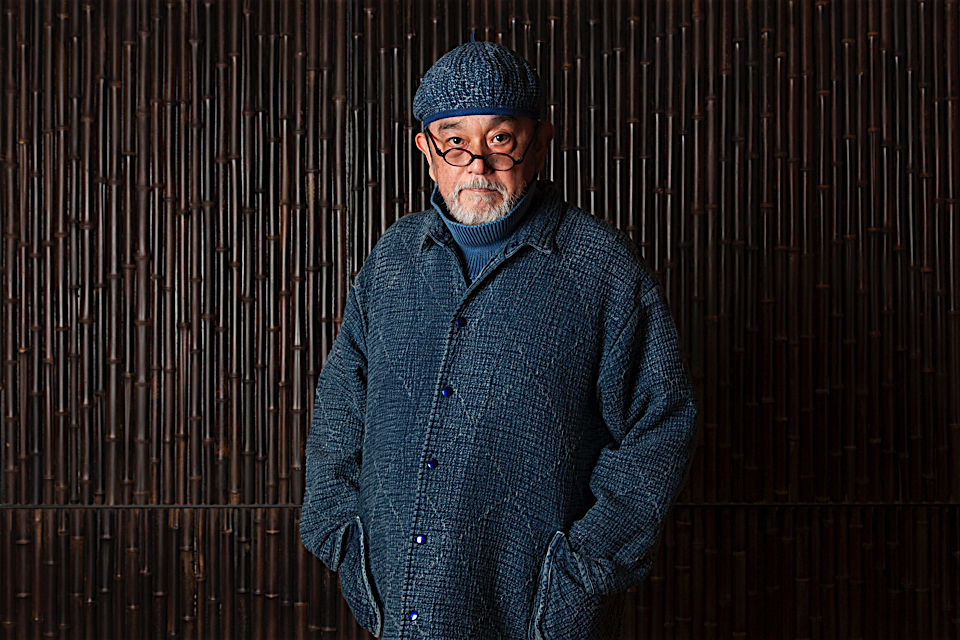
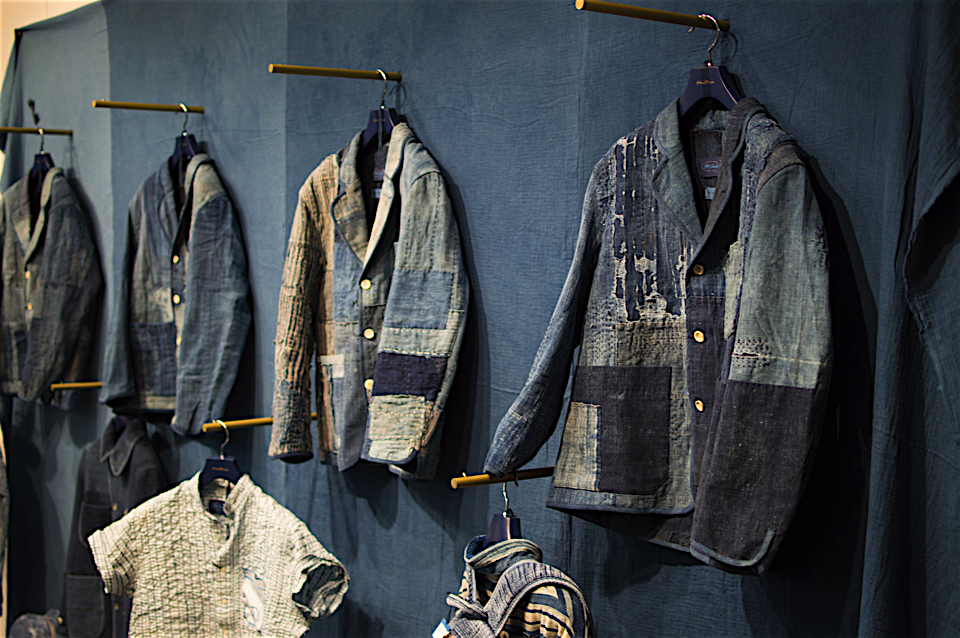
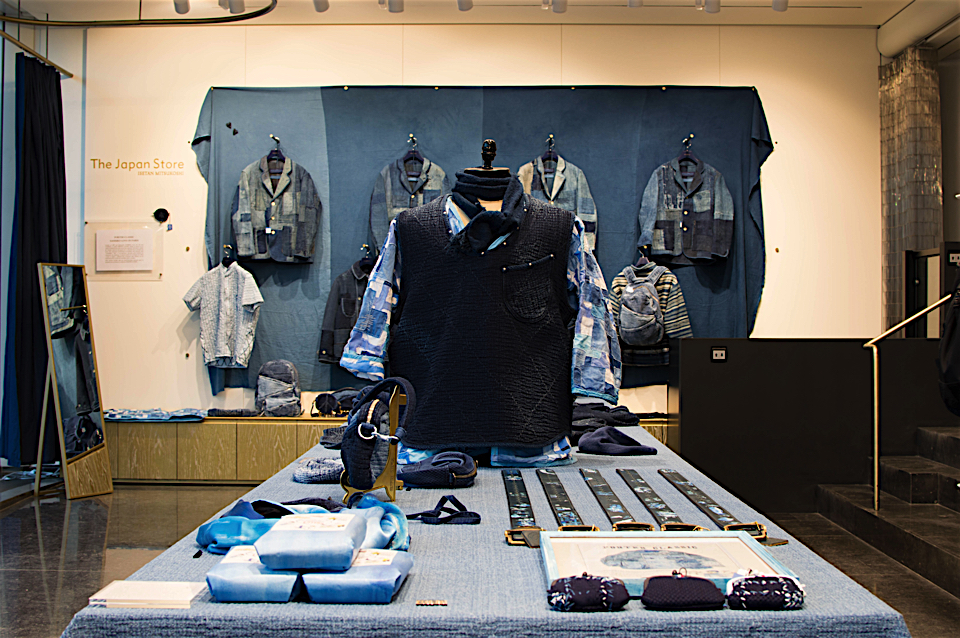
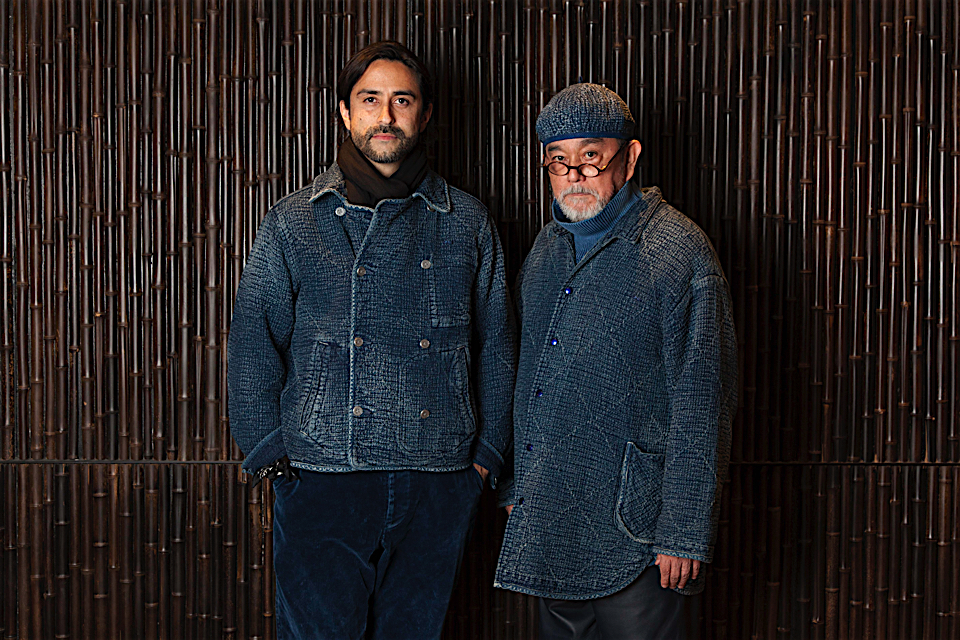
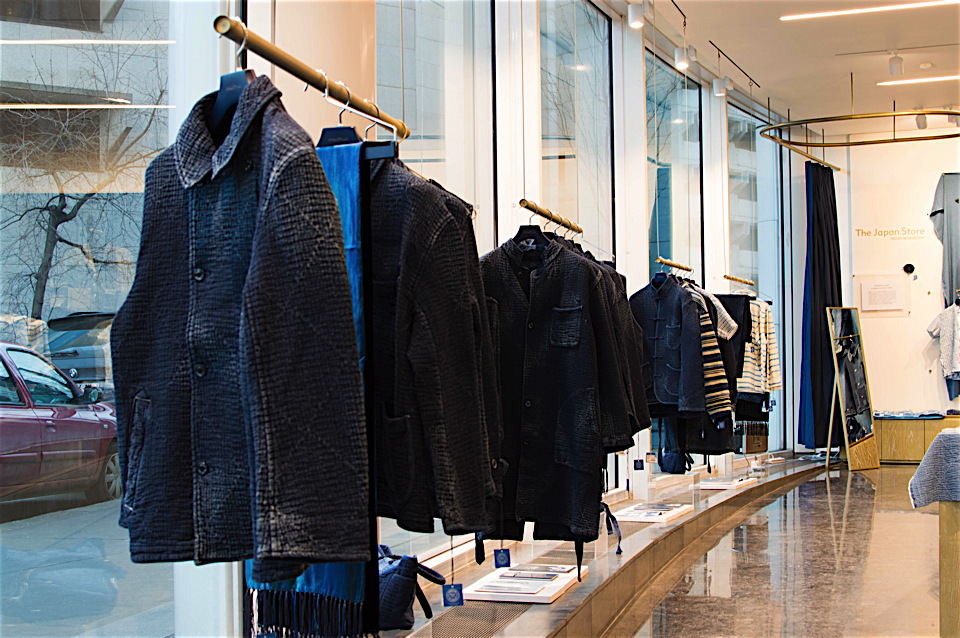
oma
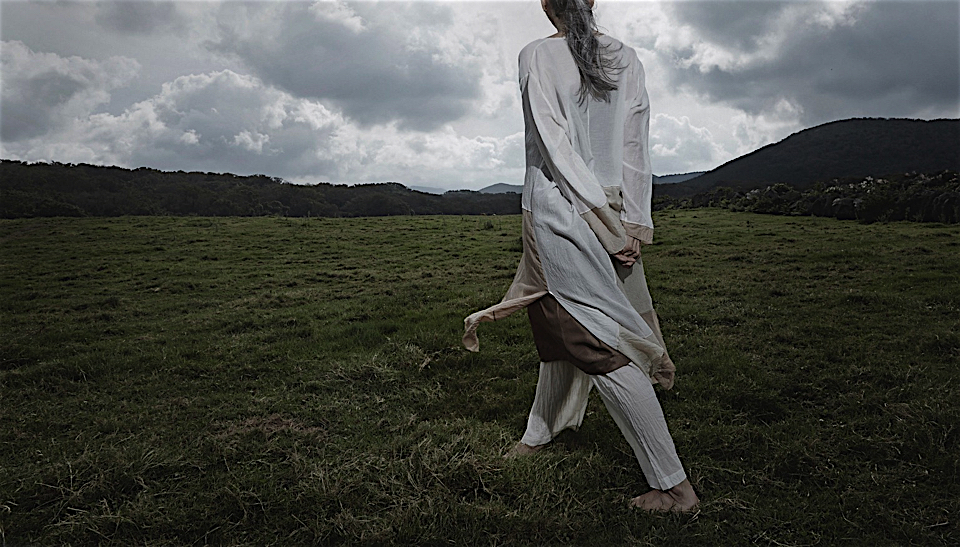
Oma is a Korean fashion and a textile artist currently based in Seoul.
After obtaining a Bachelor’s degree in Textile Design from Sangmyung University in Seoul, she moved to London in 2005. There she graduated from the London College of Fashion, University of the Arts with a B.A. in Fashion & Accessories Design. In the London years following her studies, she started to work as a textile designer with Michio Koshino. She then went on to work with Alexander McQueen for the next 2 years. She decided to follow her own path in 2010 by establishing her brand.
The latter is marked by a distinct philosophy of fashion. It embodies the humanistic values incarnate in what we do and the way we do it, along with respect for the environment and traditional handcraft.This ethical approach led her back to her roots: in 2012 she opened her studio and showroom in Seoul to offer a slower and more responsible fashion than is conventionally available, that connects with the traditions and skills of ancient Asian textile practices through contemporary design.Through the Korea Craft and Design Foundation, the Korean Ministry of Culture requested her cooperation on leading the ODA project in Laos in 2013.
The project intends to accelerate growth of the art and craft industry, and consists in providing consulting services in design, technical support, working conditions and systems to the local craftsmen.Strengthened by her experience in Laos, Oma developed her own network and partnerships with local artisans primarily based in Asia.
She kept enhancing her works by exploring diverse artistic practices including weaving, dyeing, and painting. The result is a small range of bespoke pieces with a unique textile-led design. Their appeal lies in the subtlety of the texture, a timeless aesthetic and materials of lasting quality.High-end ethical global fashion is set for steady growth as discerning consumers become increasingly demanding regarding the sustainability of what they wear. Oma clearly understood this, and creates clothes that are not influenced by seasons or trends, and can be worn for any occasion.
Thus, her creations are ultimately sublimated into a form of artistic expression.In 2015 she was requested by the Korean Ministry of Industry to act as the artistic director of the ‘Korea Sewing Master Festival’ in Seoul. Following which she was offered the opportunity of a solo show in September 2016 by the prestigious Gana Art Gallery.This exhibition was Oma’s first attempt to present, along with clothes and garments, the new direction of her work. It is based on installations and design pieces created with specific techniques she has been exploring and developing during the recent years.
Oma will now be developing her clothing brand on an international level through strict choices of stores and galleries, and collaborations with high quality brands for capsule collections. Through this process she is establishing herself in contemporary art and design, bringing her craft skills and savoir-faire to a new dimension of creativity.
www.omaspace.com
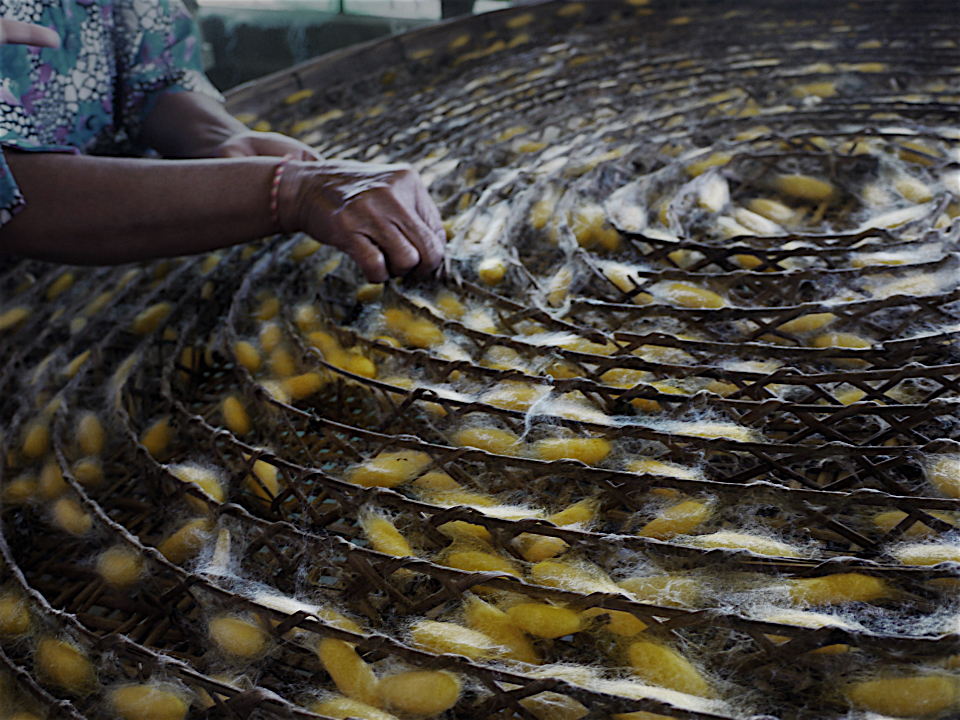


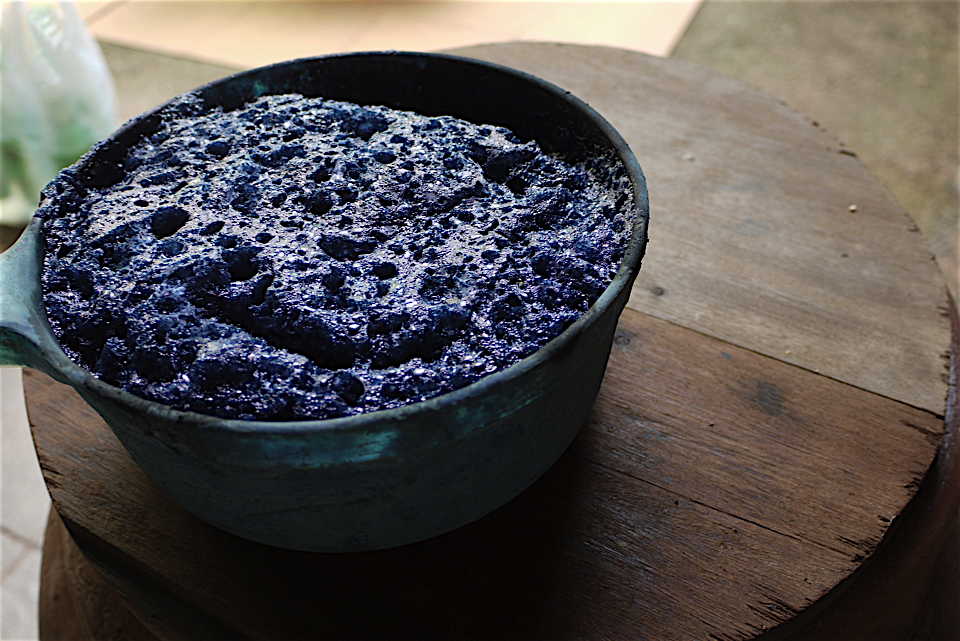


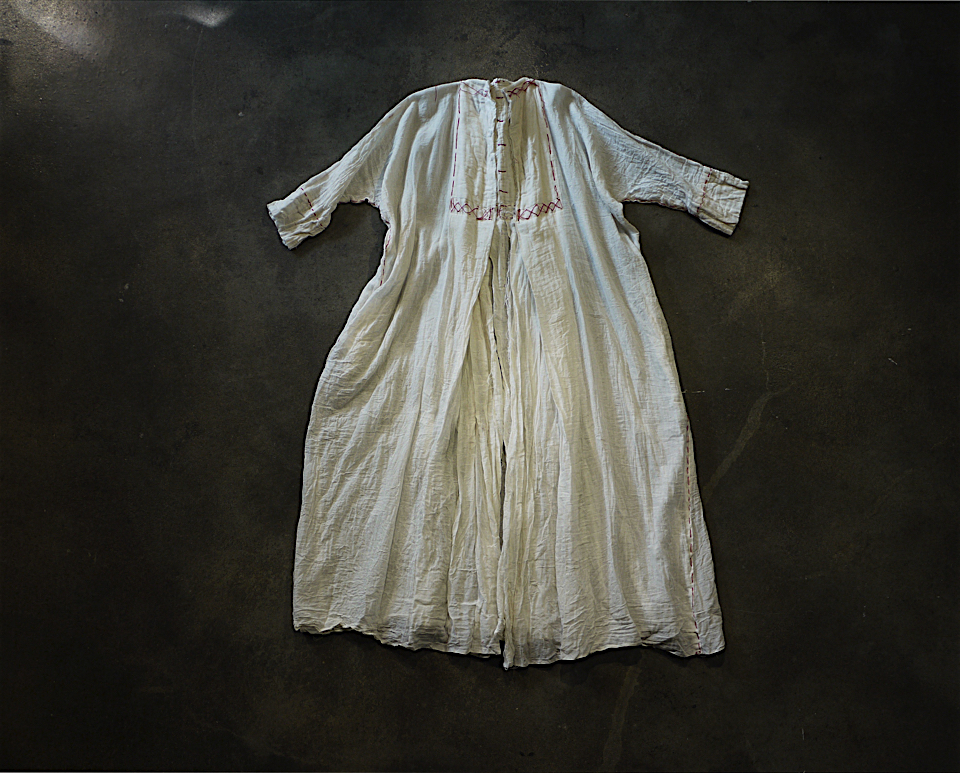


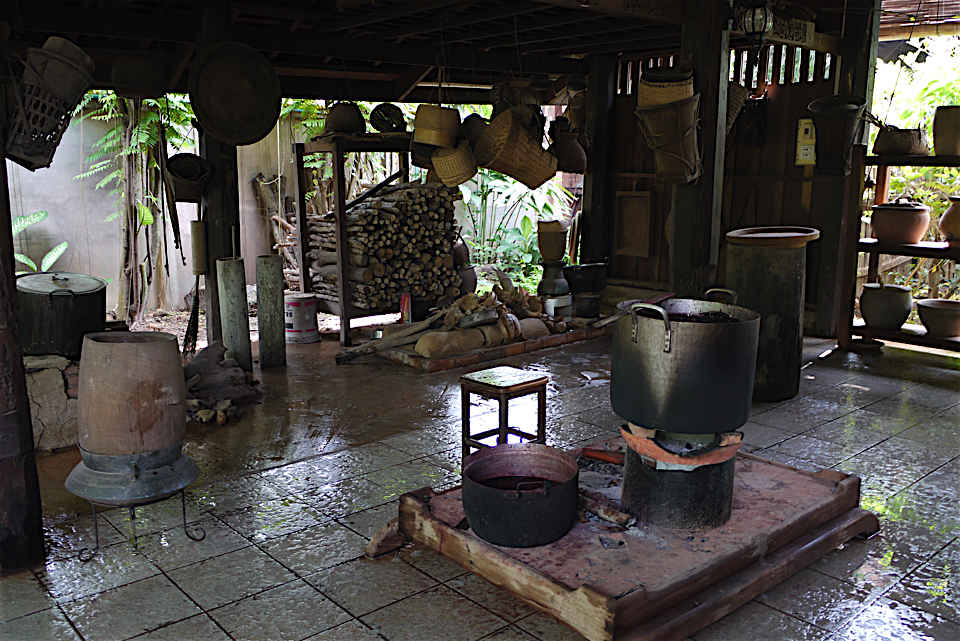
blue and you
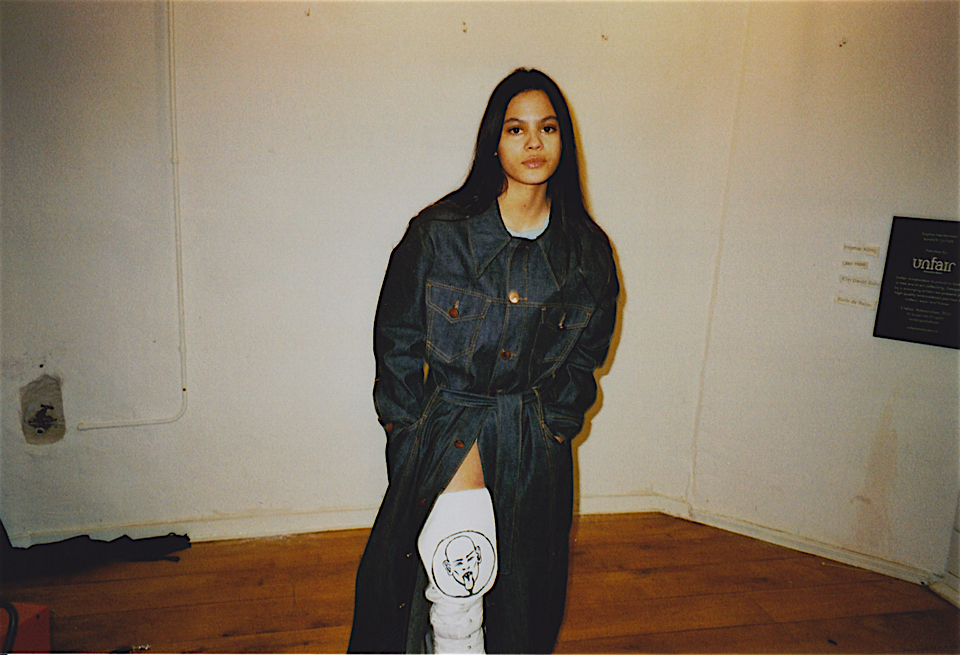
photo by Lotte van Raalte
Look around you - on the street, in old photo albums, on television, in magazines and books or online: what you will find are blue jeans. Everybody has a pair of jeans in their closet, a symbol for freedom and equality.
In 1871 invented by Jacob W. Davis in partnership with Levi Strauss & Co, this garment was originally designed for cowboys and miners. In the 50’s jeans became popular among teenagers, especially greasers, followed by the hippie subculture in the 60’s and youth subcultures of punk rock and heavy metal
in 70’s and 80’s.
Denim is created by a special weaving technique that produces diagonal ribbing that distinguishes it from cotton duck, another twill fabric. One side of the textile is dominated by the blue warp and the other side by the white weft threads that causes blue jeans to be white on the inside.
The blue color comes from the natural dye Indigo. Unlike other natural dye, indigo will take with each washing bits of color as well as bits of fabric away. This process leads to that ultimate soft jeans that feels like a second skin.
Dutch fashion designer Sophie Hardeman puts denim in a different light with her collection Hardeman. After finishing her studies at the Gerrit Rietveld Academie she worked as an assistant for Bernhard Willhelm in LA, currently she is based in Amsterdam.
With her gender free collection ‘Out of the Blue’ she brings the standard jeans to a new ‘abnormal’ and sexy standard. She combined, modified, deformed and recycled jeans to transform them in an avant-garde denim collection. “I like fashion because it speaks to everybody,” she said. “It’s a very visual, understandable language in which you perform. That’s why I work with denim, because it refers to everybody.”
Hardeman loves to work with ‘real’ people: she found her models on the street and in the studio she works with people who are unable to apply for real jobs due to their social background. “I want to create a social environment where fashion is made for and by those who refuse to conform to commodity culture. I want to ignore the mainstream fashion system entirely."
Bamboo van Kampen
Bamboo van Kampen, 26, is an all-round creative specializing in visuals and colors; she forms half of the Berlin-based duo Arturo Bamboo
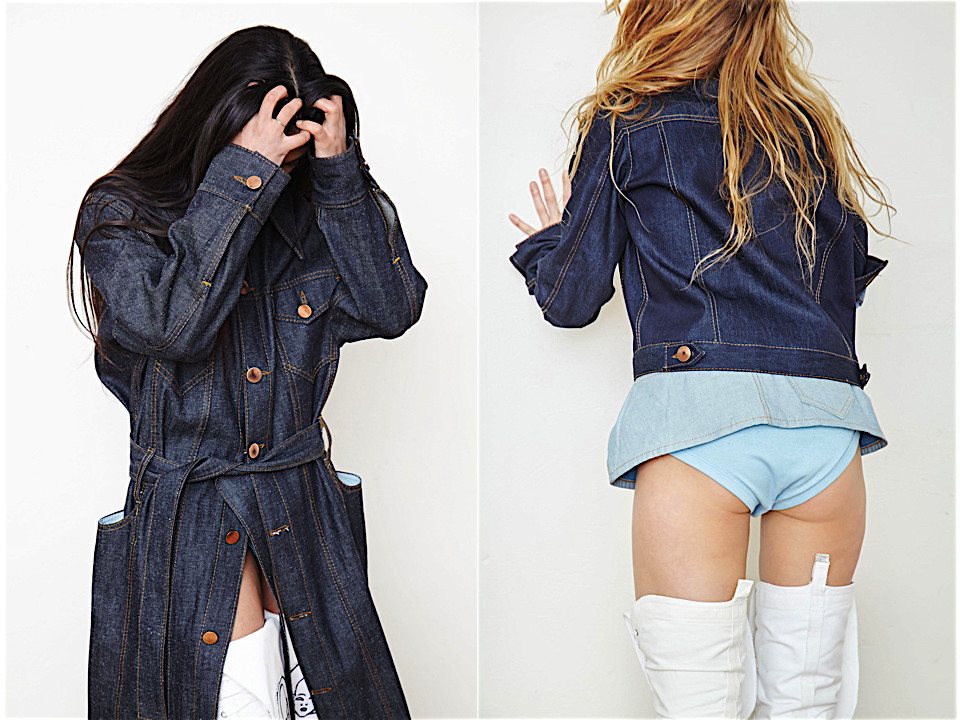
photos by Lotte van Raalte
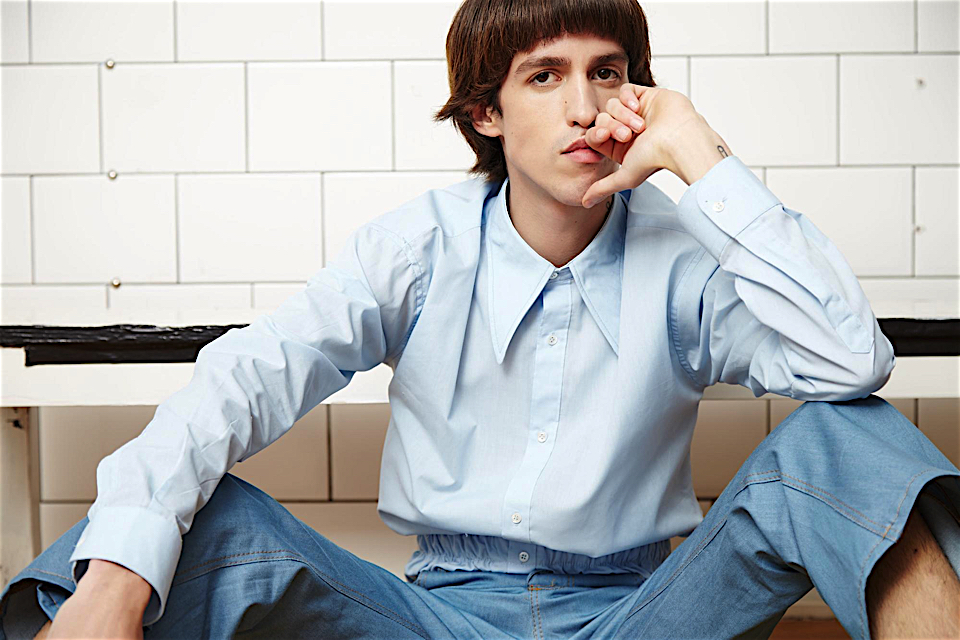
photo by Lotte van Raalte
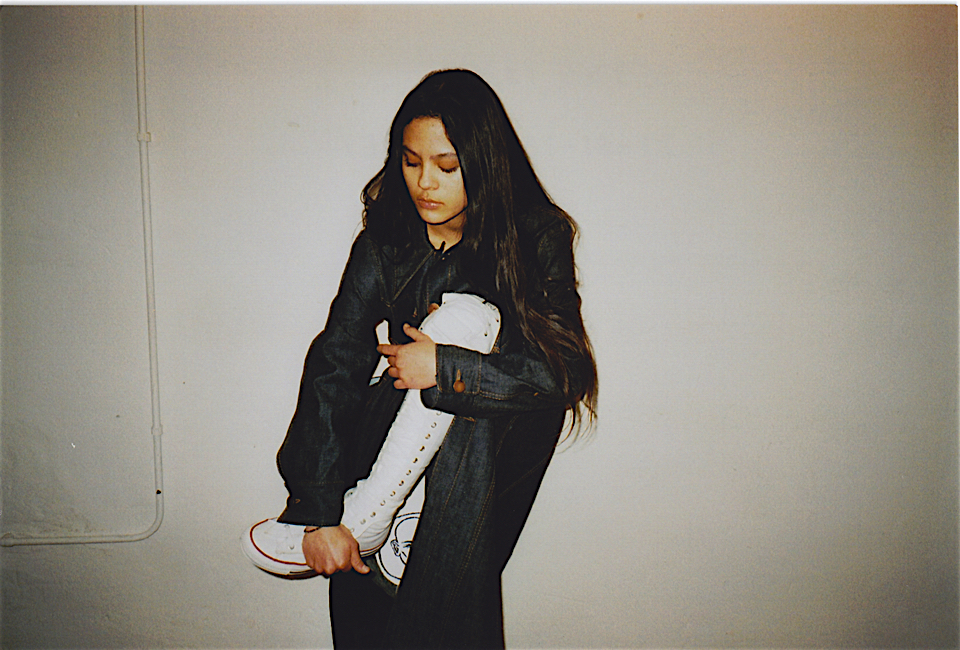
photo by Lotte van Raalte
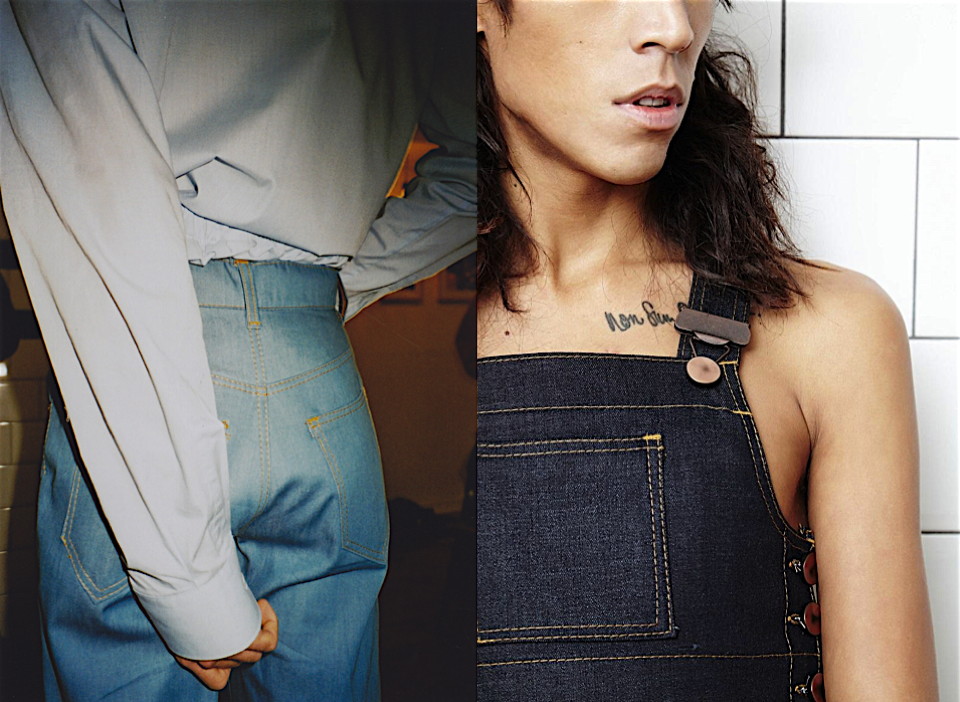
photos by Lotte van Raalte
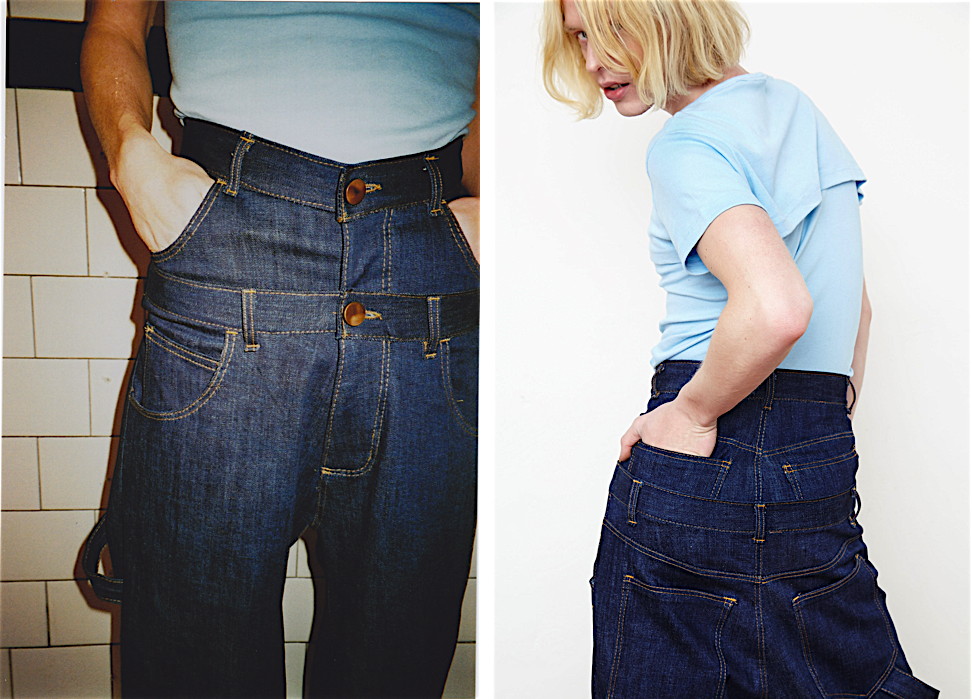
photos by Lotte van Raalte
melissanthi spei
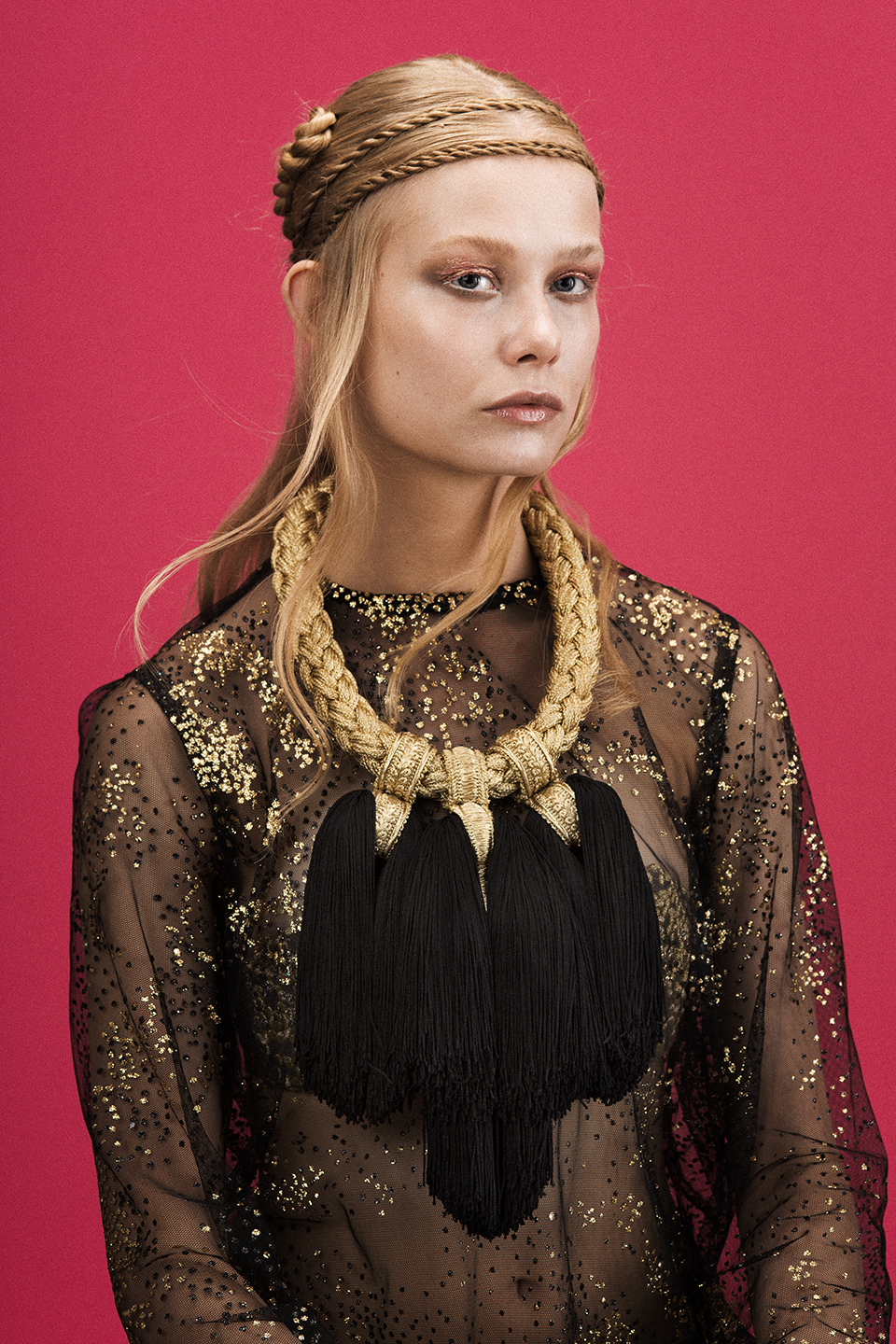
Melissanthi Spei is living in London, she graduated a few years ago from MA Fashion Artefact at London College of Fashion. She creates awesome contemporary and sculptural garments. Part of her identity as a designer is to use industrial materials for something historical and old through the exploration of traditional arts and crafts and their projection to contemporary aesthetics.
Cecile Poignant met Melissanthi and asked her questions about her work and « A long farewell to all my greatness », her latest project. Enjoy!
How would you describe yourself as an artist?
I am one of the quiet ones! People might sometimes think I am too nice or too naïve because I am very humble. I have high standards and aspire to meticulous presentation of my pieces, but when it comes to words I am a disaster! I know what I want and I want to get straight to the point. I feel more than I can explain in words; my emotions are more than words can describe and this is why all my vividness and darkness becomes my work. As a person I am very calm and creating is my way out.
What is your relation to Fashion and is clothing the most important media for you?
I knew I had an artistic vein since I was very young. At the age of twelve I got really fascinated with Henri de Toulouse-Lautrec and Alphonse Mucha, I love the way they represented the female body as so fragile yet so powerful. I wanted to do something that could still be very artistic but would revolve around the body. My background is both art and fashion. I studied womenswear and learned all the technical parts of garment construction but I don’t like following rules, I like making my own rules. This really evolved when I went to do my Fashion Artefact master’s degree at London College of Fashion. I think this really made me push myself and feel that there were no boundaries to what I could do. I have worked in different fashion companies since then but I feel I need to have my own voice and carry on what I do; I need to be able to create. The new project A long farewell to all my greatness has a lot to tell and it is the first project that has both art pieces and more wearable pieces. I would like to carry own making art pieces but also be able to see my work being sold.
Why are you so interested by folklore?
This is something I grew up with and is a very strong element within my family. My father is a researcher and writer focusing on ethnographic and folklore elements within Greece and as a child I remember him always trying to do his best to maintain the traditional carnivals in Greece. A lot of tribes from different places around Greece would visit Athens once a year during the carnival season and would perform around the city. At that point I was really young and embarrassed about how wild and vulgar (the whole carnival is about fertility and the traditional songs don’t beat around bush!) they behaved but now, thinking back, it is amazing to be able to perform in such a way, free from everything. Unfortunately this no longer happens in Athens as the funding is very limited for these kind of things but people are still very eager to collaborate and promote their local festivities. Hopefully this is something I would like to contribute to in the future.
What are the key elements of your work?
New textures are definitely key elements of my work. The more I evolve the more risks I take and I have learned to trust my instincts during my design development. Everything I do is based on instinct. I am a very logical and practical person in my professional life but when it comes to my work I want to only work with emotion and then I know I am doing the right thing. Metallic colours and materials are also a key component. I am trying to use really intense and dark inspiration but mix it with very feminine features, marrying the darkness with elegance.
Would you say that history is your main focus?
I think this started subconsciously through my project Death is a dialogue, that was the first project, in which I slowly started realising that this was my purpose. It made so much sense to explore this further through new projects. I love mixing traditional elements with poetry or literature. So far my work has been related to my cultural roots very strongly and I this is something I will always try to explore, although I would love to be inspired by different cultures in the future as well.
How would you describe your last project « A long farewell to all my greatness » ?
From the beginning this project was an exploration of my cultural roots. I am from Greece, and grew up there, but it was only after I left that I came to appreciate these roots. Now comes the time, after living in the United Kingdom for almost a decade, to acknowledge the fact that my roots have been blended with others and now I am becoming a hybrid between cultures that overlap and try to overrule one another. The title, a quotation from Henry VIII, by British national symbol William Shakespeare, shows that this mixture of cultures gives hope for something new while never forgetting the past. This was formed through a series of five neckpieces and three headpieces in black and gold shades, creating a very regal effect.
Materials used are a combination of handcrafted religious trims and industrially made rayon fringing. Different manufacturing processes all come together with handmade techniques. This project has been created with lots of recycled and leftover materials and only a few key materials were sourced from scratch. The main reason for this was that there was that I had absolutely no budget for this, only the need to create and evolve. This for me was also proof that artists can be resourceful with the smallest amount of materials, equipment and space as possible while still producing a very successful outcome. Everything was made by hand stitch after hand stitch, loop after loop, with lots of patience and lots of love and belief in the purpose.
What would you like people to feel about your creations?
I want people to relate to them and be able to dream and escape through the pieces. Each piece is made with lots of thought and I want people to be able to go to a fantasy world and escape from reality.
How do you see yourself in the future?
I think in the future I would still like to work for other fashion labels but also I would like to teach and support young designers. Apart from my design projects I would like to carry own with researching and finding other artists and designers influenced by folklore elements, whether it is from their own heritage or from a different culture they love to explore. I would like to be able to maintain a balance between working for the fashion industry but also still be part of this dreamy world by being more culturally aware of what is going on around me. I think sociology of fashion is definitely an aspect I would like to explore further.
Cecile Poignant
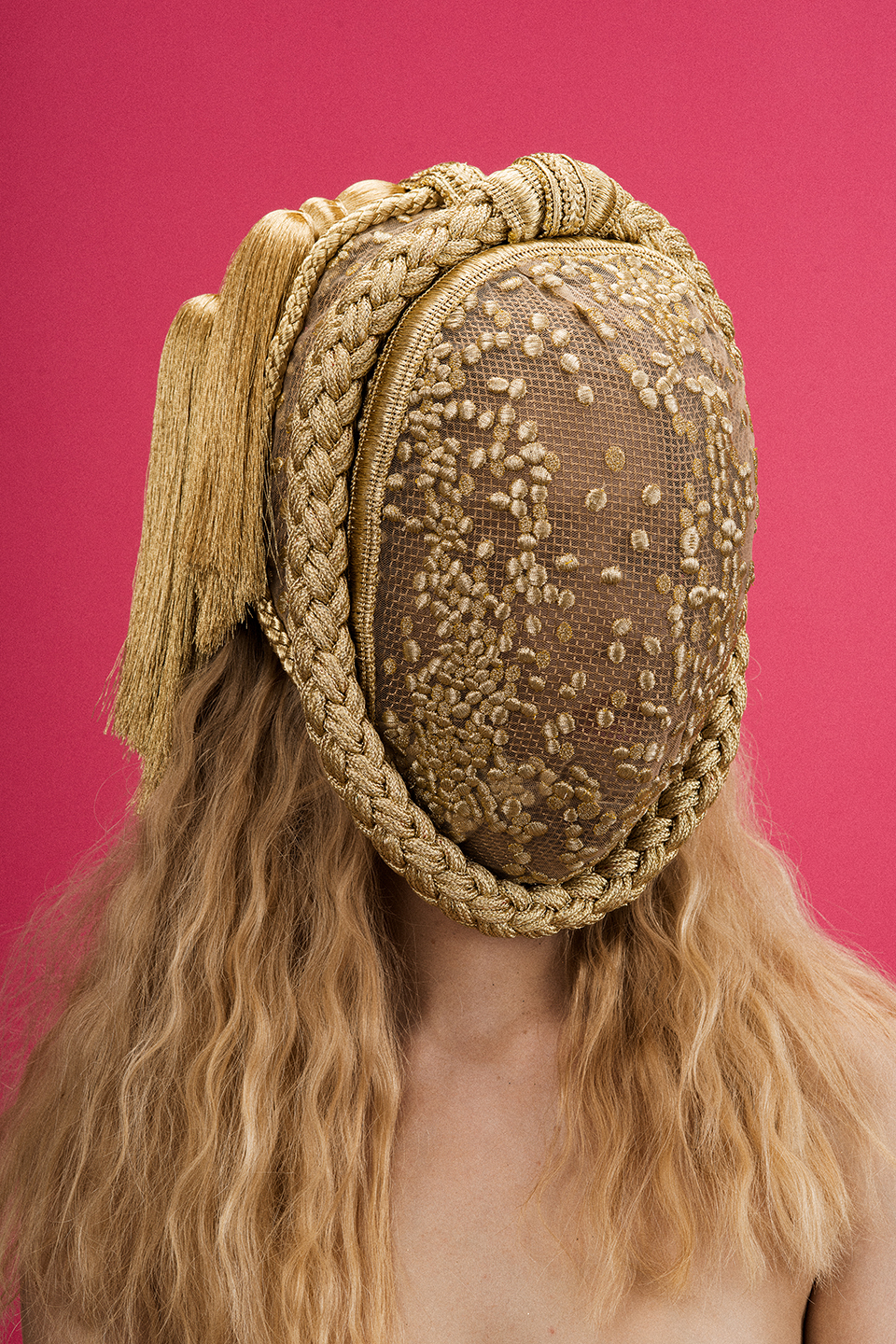
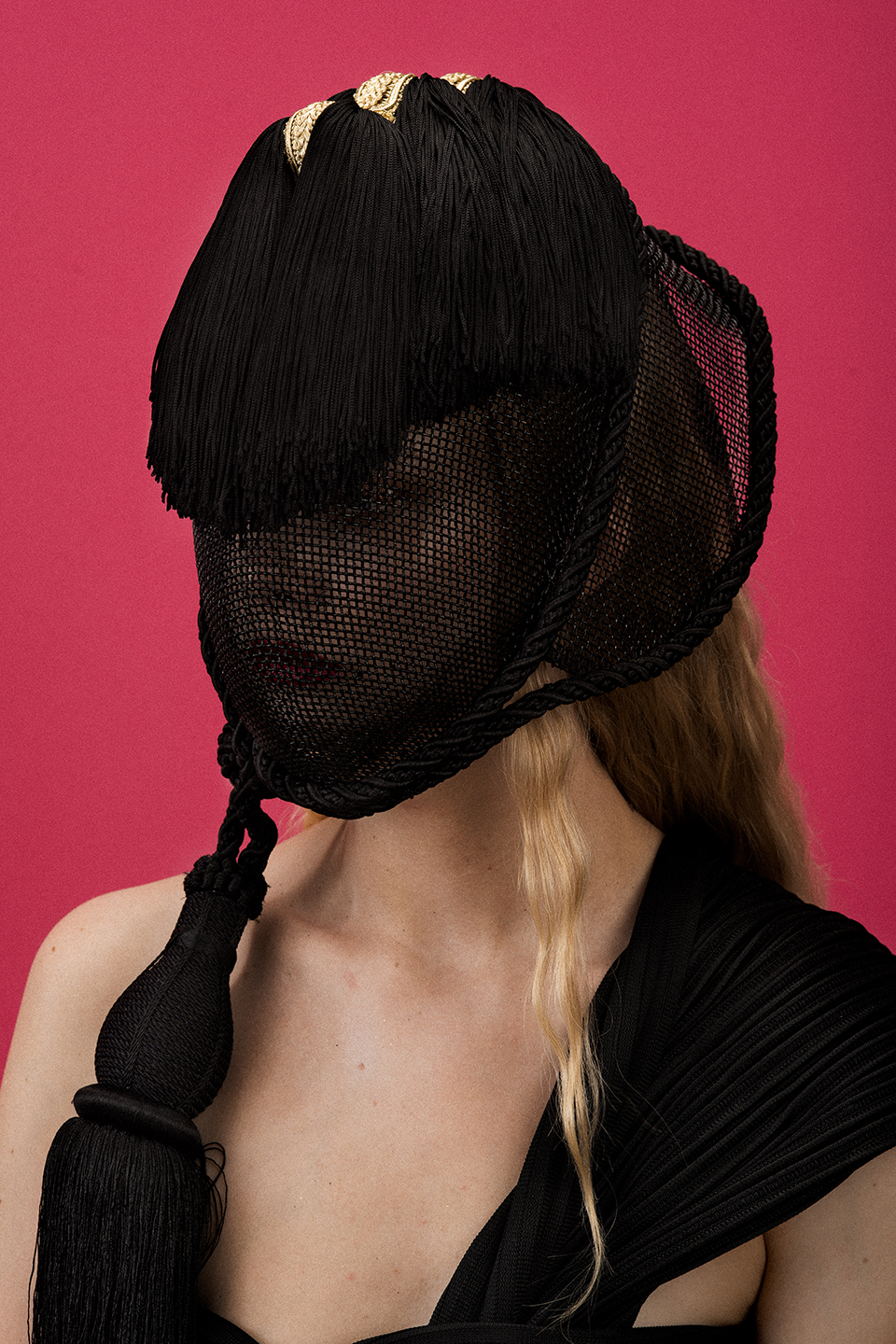
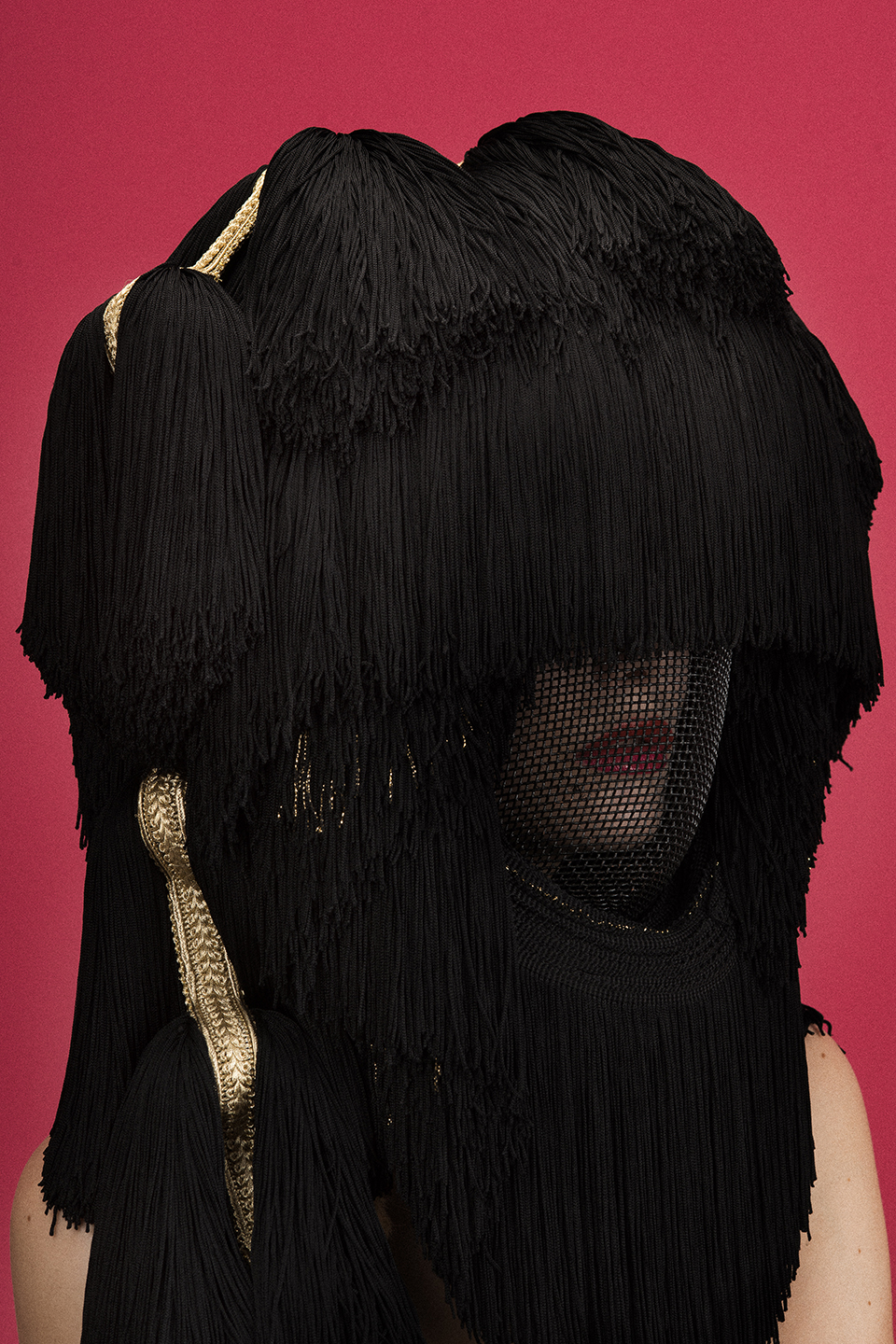
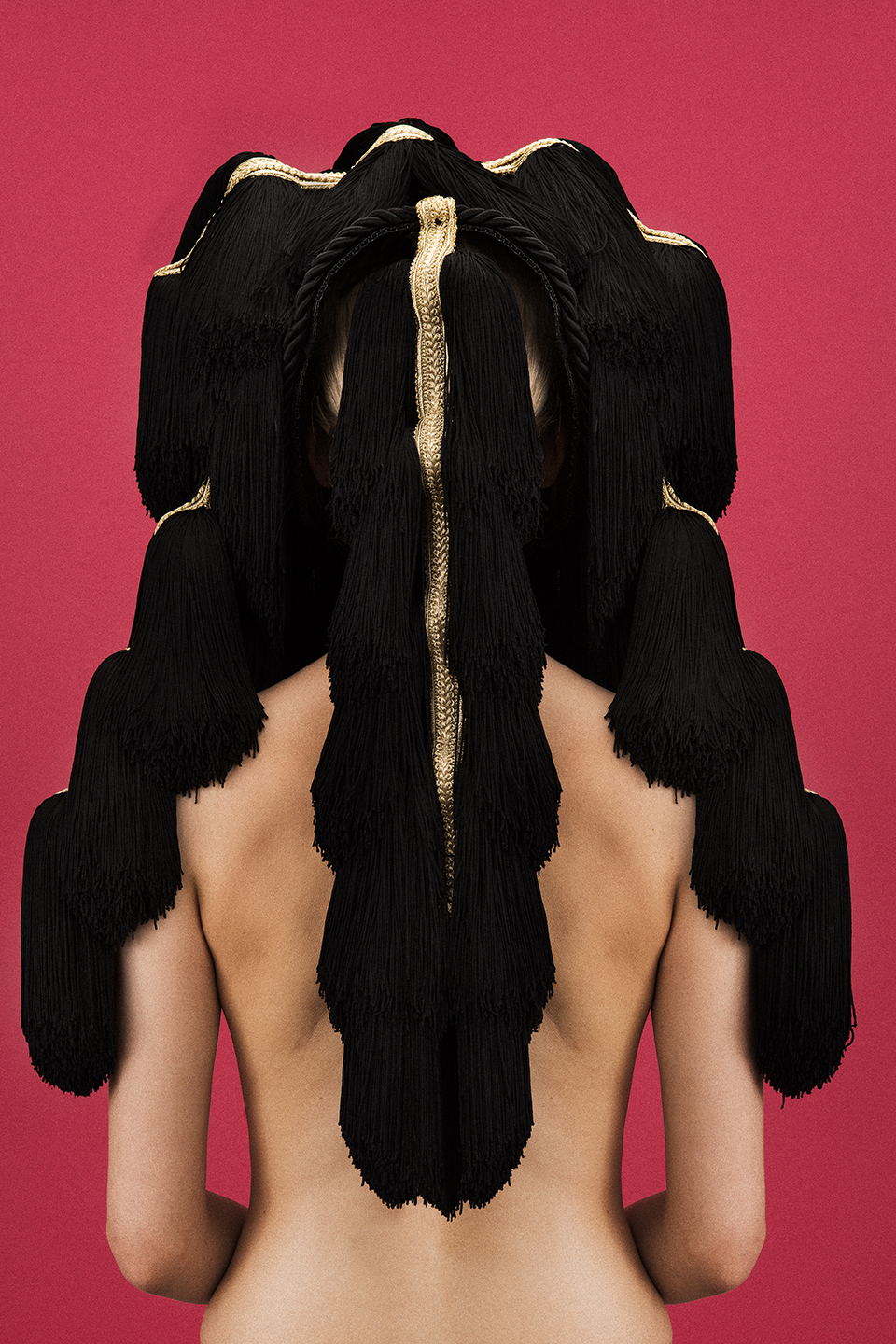
open source fashion manifesto

The voice of Martijn van Strien, a designer, thinker and a speaker, is a rare one among the fashion industry. Calling for a change, Martijn van Strien’s projects aim to challenge existing norms and practices in the industry, showing different alternatives to the current reality. “Fashion and garments have the potential to make us proud, we can’t let our joy be spoiled by a sense of guilt over how their are made nowadays”, he explains. Testing radically different approaches to garment design, production and consumption, van Strien uses modern technologies to bring innovative ideas to the fashion world, promoting sustainability and open possibilities.
Fascinated by science, architecture and style, and inspired by open-source philosophy, van Strien strives to create a “circular future for the fashion industry”. His recently released publication “Open Source Fashion Manifesto” (2016) is an insightful statement of his vision.
The Manifesto, written in collaboration with Vera de Pont, addresses designers, businesses and consumers, offering a new point of view on fashion and expressing the urgent need in creating a more sustainable, fair and technology driven global system.
The shared vision for an Open Source Fashion, as described in the manifesto, offers a new perspective on how clothes are perceived and worn, suggesting an online based community where designs, materials and instructions are shared, allowing consumers to take an active part in the creation process.
“I want to stay relevant, have a voice. I want to be worn, and also re-used. I want to be designed to last for more than just one season. I want to be enjoyed by everyone without polluting our planet. I want to be produced by people who are happy and proud of what they make.“ (“Hello”, the opening monolog by “Fashion”)
The Manifesto opens with a quick review of the fashion industry and its malfunctions as perceived by van Strien; massive growth, massive consumption, massive disposal and a waste of resources. The gloomy introduction is followed by an elaborated text that takes the reader step by step through the possible revolution; “Show My Origin” promotes curiosity, transparency and sharing information. “Make Me Yourself” calls to involve consumers in the creation of fashion to add value, “Download Me Here” offers new ways of fabrication using digital formats, 3D printing, laser-cutting and easy access to designs.
Addressing the question of long-lasting products and minimizing waste, “Make Me Last” suggests a shift to “on demand” production, re-use of materials and modular garments that can be re-assembled. “You Made Me, Now Change Me” discusses the core qualities of the “procumer” (producer + consumer) while “Innovate Me Collectively” questions the current role of the designer, offering a new perspective on the designer as a connector, or facilitator within a community. Lastly, “Own Me Together” explores an interesting social model - a new era of common property and self organized communities with full responsibility over the life-cycle of the products.
To illustrate the vision of the “Open Source Fashion Manifesto”, Van Strien and De Pont created a unique tapestry for the outside of the Nieuwe Instituut building. The Outdoor Tapestry is developed at the TextielLab Tilburg and contains specifically selected yarns that make it fully weather and temperature-proof.
The tapestries contain three messages: ‘Make it last’, ‘Download me here’ and ‘You made it, now change it’. The time of day and type of light that hits the tapestry determines which message is visible. For this effect each phrase is woven from one high-tech yarn, either coloured, glow in the dark or reflective.
In addition to the manifesto, van Strien took part in the Fashion Revolution Week, offering the public all of the studio’s digital garment designs for free.
Lior Fisher Shiloni
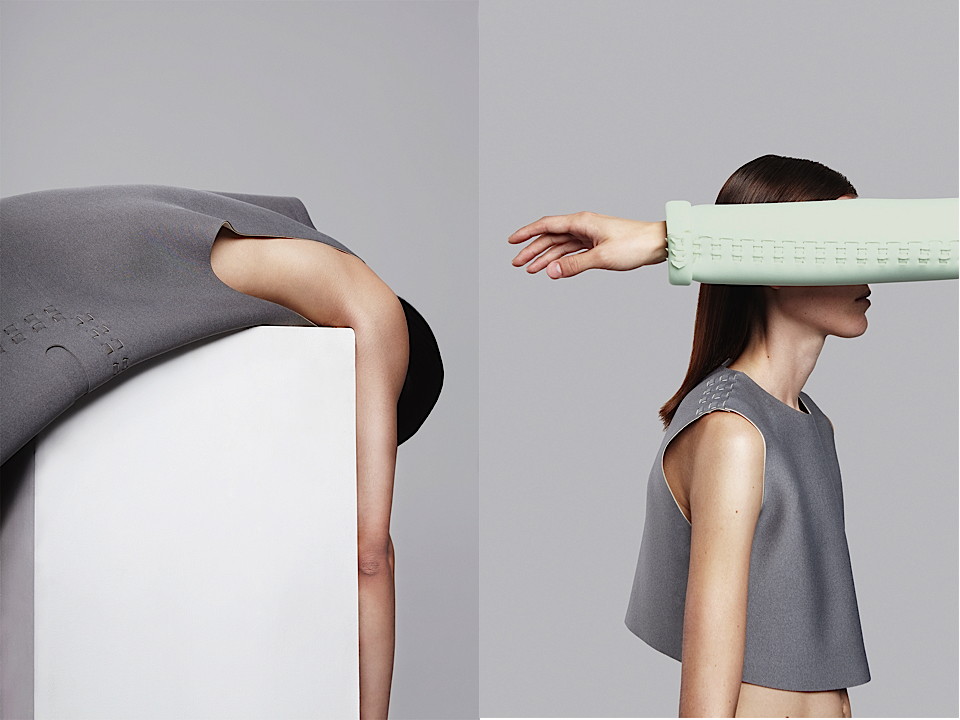
By Martijn van Strien
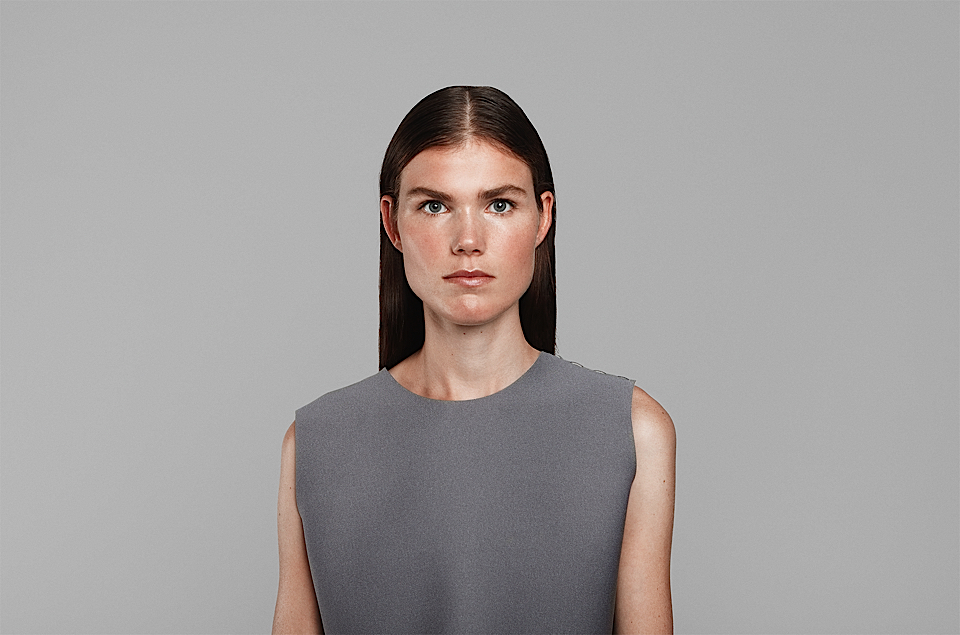
by Martijn van Strien
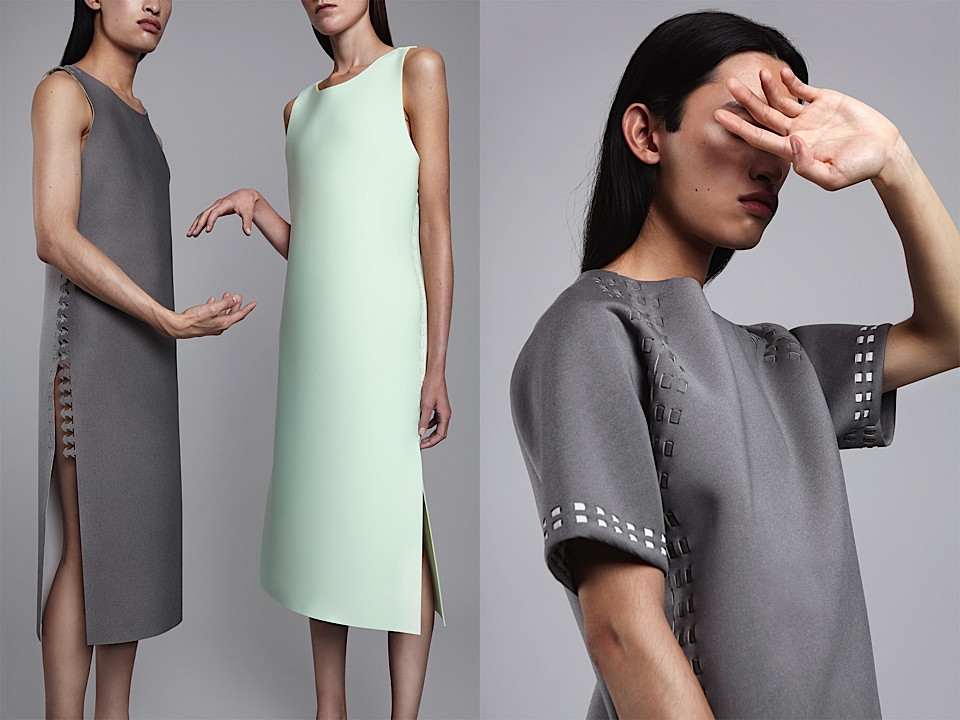
By Martijn van Strien
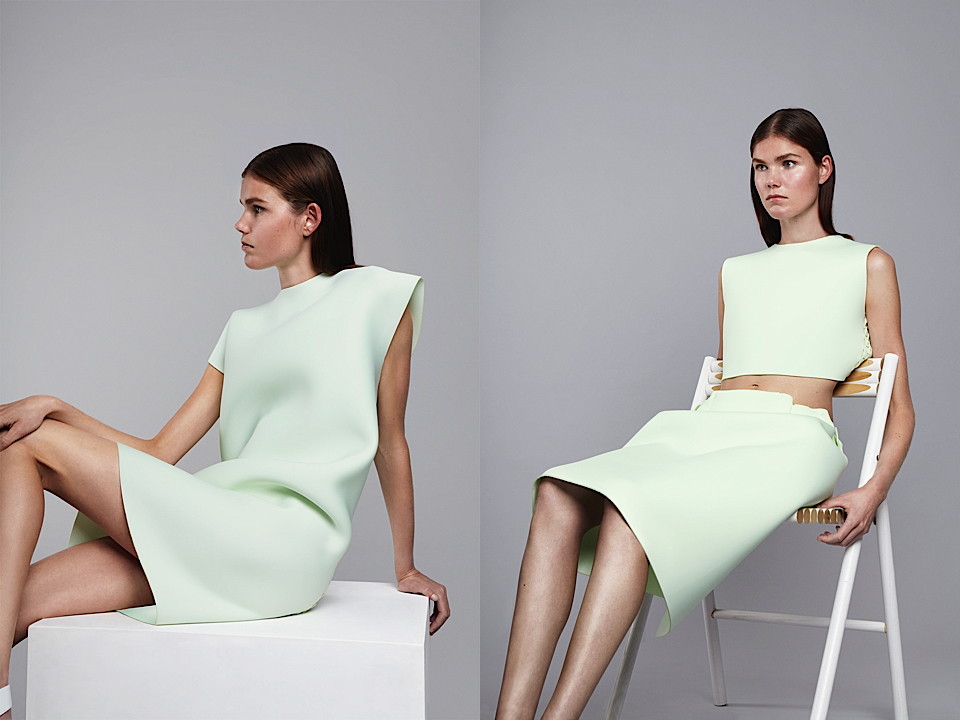
By Martijn van Strien
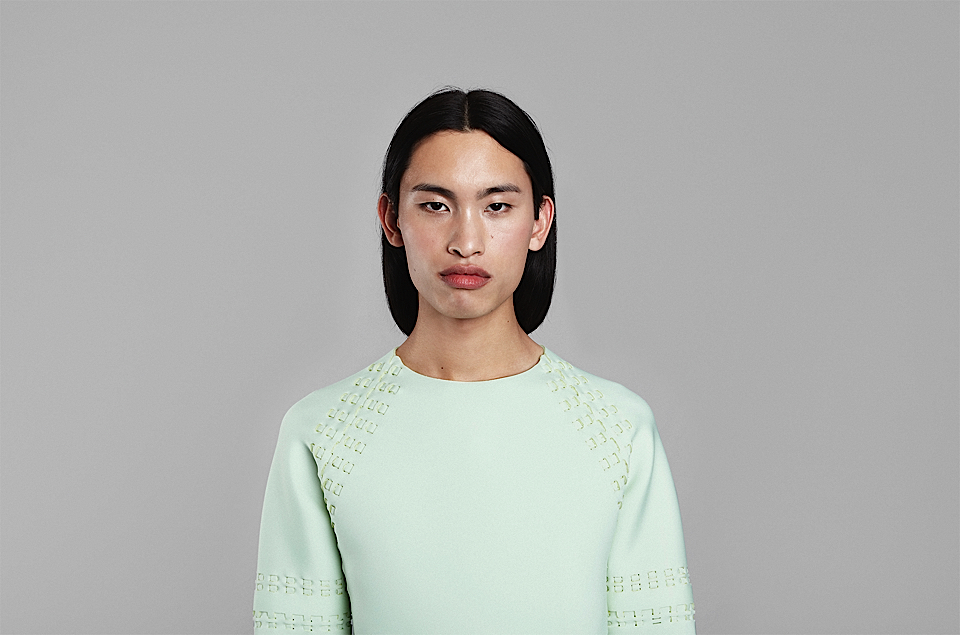
By Martijn van Strien

by Martijn van Strien
grandpa
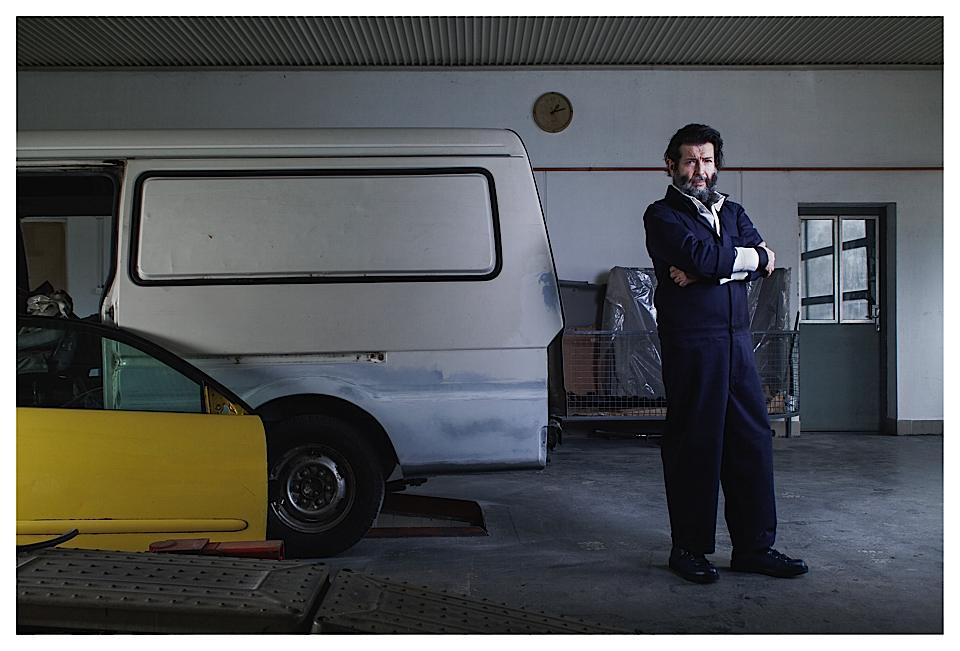
Grandpa Design photo by Andris Zombori
Annamari Nagy, the founder and creator at GRANDPA menswear, launched her Autumn/Winter 2016 collection to a receptive Hungarian audience immediately after her Master program diploma from Mod’art International, Paris.
Born and raised in Kisvárda, Hungary, Annamari is inspired by the male figures in her family - an older brother, charismatic father and legendary grandfather - influential people that form the base of her collections. “I grew up in a male dominated family.” she explains the roots of her design aesthetic.
Annamari’s collection is based on a strong emotional connection to her close familiar community, threaded through time and generations. The traditional techniques of hand-knitting and crocheting, combined with modern, minimal shapes and volumes add to the idea of tradition passed from one generation to another. Her clothes manage to create the feeling of wearing our parents’ or grandparents’ clothes, carrying warm memories from the past.
Grandpa’s latest collection, presented on the 6th of April 2016, was inspired by the noise, colors, energies and surreal dimensions of her father’s garage shop. All the patterns, shapes and volumes reflect to the workwear of a garage, adapting oversized pockets, exaggerated sleeves and collars, or even trousers.
The photos and styling really caught my attention, especially the combination of a mature gentleman wearing work gear. Your first two collections were also “manual labor”, with humour and elegance in both; are you planning to continue this theme?
Yes, I am absolutely sticking with the workwear theme. I am really enjoying it.
Your collection has wider appeal than it's affectionate brandname.
The brand is definitely not age-specific. It is for those men who can look fantastic everyday, because they require no particular effort. It is for men who are true to themselves.
What are the future plans for the brand?
I would very much like to bring the collection to Paris, hopefully already in SS17.
Where else abroad you would like introduce your designs?
In a Scandinavian country. I am very attracted to their environment, their attitude to life, and how strong their design philosophy is.
What kind of future collaborations interest you?
I like slightly unconventional pairings, like music & clothes. I think it could be interesting to compose music and design clothes in synergy according to the same theme.
Panni Davidhazi
photo: Andris Zombori
assistant: Sára Tóth
model: Sam Scott Schiavo & Lóránt Nagy
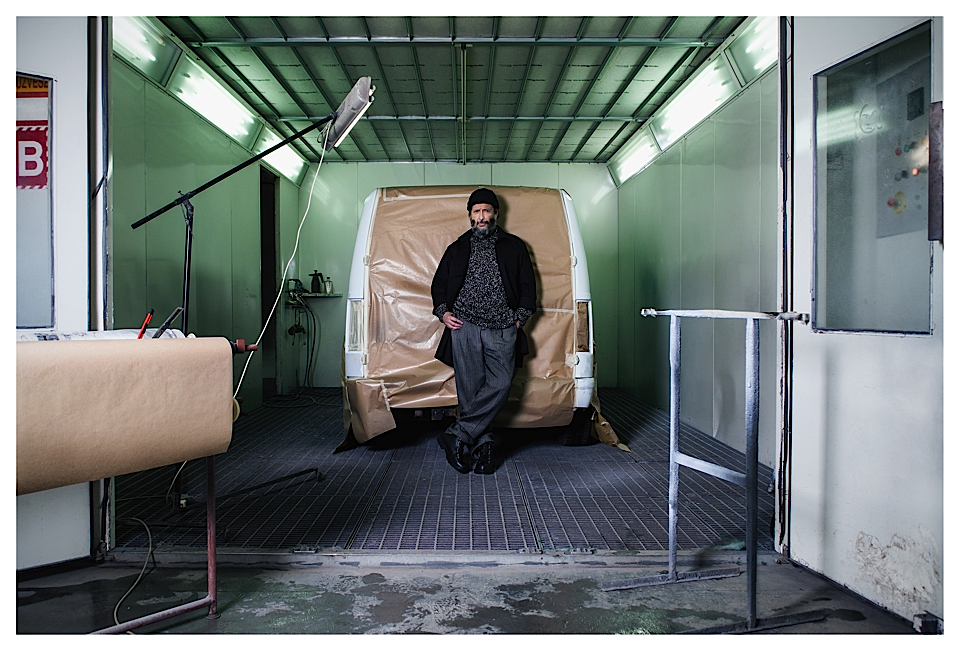
Grandpa Design photo by Andris Zombori
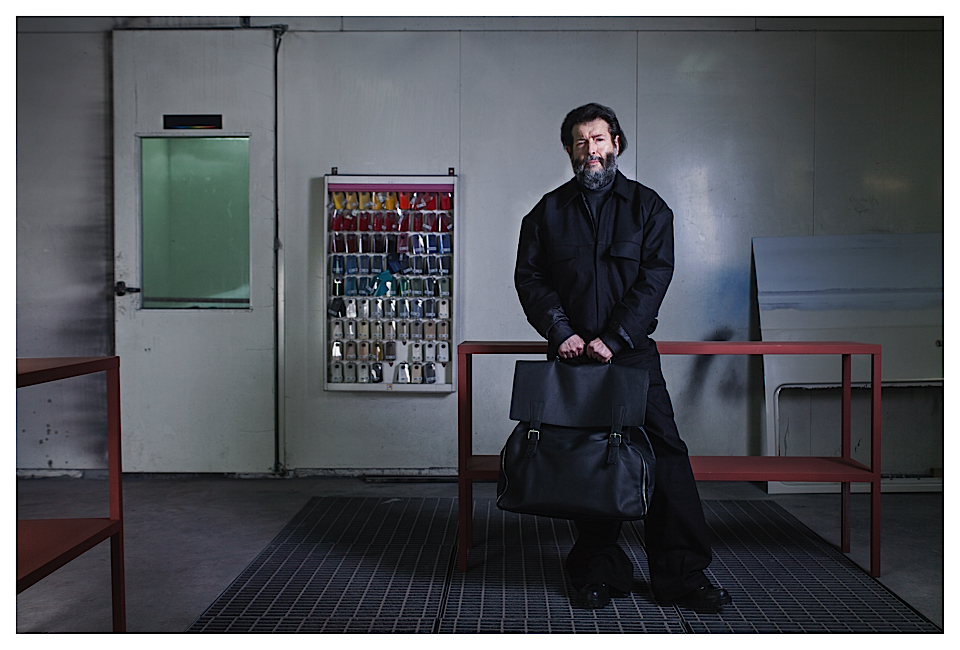
Grandpa Design photo by Andris Zombori
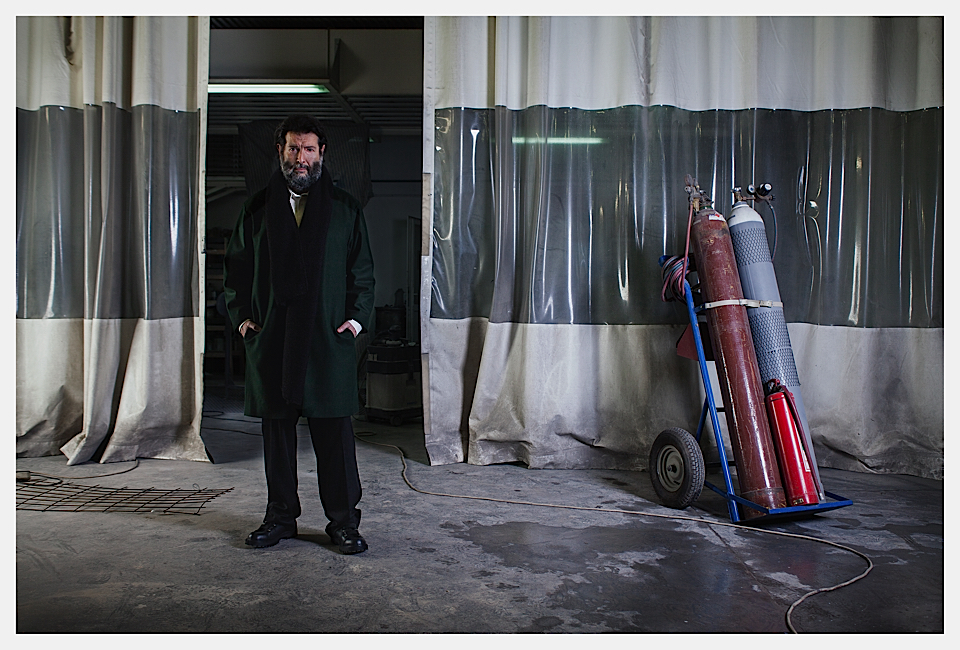
Grandpa Design photo by Andris Zombori
sweet heart
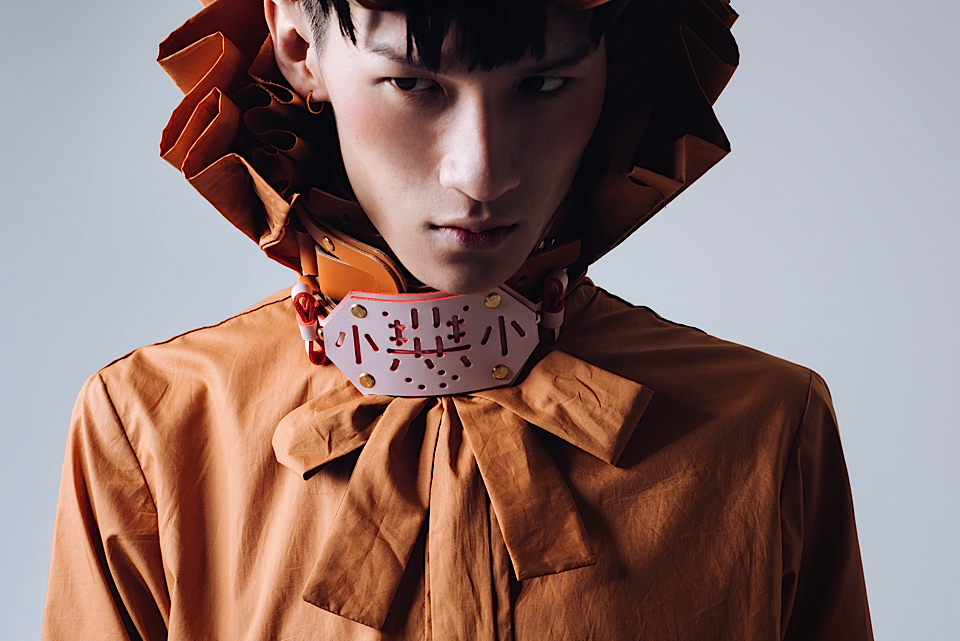
Niels Peeraer AW16 Campaign
“There is no limit to cuteness” is the motto of Niels Peeraer. Hearts, bows and candy pink are all recurring motifs in Peeraer sophisticated work. The Belgian fashion and accessories designer reaches the peak of sweetness through his handbags and accessories, laughing in the face of monochromatic minimalism.
Peeraer, a graduate of the Royal Fashion Academy of Antwerp, now based in Paris, explores the contrast between masculine and feminine through the tension of the rough materials and the soft heartedness of his designs. His “feminine” pieces are often presented on male models, creating a playful mix of colors and textures.
How do you relate to the concept of gender in your creation?
I design genderless objects. I want everyone to be able to relate to my label, regardless of gender “boundaries”. Personally, I managed to overcome the “block” of buying womenswear at a young age, but it is not as easy for everyone. There are often physical differences in the human body that force us to comply with some standards, but this is not the case in accessories or bags. Most of time, it is a just mental image that people have and creates that boundary I refuse to acknowledge.
So you avoid categorizing what is feminine and what is masculine?
In my head it is much more fluid. Femininity for me represent the search for beauty, and delicacy. Pure ‘masculinity’ doesn’t interest me at all. I like to see things as combination of opposites.
Your brand is quite unique in that sense, playing with contrast concepts and perceptions. How does the idea of “cuteness” mitigate these contrasts?
I want to combine “cute” design aesthetic with handmade products that have real value to them, keeping in mind the practicality of the volumes and wear. Most “cute” items are made from poor materials, while brands that focus on high quality generally do very minimalistic designs. I try to balance the two worlds - my design aesthetic and quality of the products.
Which materials are you currently working with?
I’m mostly doing what I’m doing because of my love for leather. The way it moves, bends, the strength of it. But especially I love the natural beauty of the material and how it ages over time. In terms of metal, I previously worked with brass, but have now switches to gold plated metal in order to elongate the durability of my pieces.
And what are your main inspirations?
Anime, illustrations, the image of the ‘lolita’. My current mood is usually highly reflected in my collections.
How do they evolve from season to season?
In a very organic way, as I design from my heart. My collections will reflect a specific state of mind, but will always grow from the same place, my mind. The way I work can not lead to a situation where collections clash completely with each other. I think it is more of a continuous work, like one long story. When it is fashion week and I have a new collection, you peek into a specific moment in that story line, but it keeps evolving throughout the rest of the year.
So how do you create innovation in your story?
I’m not sure there is, or can still be, real innovation within the fashion industry. As a designer I am more interested in reaching beauty than in finding the next new thing, as there will always be something newer to replace it. The innovation in my work relies in trying to keep traditional handcraft contemporary and up to date.
Is there a room at all for trends in your work?
Honestly? I really work organically. I prefer to have a beautiful handmade piece, with real value that comes both from the materials and from the heart. It is more important to me than designing according to trends. As I see it, following trends means giving an expiration date to your work, so I prefer to create timeless pieces.
I do understand though why for many brands it is the way to stay relevant, but it is just not the way I want to reach my customers. I believe this way of thinking is a very prominent characteristic of Belgian designers.
What is the message you are seeking to share through your creative practice?
« There is no limit to cuteness ». I want to capture innocent happiness, even for people who are not really into ‘cute’ things. I am looking for that ‘ooooh’ moment, or lighting up the mood. I love that. I have no intentions to to shock people, but to light up the day of the wearer and passer by, even if just for a little while.
Lior Fisher Shiloni
www.nielspeeraer.com
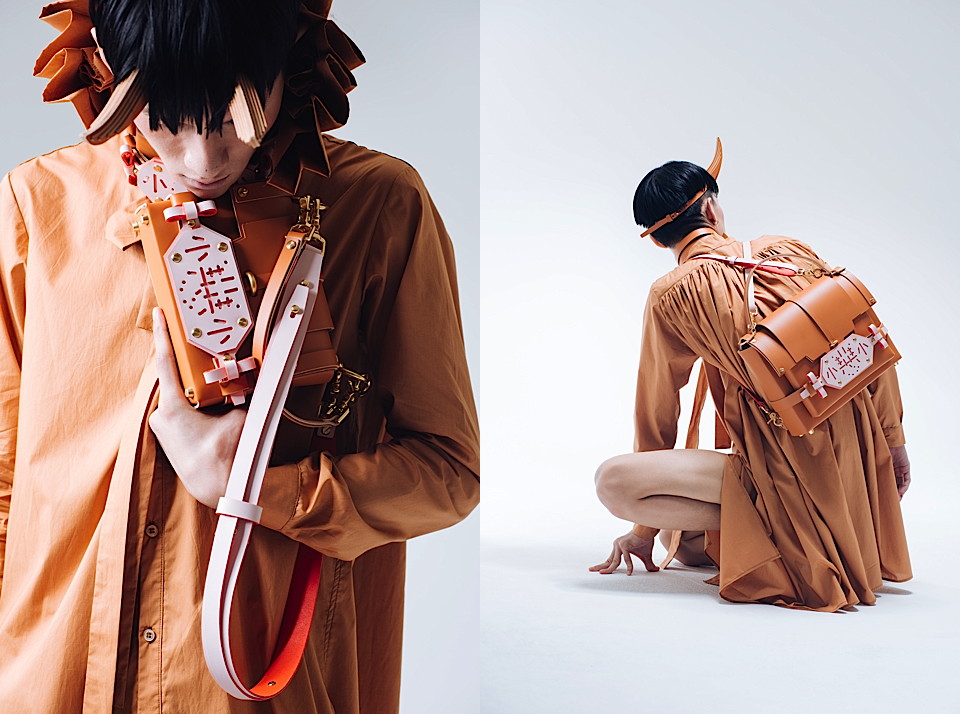
Niels Peeraer AW16 Campaign
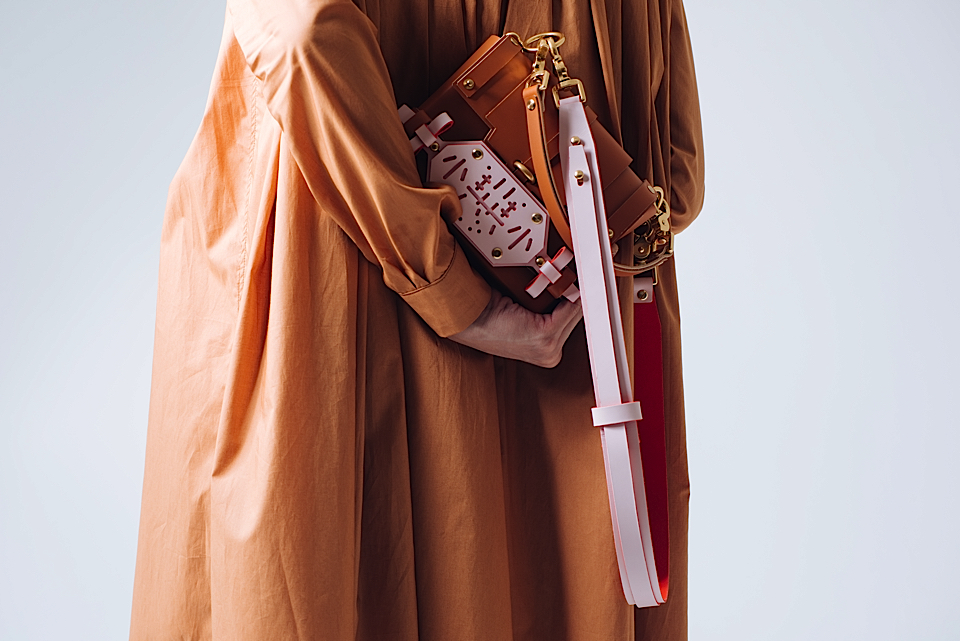
Niels Peeraer AW16 Campaign
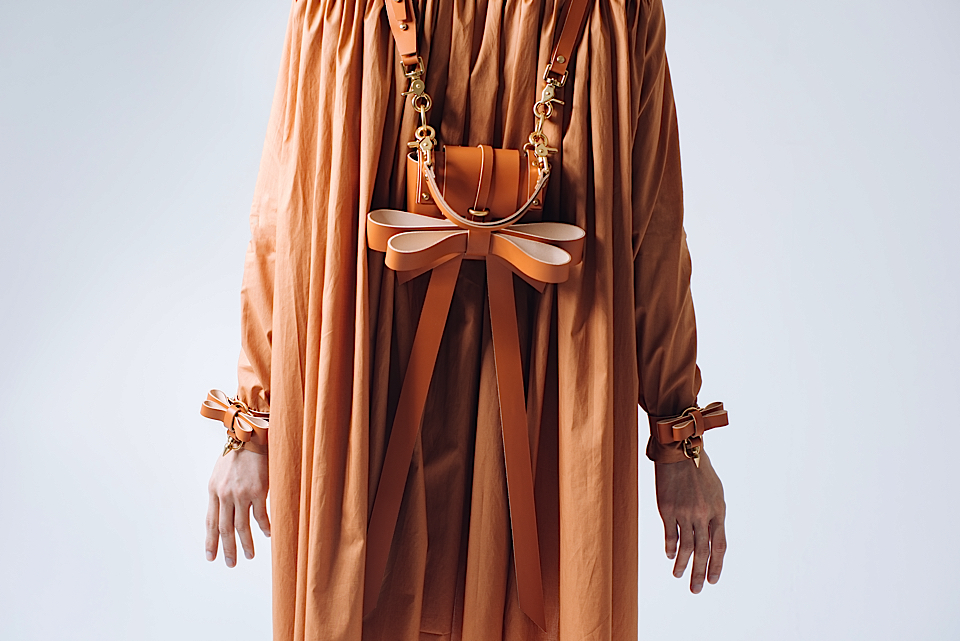
Niels Peeraer AW16 Campaign
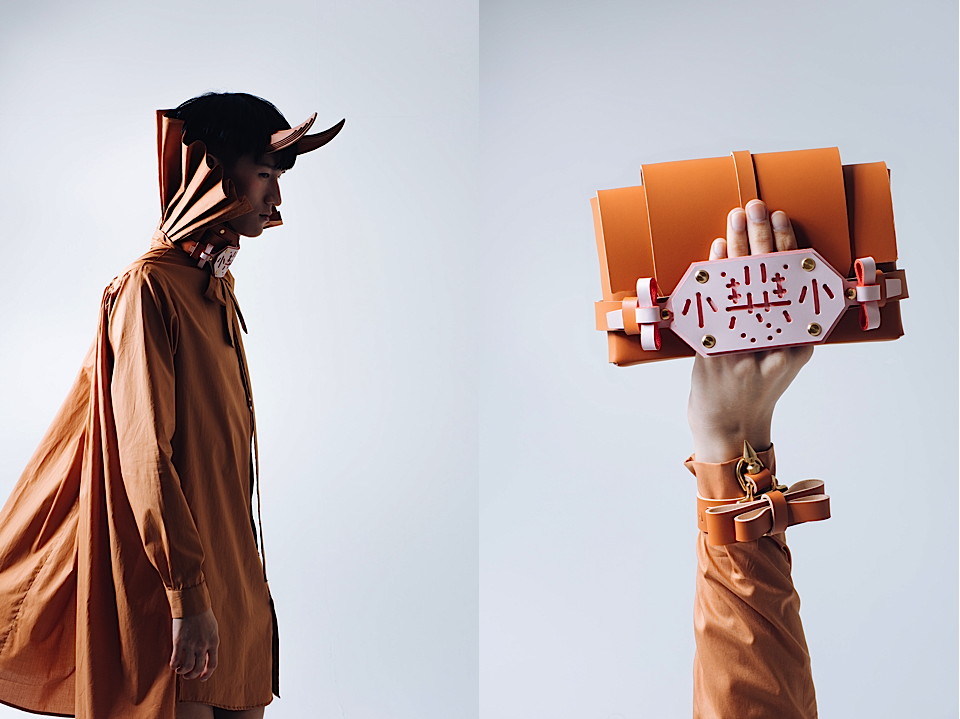
Niels Peeraer AW16 Campaign
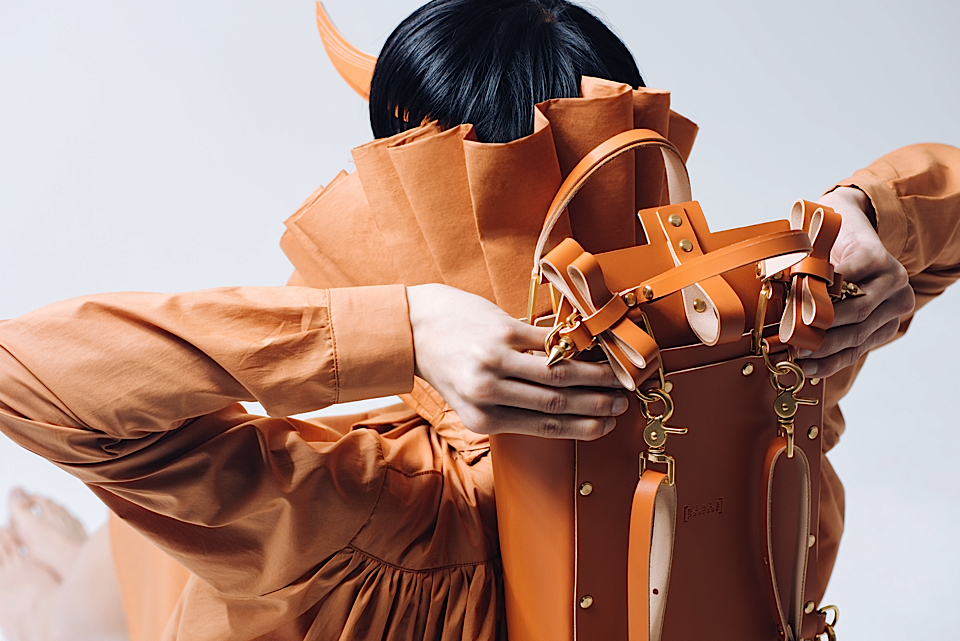
Niels Peeraer AW16 Campaign
after migration
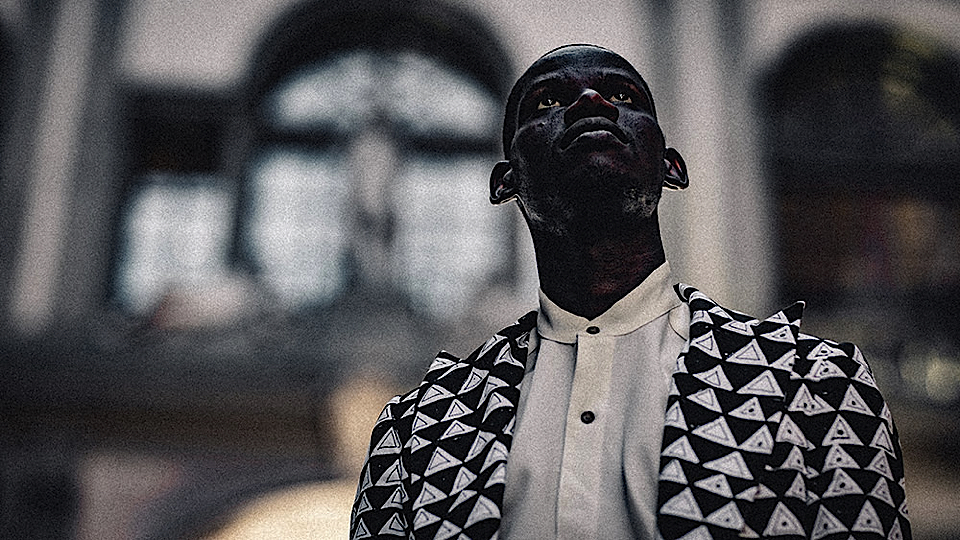
Nigerian-born fashion designer, writer, afrobeat artist and attorney Walé Oyéjidé and tailor Sam Hubbler are the duo behind the Philadelphia-based menswear brand, Ikiré Jones. Combining West African aesthetics with Neapolitan tailoring, the brand strives to create collections that tell a story. The fashion editorial for its latest collection, After Migration tells the story of African asylum-seekers living in Italy.
While in Florence, Oyéjidé noticed that locals perceive African immigrants as peddlers, vagrants or outcasts. The migrants, who have fled their homes to seek asylum in Europe, are subjected to ostracism in their adopted countries. To reframe the migrants as real people and not invaders, Oyéjidé employed men from a local migrant shelter, to model in his Fall 2016 collection.
Oyéjidé, the creative director on the shoot, said he felt it “was important for many reasons to put- the migrants- in front of the camera, not as props, but to convey their unique perspectives.”
Incorporating the models into the editorial also gave Oyéjidé a platform to highlight other issues such as the lack of African models in high fashion, the negative representation of migrants in global media and the shortage of employment opportunities for migrants settling in new places.
Kate Walker
www.ikirejones.com
This post was originally published on the creative platform of Design Indaba
Photography by Neil Watson of 10Leaves - Creative Direction/Design by Walé Oyéjidé
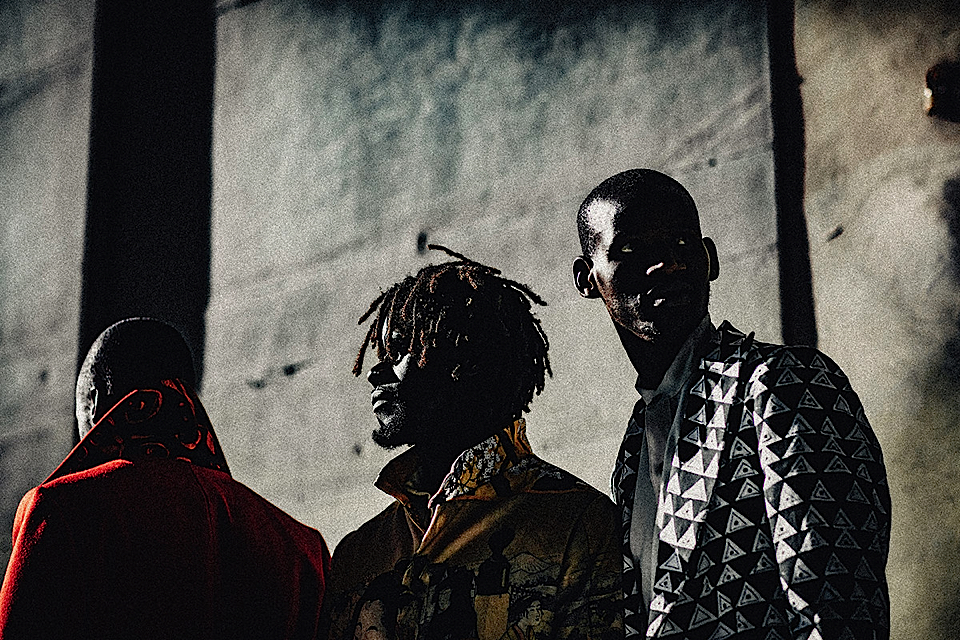


clothing & digital culture
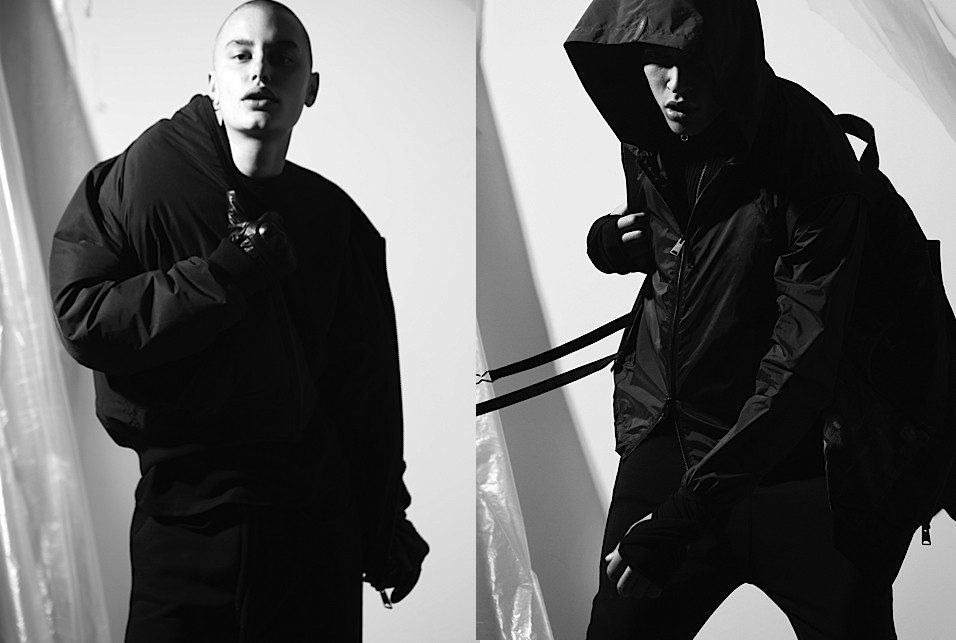
DRKN is a clothing label about street fashion that promotes gaming & digital culture. They work with European textile manufactures to create edgy, unisex, dark clothing with clear references to gaming. The main inspiration comes from Counter-Strike and you can see how that is reflected on the label through their jet-black bomber jackets, pullovers and vests that feature the game’s train map as a geometric camouflage print.
“Darkness represents the anarchy of the online worlds we live in and it also a consequence of the inspiration we get from all the dystopian worlds we find ourselves in when we play games. The darkness is our world—our heritage.” DRKN Designer Erik Bjerkesjö
DRKN got together people that are « globally connected in this subculture », and that can « apply their power very quickly ». It is about time this huge segmentation of the market - that just keeps on growing - had a label that truly represents them.
« What striked me the most with DRKN is that we are entering a new market, where basically no one is. With this collection, we offer an alternative to most clothing brands out there. We do not have a traditionally defined cultural or social heritage and we have no preconceived idea of who our customers are in the real world. Instead, we want to inspire people to embrace the values of the virtual world and encourage them to not restrict their imagination and become whoever they want to be.
I have been focusing on creating a unisex brand identity. Any person who, just as us at DRKN, feels that they are part of a very dark and chaotic world, partly due to the online worlds they live in, will understand our inspiration and what we fight for. We want to show the world that games matter and that gaming culture, as well as people dedicated to games, should be taken more seriously. Gaming is actually a really cool and interesting lifestyle. With this collection we want people to be able to express that passion and achievement. We are also really into science fiction and how the world is being changed by technology. We believe in a world where humans are much more enhanced by technology, which is something you will be able to see us work with in the future.
We do it by giving people the opportunity to express their online identity through their DRKN clothing, in a way that makes them proud of who they are. The DRKN brand is in itself connected to gaming and digital culture and then we have a lot of pieces that contain direct references to games, ranks and achievements. We also give our customers the ability to customize their look with different patches based on their favorite game, team and rank. Any brand targeting youth culture should definitely consider the online world and how people build and want to express their identity.” DRKN Designer Erik Bjerkesjö.
Runway pictures: Photo courtesy of www.bon.se | Styling Qhris Magsino | Hair & Make-up Martin Sundqvist
Lookbook: Photo by Alex Wessely | Styling by Qhris Magsino
MANIFEST
We are online anarchy
The world we live in is marked by the darkness and anarchy of online worlds and science-fiction. Our identity is defined as an ongoing process, where everyone is equal, restricted only by the limitations of one’s own curiosity and ambition. The ever-increasing number of people living in online gaming worlds is now in the hundreds of millions, and counting. Old truths by which the world is organized are quickly losing their significance.
We shape future society
As the online experience continues to merge with the offline existence, we believe in a world that blurs the lines between reality, fiction, genders, generations, ethnicities and social classes. We believe that gamers are pioneers of future society. Together, we can achieve anything. The darkness is our domain, its terrain not yet fully charted, an unmapped landscape with potential to rewrite the future.
We do not fear what must change
In an era of capitalist intrigue and surveillance we side with the anonymous anarchist who wanders beyond the limits imposed by others, in the spirit of the black mask. We believe that broad-minded technological progress is the only the way to enhance mankind. We welcome the time when robots walk among us as equals.
We are unrestricted
As creative minds, we refuse to acknowledge superficial boundaries and rules set up by others. Rather than being limited to one specific product, DRKN is many things. At our core lies the power of human imagination, no longer restricted by past notions of who we once were, but instead set on creating new understandings of who we have the power to become. This is the world now. It belongs to you.
Lydia Janis Caldana
www.drkn.com
Lydia Janis Caldana is a trend forecaster with a creative background and both eyes on the future. Amazed by the opportunities new technologies bring at an exponential rate, she uses her abilities to predict movements and change to help companies, governments and disrupters be in charge of a more sustainable, inspiring and tech-solutioned world. Lydia keeps a blog about technology, is the LatAm correspondent for The Future Is Already Here, a think tank for a better world, and co-curates Ello’s official community about tech, culture and innovation, Ello Future.
http://lydiacaldana.tumblr.com/

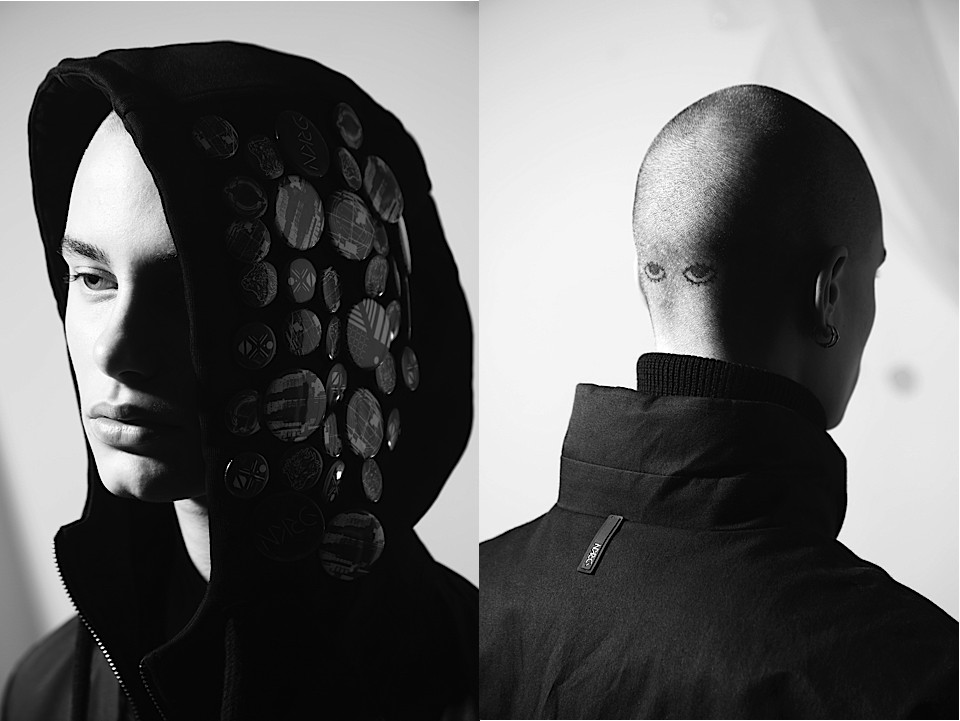
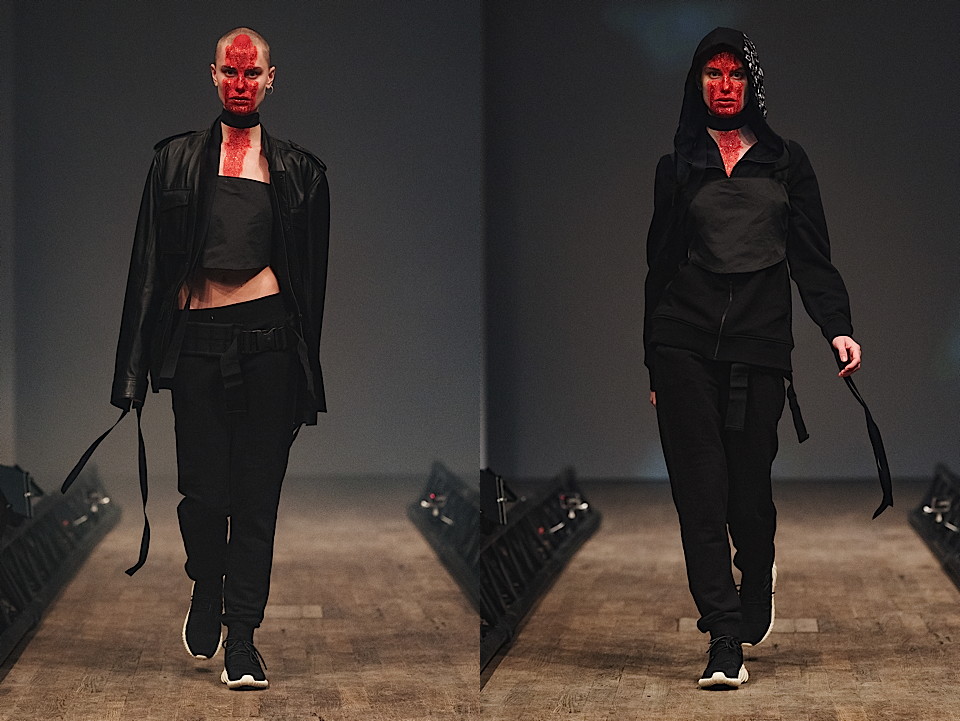
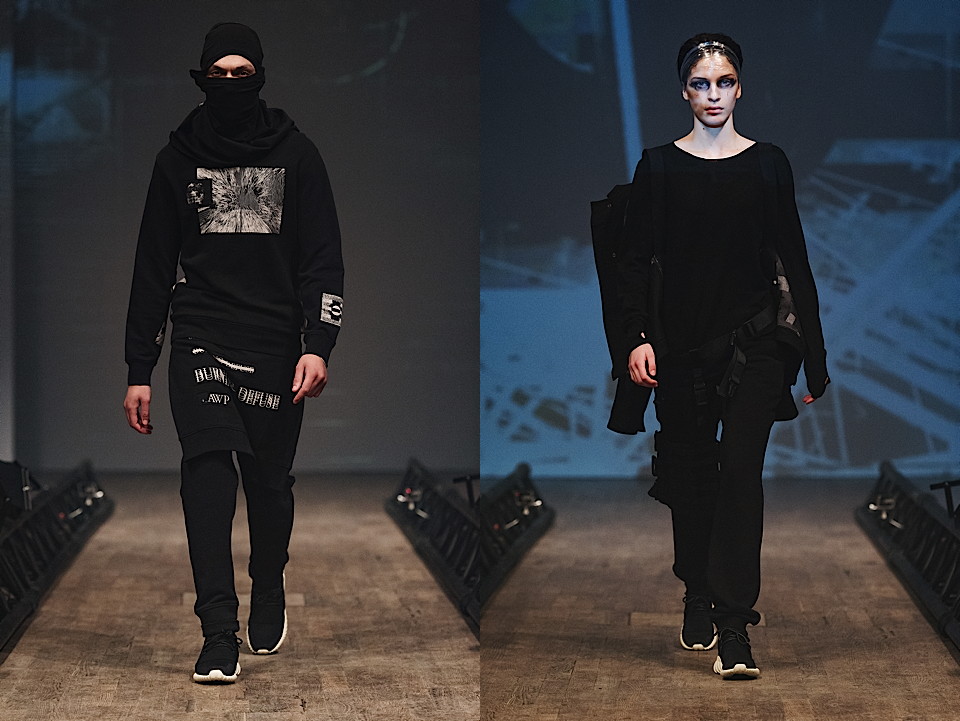
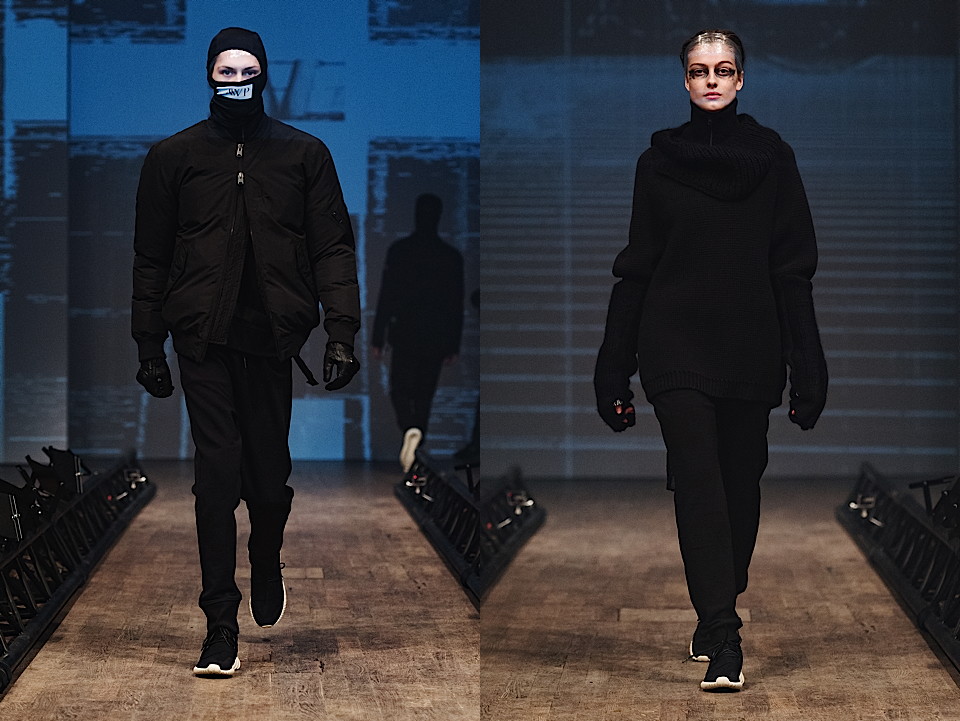
worn again
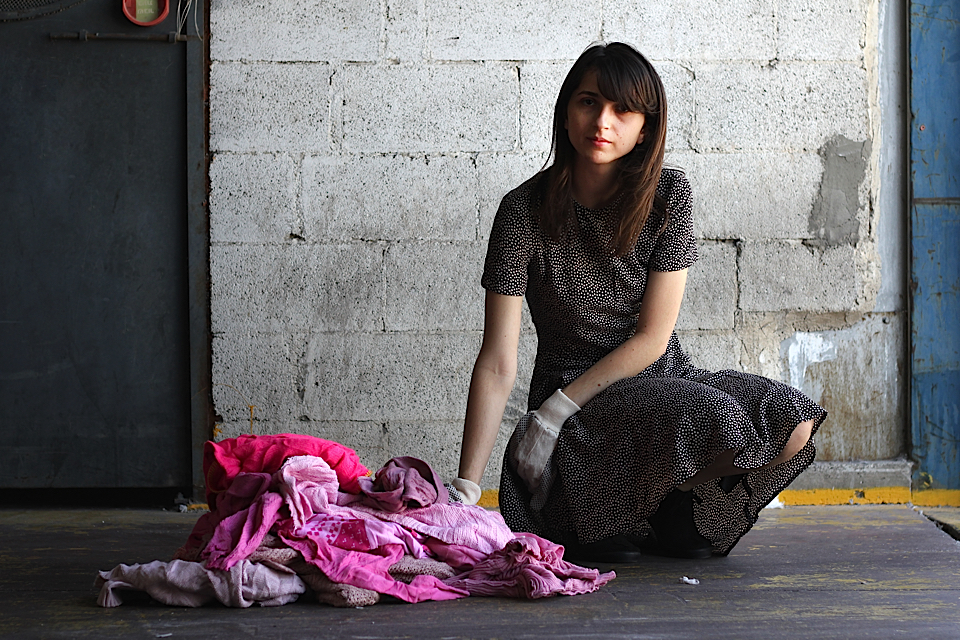
photo by Madlen Cohen
“Recycle is not a sexy word”, states Dana Cohen, an Israeli fashion designer which recently graduated from Shenkar College in Tel Aviv. Cohen (26), winner of 2015 Fini Leitersdorf excellence award for display of creativity and originality in design, is looking for new ways to revive thrown away garments. She manages to do so in an innovative, inspiring collection based on textiles she created by reconstructing second hand knits into beautiful abstract fabrics.
How did you come up with the concept of “Worn Again”?
I was captured by the idea of sustainability while I was living in Amsterdam as part of a student exchange program with AMFI (Amsterdam Fashion Institute). I was looking for ways to create garments from existing materials and wanted to design a collection that would send a positive message. I noticed I have many unused textiles at the studio and that triggered the idea. I wanted to take what people consider as ‘waste’ and bring it back to the realm of fashion. The next step was researching the process of mass production and understanding where I can source materials for the collection.
What triggered you to work with old, thrown away garments?
People perceive recycled products as unattractive or invaluable. I wanted to challenge this perception, giving those garments a “second chance” and promote the idea of reducing textile waste. It was during the recycling process that I suddenly felt that by working with used garments I am able to touch people’s past, and turn it into a future.
The collection consists of different approaches to pattern and shape. What were your primary sources of inspiration?
The stripes and argyle patterns are taken from the more traditional sweaters. I used the symbolic geometric shapes which are associated with old, forgotten garments. But my main inspiration actually came from the process itself. The samples I produced reminded me of Jackson Pollock’s drip paintings. I decided that each color combination would “quote” one of his paintings, which let to a rather abstract result.
Which types of materials compose the collection?
The collection combines two textiles; recycled knits that were thrown away, and the knits I designed myself.
I used the old knits to create different industrial materials like isolating material, and incorporated them with the ones I knitted myself into a whole “new textile”. This transformation between the knits is purposely visible, and illustrates the recycling process.
And how did people react to the idea of recycling textiles?
At the beginning everyone were very skeptical about the result. They thought the result probably won’t look good enough for the runway. You know, the word ‘recycle’ isn’t very sexy but it holds an incredible potential. I had a feeling I could make them change their minds, and I am glad I trusted my intuitions.
True, people often perceive waste as devalued, useless. how do you see it?
I see waste as a valid material, so why can’t we treat it just like any other textile? Reducing waste should be something we all thrive to, not just in the fashion industry. Eventually, we all want the world to be a better place to live in, so why not do something about it?
Do you think we could apply this process of “transformation” in large scale commercial production?
This is exactly the challenge I am facing these days. The transformation process is almost impossible in a large scale production, but I am trying to find ways in which recycled textile could be incorporated into mass production for various purposes.
Where do you see fashion going in terms of up cycling and the use of waste?
Fashion brands are definitely becoming more sustainable. Major companies like H&M lead environmental friendly initiatives and there is a global awareness in the industry.
And finally, if you could you choose 5 words to describe the collection…
Original, soft, textured, sustainable, positive
Lior Fisher
Contact Dana
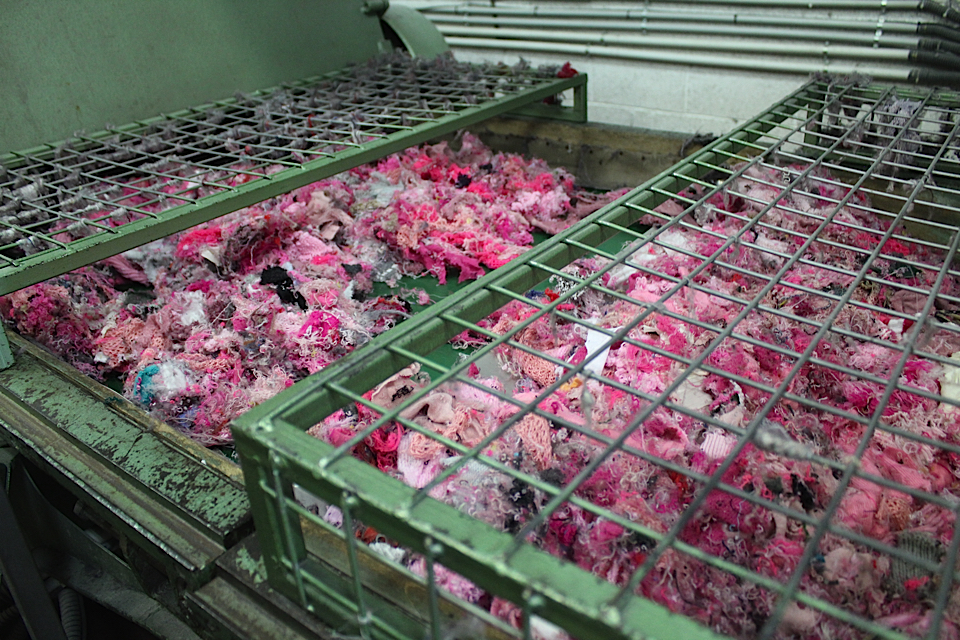
photo by Madlen Cohen
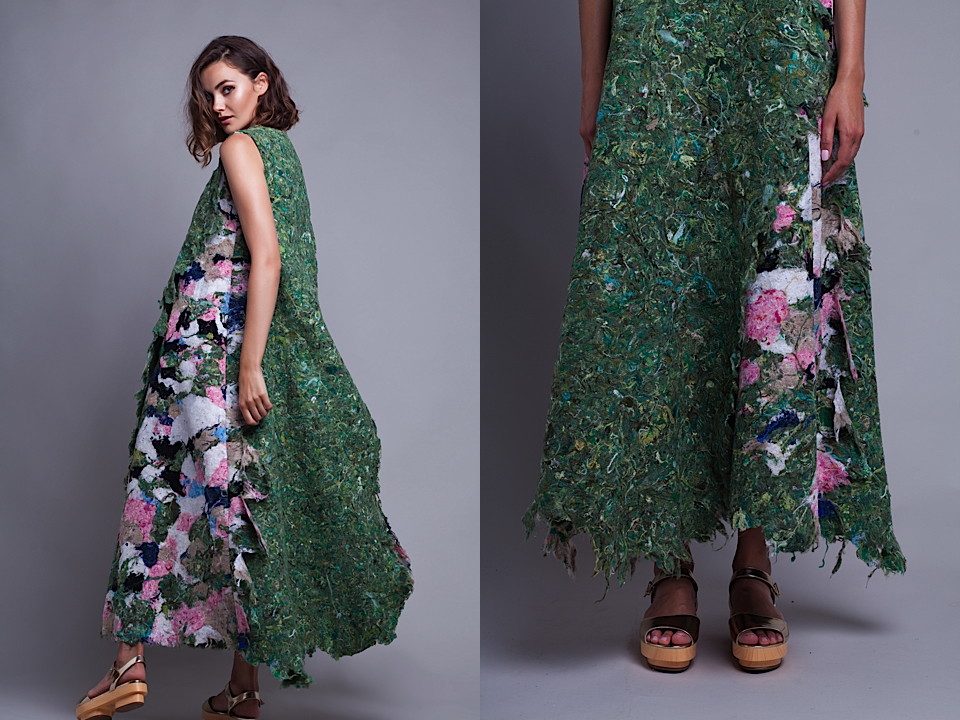
Design by Dana Cohen - Photo by Ron Kedmi
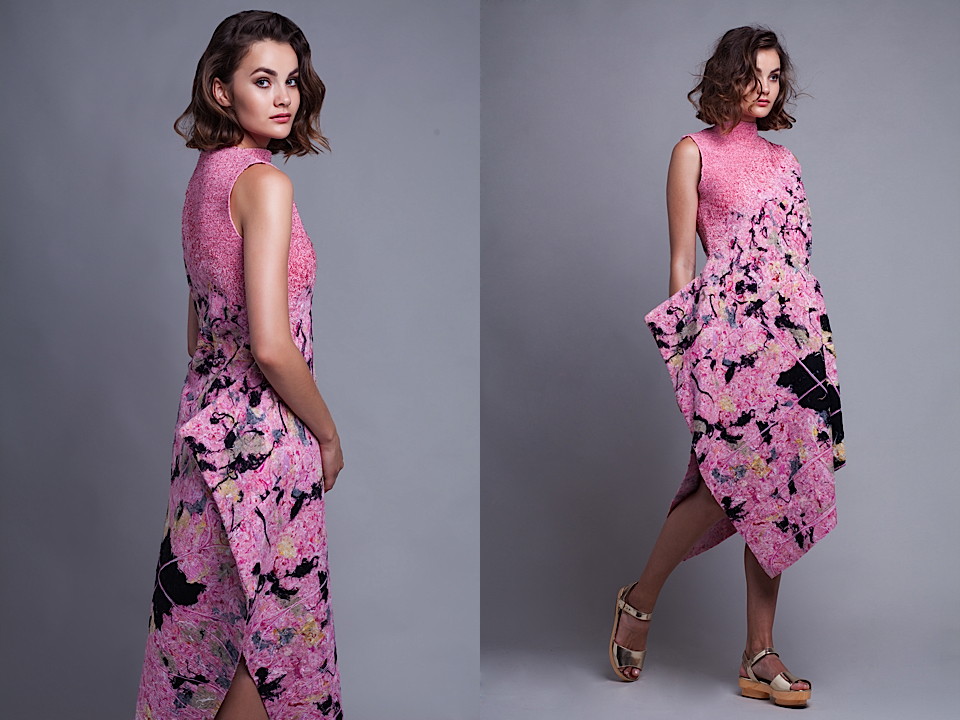
Design by Dana Cohen - Photo by Ron Kedmi
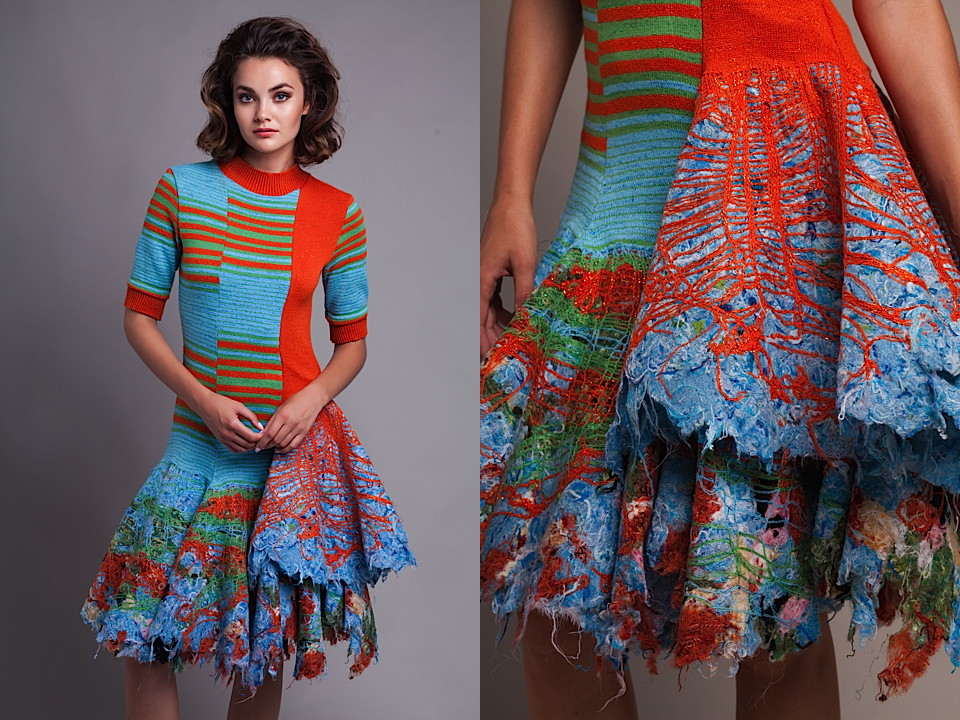
Design by Dana Cohen - Photo by Ron Kedmi
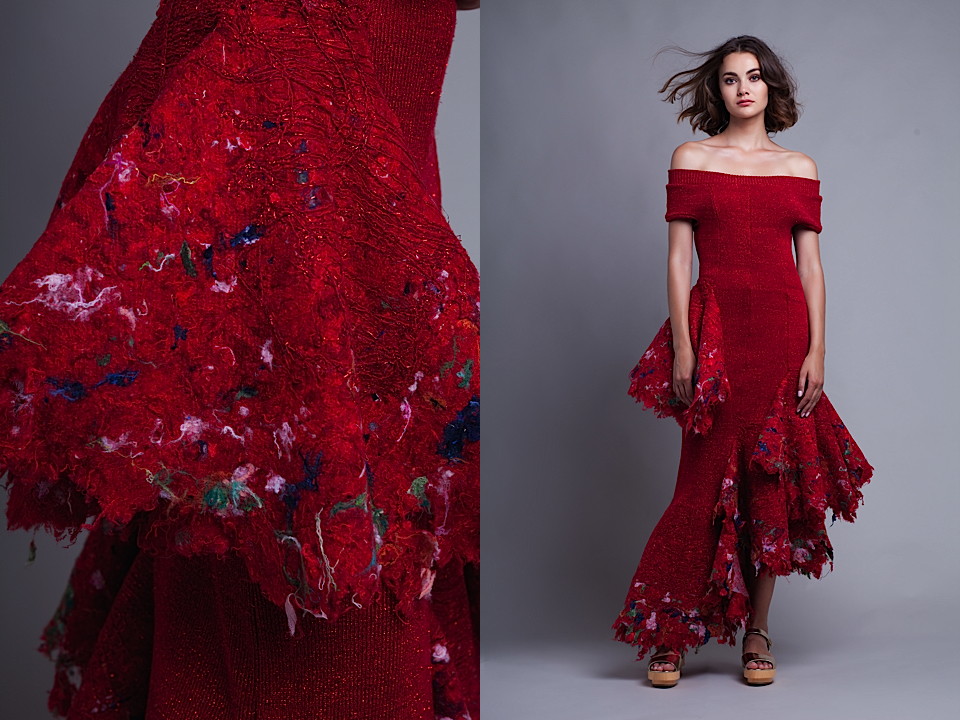
Design by Dana Cohen - Photo by Ron Kedmi
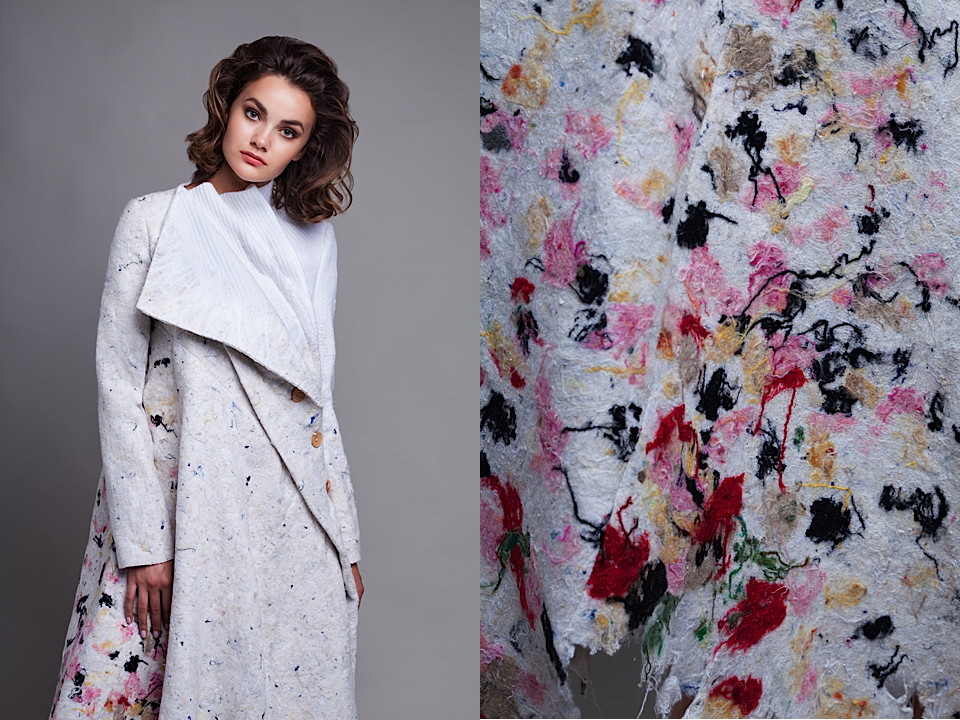
Design by Dana Cohen - Photo by Ron Kedmi
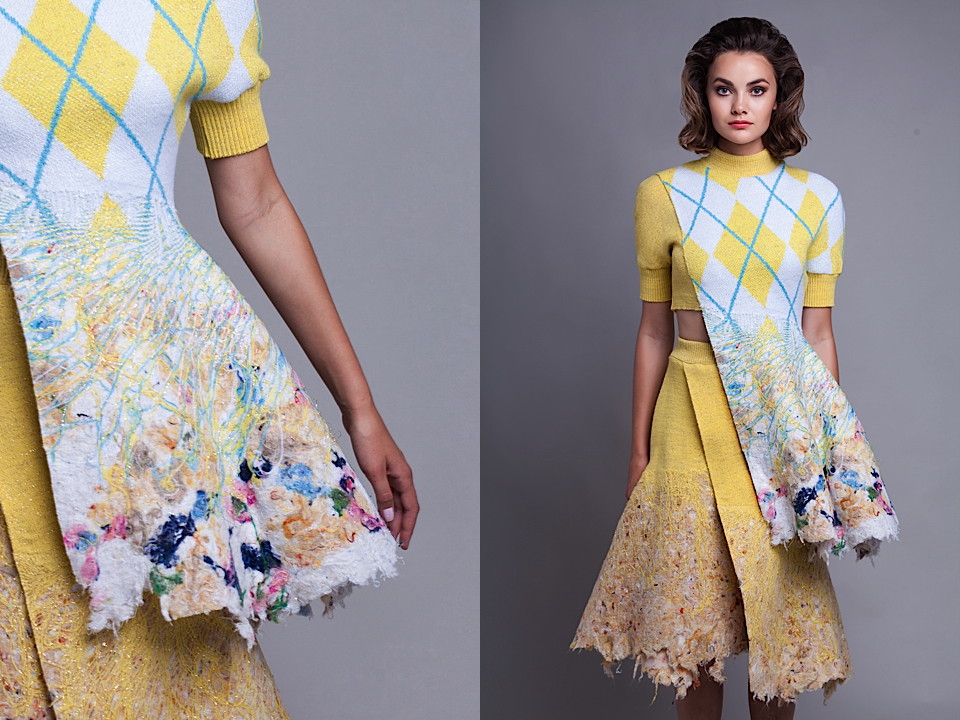
Design by Dana Cohen - Photo by Ron Kedmi
make it rein
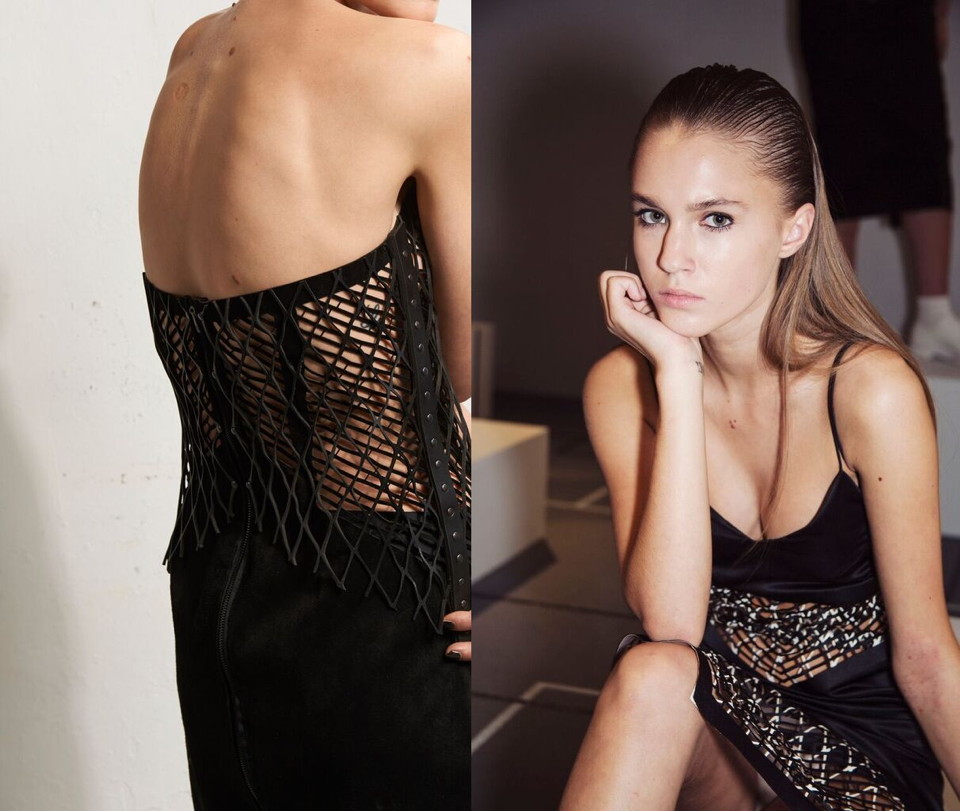
“It is a tough industry out there, and to be honest, one that seems built on a dying model, thanks to the digital age we are in,” comments Rebecca Morter, one half of London based fashion house: Rein. An echo, resoundingly in tune, with the overarching sentiment outlined in Li Edelkoort’s Anti-Fashion Manifesto: asking the fashion industry to suit-up, and accept that the once entrenched, tumultuous turnover of “fast-fashion” systems are obsolete, as we embrace a brave new world of personal expression, within a savvy, socially connected, digitally driven, marketplace; one with increasingly elevated expectations. Here, #ootd and #fwis hashtags become the building blocks of brand stories, and for the consumer, self-actualisation is as valuable as any monetary currency: the “statusphere” of aligning oneself to a cause, or belief, by wearing and sharing; clothing as a vehicle for expression, that goes beyond the aesthetic.
On top of this brave new world, and fuelled with genuine altruistic passion to celebrate the female form - and the explore the relationship between body and clothing - are Rebecca Morter and Gemma Vanson: Co-Founders / Designers at London fashion house, Rein. We talked to them about their experience of setting up a newly established brand, and their unique, compelling backstory.
Who or what inspired yourself and Gemma to « make it rein » ?
We graduated in 2013 and were lucky enough for our collection to receive a great wealth of press: worn by Lady Gaga, EVE, Charlie XCX, Little Mix, and so on. It was around this time that we decided to continue making garments focusing on empowering women, especially the strong, incredible women who had already worn our pieces and really brought them to life. We began exploring how the clothing could act as a voice; to challenging the socially acceptable, women as a victim to the male gaze, and how the pieces could empower through both revealing, and concealing, the body. We were lucky to be offered a spot to showcase at London Fashion Week Showrooms, and from that point we officially founded REIN, showcasing our first full collection, in February 2015.
With Rein being created for, and inspired by, women, do you feel aligned with / influenced by, the sense of « girl gang »culture that feels particularly of the moment?
To an extent, yes. We are all about empowering and uniting to give women strength and wholeheartedly supportive of women succeeding. However, for us, it’s about full blown equality, not man-hating. Rather, striving towards an ‘equal playing field’’ feel, where women, where everyone, has the same rights / voice / responsibilities / expectations.
You have a growing fan base of musicians and artists. How important is music and that scene, to your brand?
For us, music has always been at the forefront where there are powerful, exciting people. The artists that we are drawn to are those who stand out; are experimental and unafraid to be themselves. I like to think that our collections are balanced, offering a spectrum of innovative and original garments, from day to evening. From the wearable, to the outlandish and statement pieces; it’s these pieces that come alive when mixed with theatrics, performance and music.
As a young company, how has your experience been establishing a brand, in London; the good and the bad? Do you see your future long-term in the city?
It’s been a crazy process! A huge learning curve, full of trial and error. We only properly launched this year, in February, so we are still in the stages of setting up the brand, and it will take time before we can settle into a company routine.
It is a tough industry out there, and to be honest, one that seems built on a dying model, thanks to the digital age we are in. It has its pros and cons, but ultimately you become caught in a catch 22. It’s the best time to be a new brand, because you have direct access to your customers, via social media, and you can build a following; test and learn without having to go via wholesale stores. However, this takes time to grow, with a lot of focus on digital platforms, and shouting above all the noise from everyone else. The customers want to know you are in stores (that they can buy you easily) and on the other hand, the boutiques are reluctant to order from new brands, as business isn’t great, unless they are one of the few who have adapted well online like, net a porter, even asos; they want to see hype, and a strong social media following, before taking the risk. So, you can see why it’s such a crazy vicious circle! It’s about figuring out where you can fit into this.
London itself is the heart of innovative, edgy fashion. It also is the only city, in my opinion, that values the purpose and concept behind the artistic decisions you make as a designer.
Your collections, although sexy, have a real stealth mode wearability about them; the sense that women can just get dressed and get on with the business of « living », while wearing the clothes. Was the balance of looking great and practicality of clothing important, in your design process?
We want the garments to be versatile. The silhouettes are classic, simple, and wearable; pieces that form the look and remove the need to worry about how the desired look will come together. The applications and techniques we use are innovative, different and unusual; this is our brand’s purpose and backbone. We want the women that put on our clothes to feel strong, confident and special. We want to give them the opportunity to wear clothing that is different and exciting, to take a stand on their own individuality. Neither myself, nor Gemma, have time to spend hours getting ready, and we think that reflects the vast majority of womens’ lives, so it’s important to us that the pieces are comfortable, versatile and long-wearing.
A lot of people worry that laser cutting is very fragile, but when using the right materials it is very durable and strong wearing; even enough to be put through the washing machine! Our knitwear is made from a sustainable possum wool, because it contains fur, the knits are very lightweight. They prevent odour from sweat, are washable and so much more! In every way we can we use the most forward thinking materials and techniques, and preserve comfort and practicality in the process.
Do you have any rules to live and design by: what keeps you focused?
Focus comes from the motivation of knowing exactly what you want. I’m not so good with rules, Gemma tries to enforce the same rule every season: « No drinks in the sample room, end of story. » Somehow, I’m always the one forgetting and breaking the rules; not a great role model for our interns!
Keeping true to REIN’s purpose is always at the forefront: “creating clothing to empower.”
Becky Willoughby
Becky Willoughby is a UK based Fashion Writer and Digital Content Curator with a passion for cutting edge, young independent design. She contributes to magazines and trend agencies, focusing on cool kids and cultural innovation. Excited by all current and emerging symbiosis between visual and material futures, she CoCurates Ello’s official community about tech, culture and innovation, ‘Ello Future’ and is a Staff Writer for Fizzy Mag, in Germany.
